This multimedia story is meant as a continuation of our great project under the title “The Roots” and is about who we are and why it is important for everyone to know and realize it, keep the memory and never stop doing researches.
So to compile the material and shape it properly, we were not only carefully picking up the subject, experts in the field and the team to do the job. We dived into the history of the Ukrainian “vyshyvanka“ embroidered skirt and the Transcarpathian embroidery on the historical dressings of the local nationalities, having carefully read the International Ethical Code of museum studies and studied the discussion among the Ukrainian museum officers on the dilemma between preserving an enlightenment as well. We spent 3 months doing research, doubting and double-checking, weighing up each next step and adding up the material with new facts and contexts.
And again, this multimedia story is not just about the historical attire but, first of all, on the code and the sacral message implied in the clothing. It was commonly done subconsciously, as a result of the shared historical memory. As in the case of Transcarpathia, these are the codes of unicity and originality and at the same time they are the codes of a dialogue between cultures and histories of various ethnicities.
Women’s dressing of 100-year old, belonging to residents of Borzhava, Tereblia, Korolevo, Turia, Teresva and Uzh valleys was rather different from that of Lemki, Boyki, Romanians or Hungarians and quite different from that of Gutsuls from Rakhiv district. Still, all of them are polyphonically chiming and highly natural in the joint composition of Transcarpathia’s historical clothing.
We have found an individual female character for each historical site, having her roots from that very area. In this way we want you to plunge into the past. And make everyone of you do the same.
We would like to lay a separate stress on the fact that we do not campaign for wearing authentic historic dressing. Moreover, we advocate for keeping it and studying your roots with it. With this purpose, we are publishing in this article some embroidery designs and some scientific comments to them. Well, these might as well become a road sign for doing a historic research and creating replicas of historic clothing.
We consider it is unfair: so many native Transcarpathians, leaving alone non-natives, may not have seen the attire and never thought about its content. As we were making up this article, we were also motivated by the feelings and thoughts like “Hey, many have not even seen this, never got interested in it and simply ignored.”
So one more ambitious aim of the article is to bring the Museum of Transcarpathia historic clothing online, by revisiting the existing knowledge and making a modern interpretation out of them.
We have created the article in cooperation with the Transcarpathian Museum of Folk Architecture and everyday life. Now we are inviting you to this new online museum. Let’s start with a brief glossary concerning what names there used to be for various clothes and their separate elements in Transcarpathia.
- Headwear: khustia, kestyman, sherynka, kerchief, chepets, wedding kosytsia, molodytsia.
- Shirts: dovhania, oplichia, koshulia, zaspulnytsia, romovanka, blouse
- Skirts: suknia, vigan, sukman, youbka
- Aprons: plat, shurtz, sapynachka, prypynachka
- Underskirts: fodrovantsi
- Shoes: postoly, bochkory, verbtsi, choboty, chyzhmy, bokontchi, topanky
- Socks: kaphuri, shtrimfli, fusykli
- Waistcoats: laibyk, kamizelka, bunda, vizytka
- Outwear: reklyk, uyosh, kozhukh, gunia, serdak, sirak
- Wally and jewelry: monysto, gerdan, sylianka, husoshi
- Waist belts: okrayka, pasyna, tkanka
- Accessories: double bags (the besahy), taystra, traystra
The district of Volovets. The Boyki nationality
The shoulder part of women’s shirts in Volovets vicinity used to be decorated with a lateral ornamental band, the so-called “naplechnyk”. It had a wide row of flowers in its base, set with narrow stripes, the “zasnurky” and those made of “perky”. The main ornamental patterns were presented by four-petal flowers, with the central kernel part of quadrangles and inscribed sidelong crosses in them. The red and blue color pattern is a witness to a certain time period: late 19th – early 20th centuries.
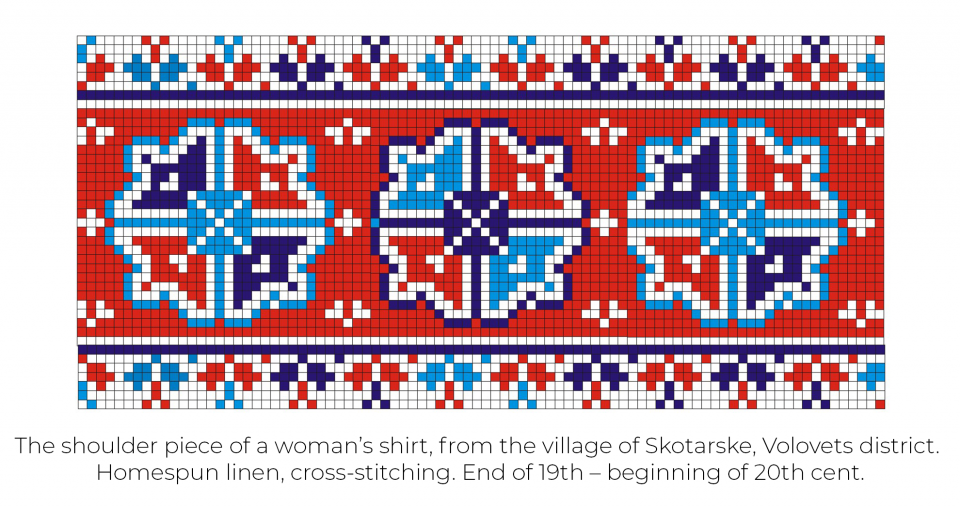
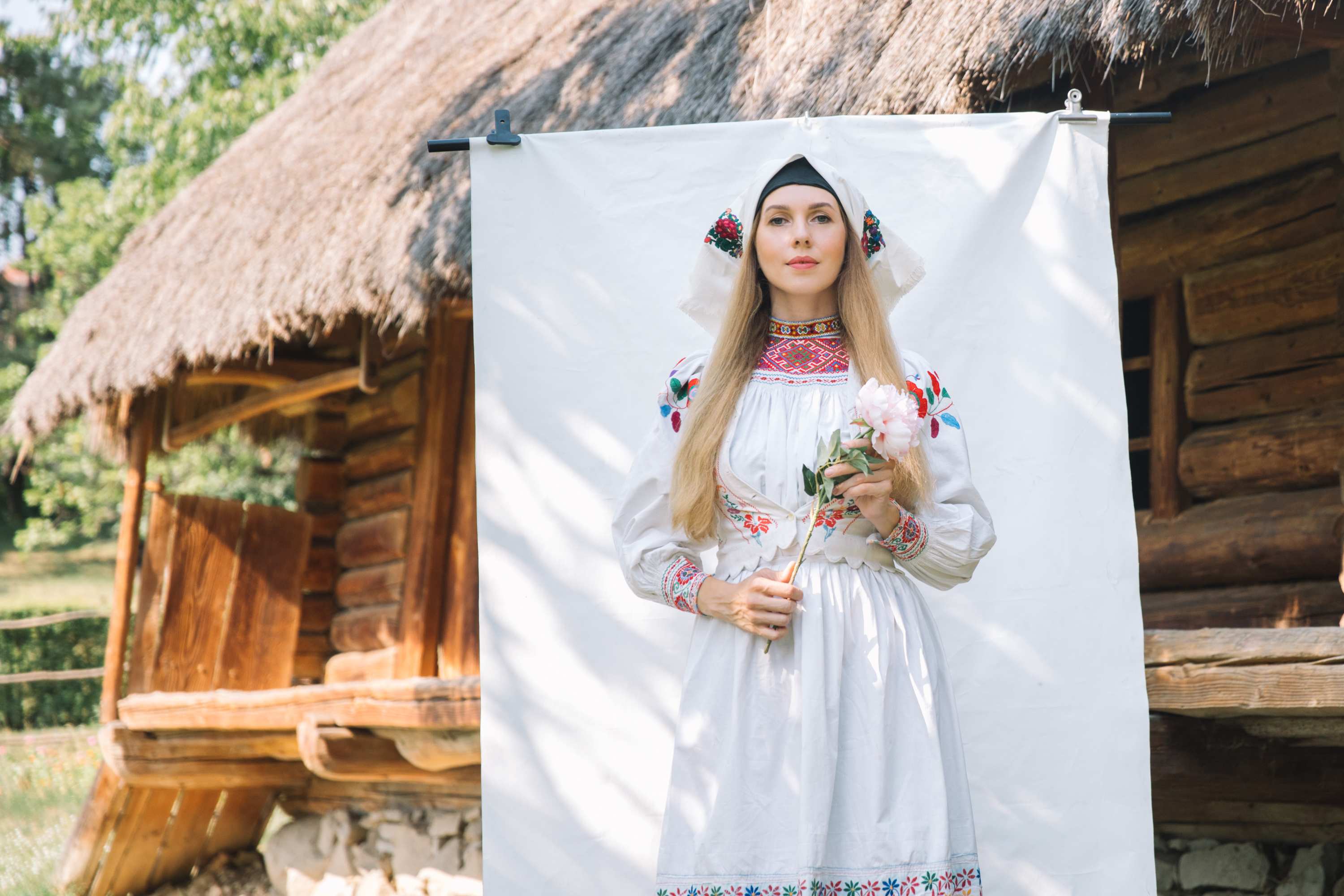
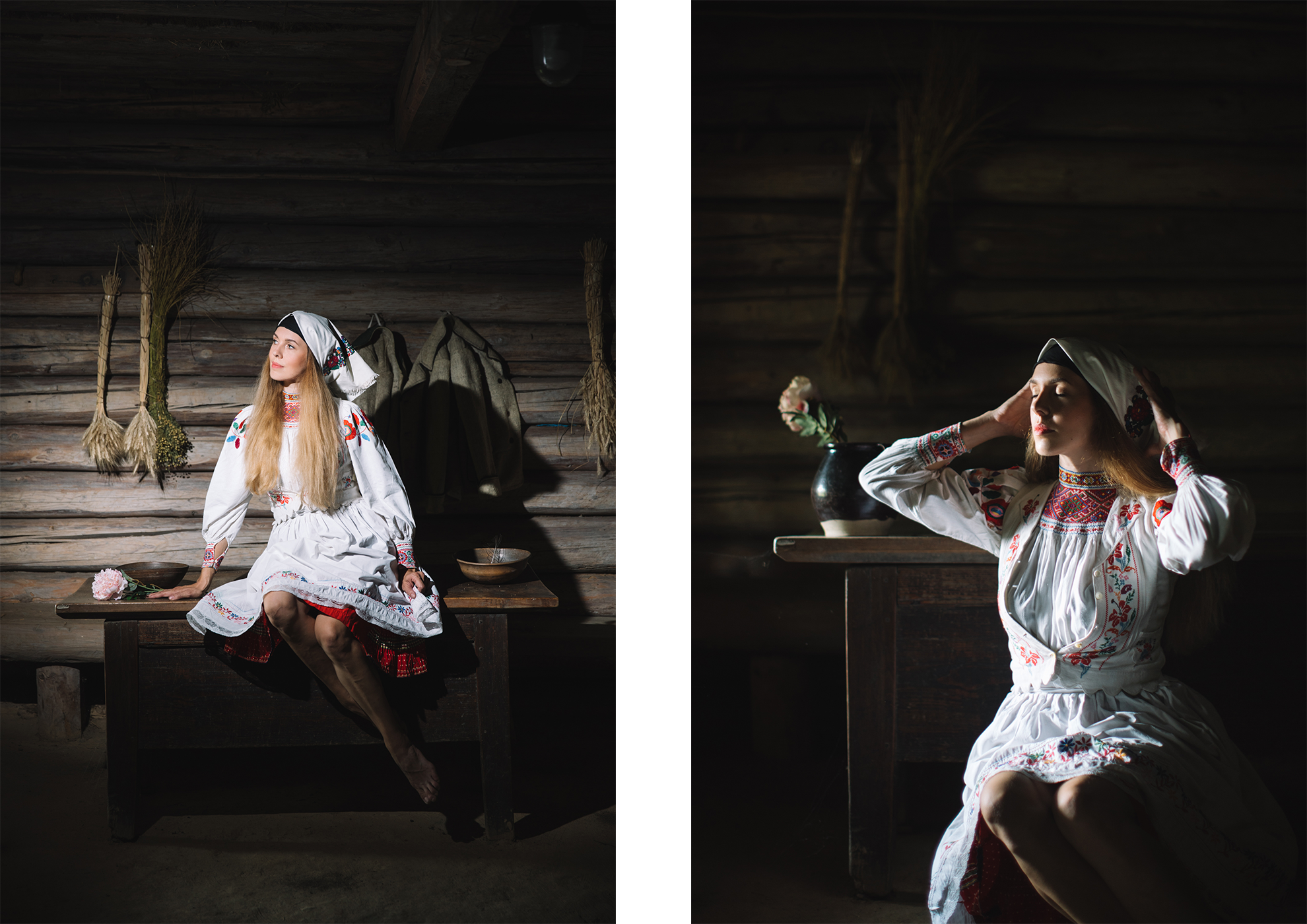
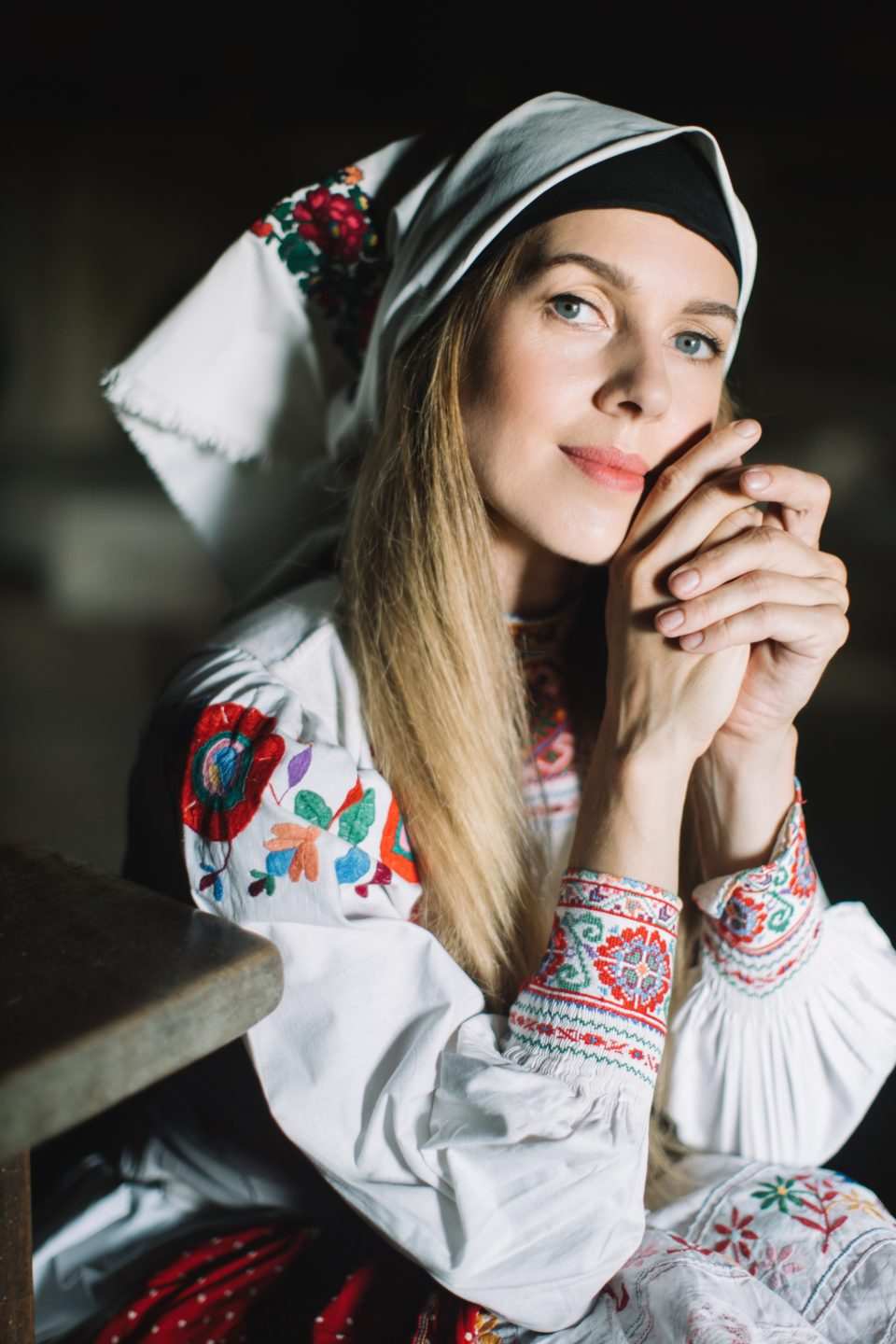
Iryna Yantso
leader of the “Antsia” girl-band, manager of the Rokash folk-rock band
I am proud to be a Subcarpathian Rusyn woman. My grandparents maternally were deported Lemky’s. I have recently visited the village where my granddad was deported from, and found his hut, still there. And I also visited my granny’s village, but alas, her hut was ruined. Those are villages of Wisłok Wielki and Moszczaniec, of Powiat sanocki, now Poland.
My paternal great-grandfather, Luka Cheshok, came from the village of Tyshiv of Volovets area. And my great-grandma was from Pidlozzia village.
The third bloodline of my kin is Khust area. My paternal grandpa came from Iza. They have lots of people with the surname of Prystaya. I was born in Khust and spent my early years at my grandma’s in the countryside. And all of my conscious experience is related to Mukachevo, I consider it to be my native town.
Velykiy Bereznyi area. The Lemky nationality
The women’s shirts worn by the Lemky nationality of Velykiy Bereznyi vicinity were most richly decorated in the breast part with wrinkles and in the upper shoulder part of the sleeves. They used to embroider whole design patterns of fllowers, the “kosytsi”. In the 1920-ies, the most popular patterns had with the basis of a large flower (usually a rose or a daisy), encircled with small daisies, violets, bluebonnets, buds and small leaves, locked into a garland.
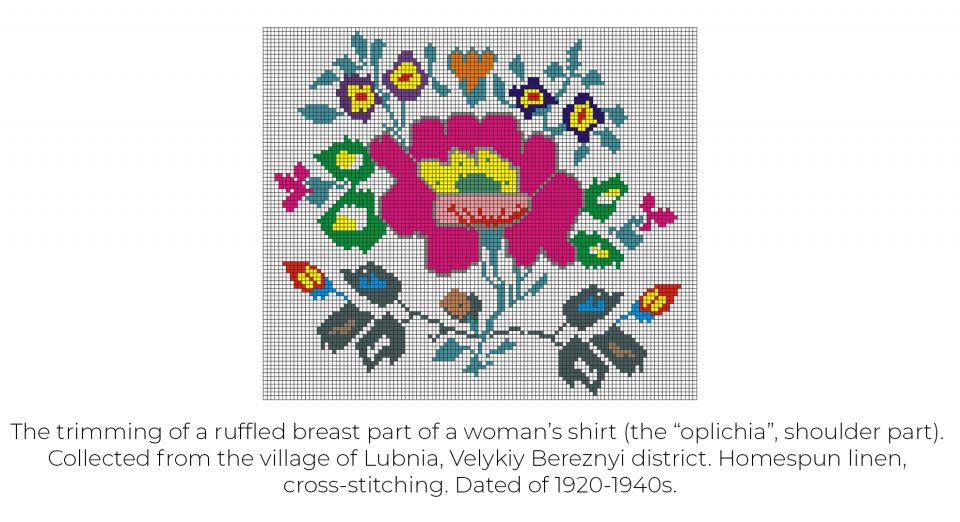
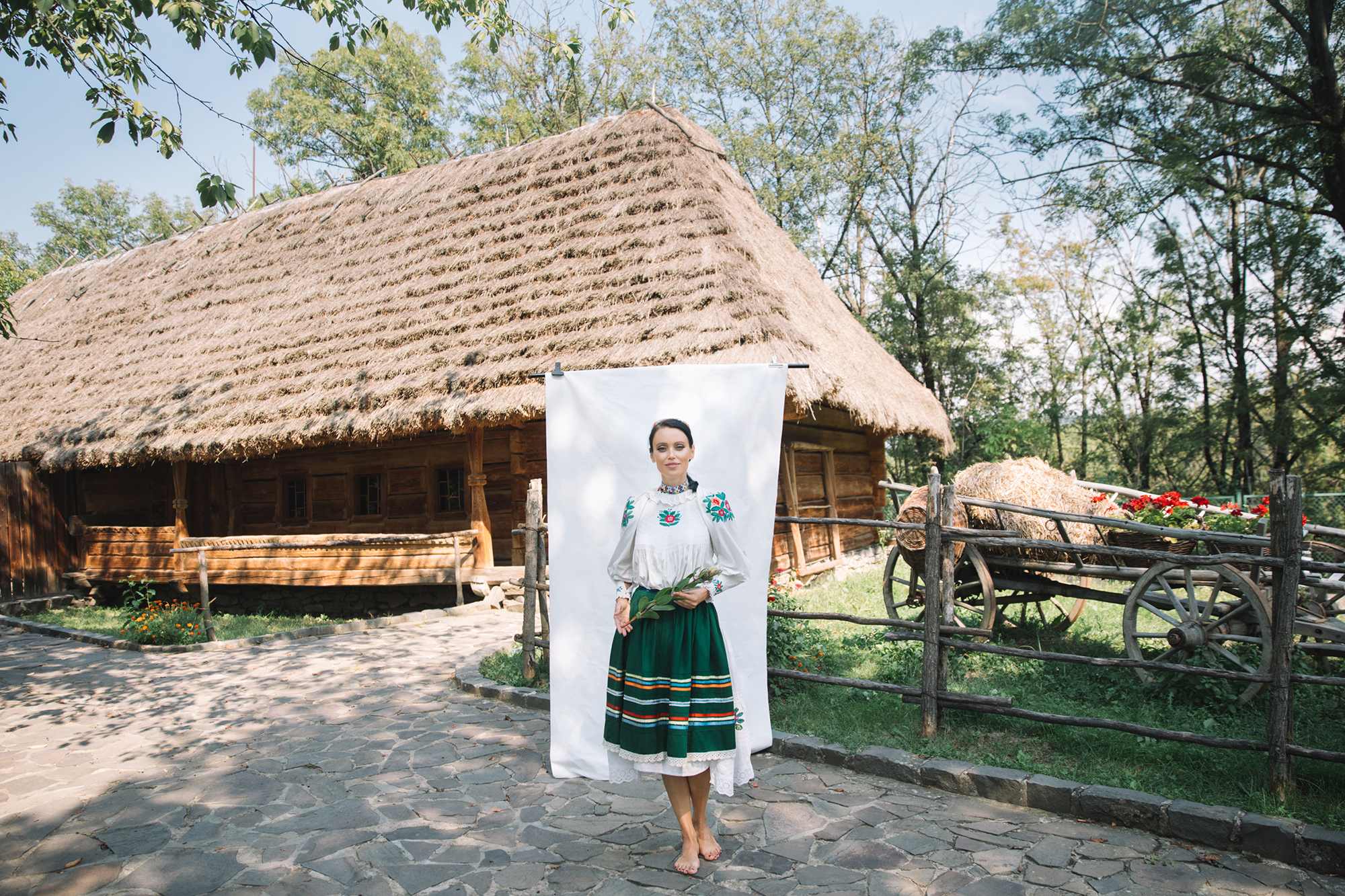
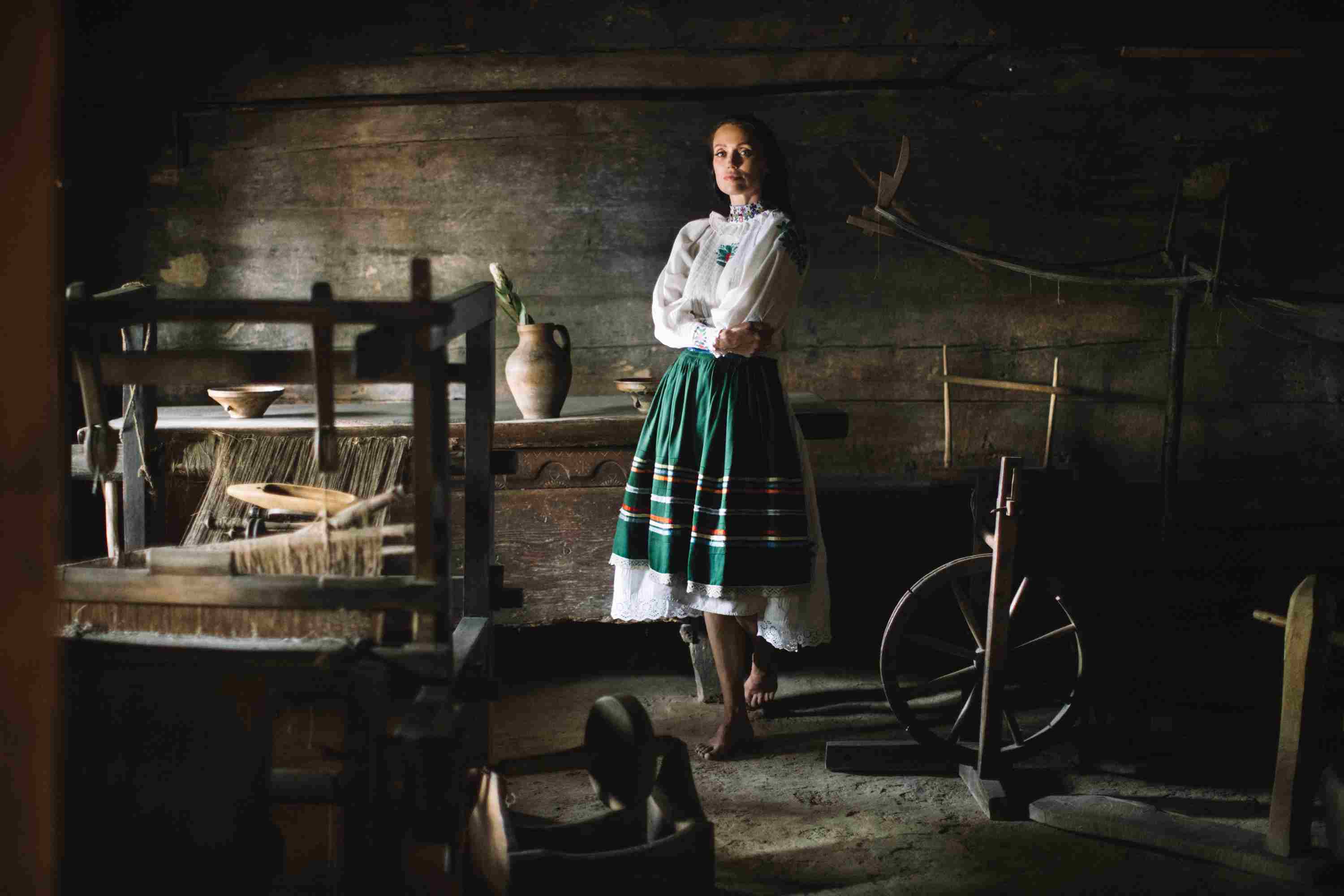
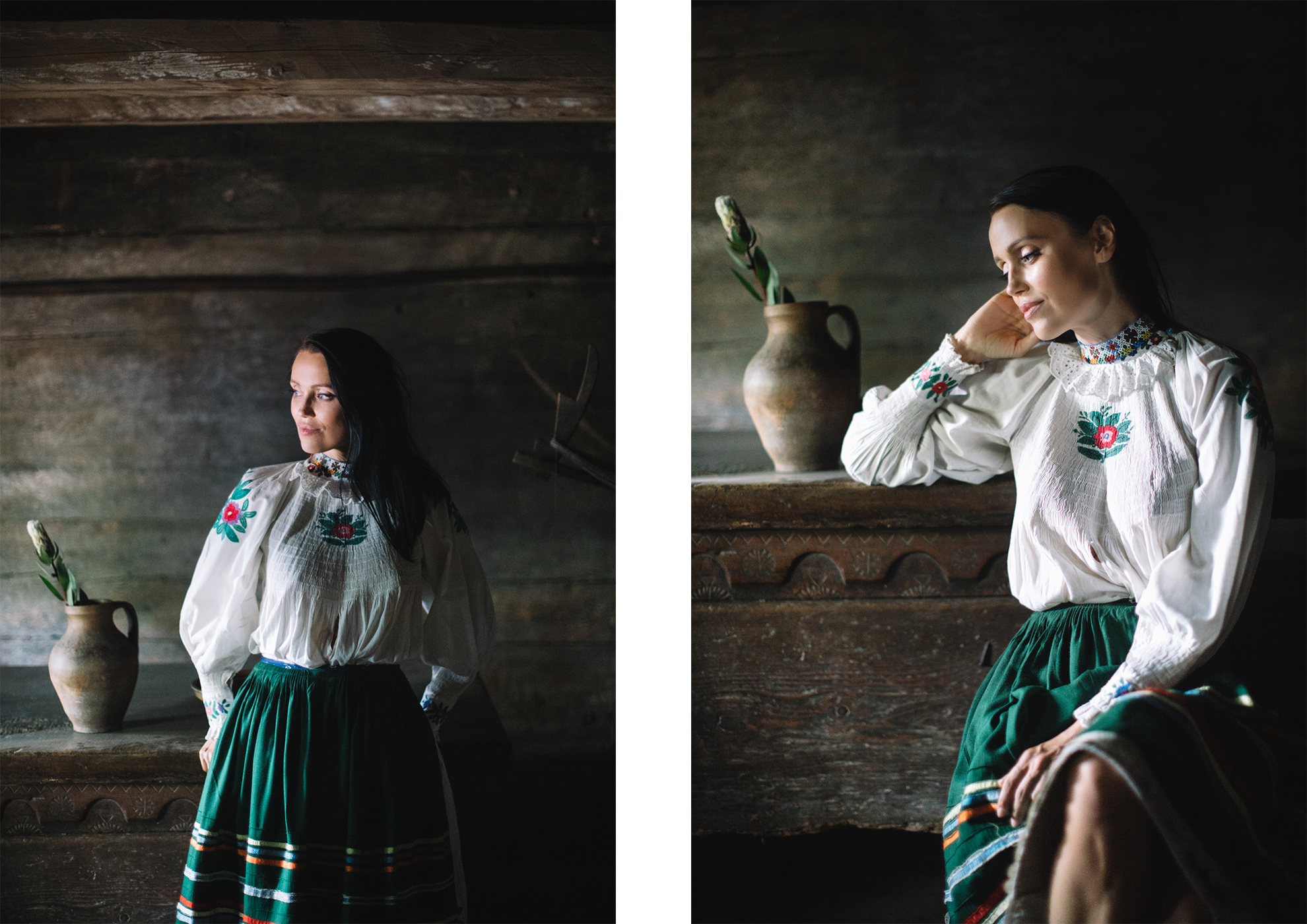
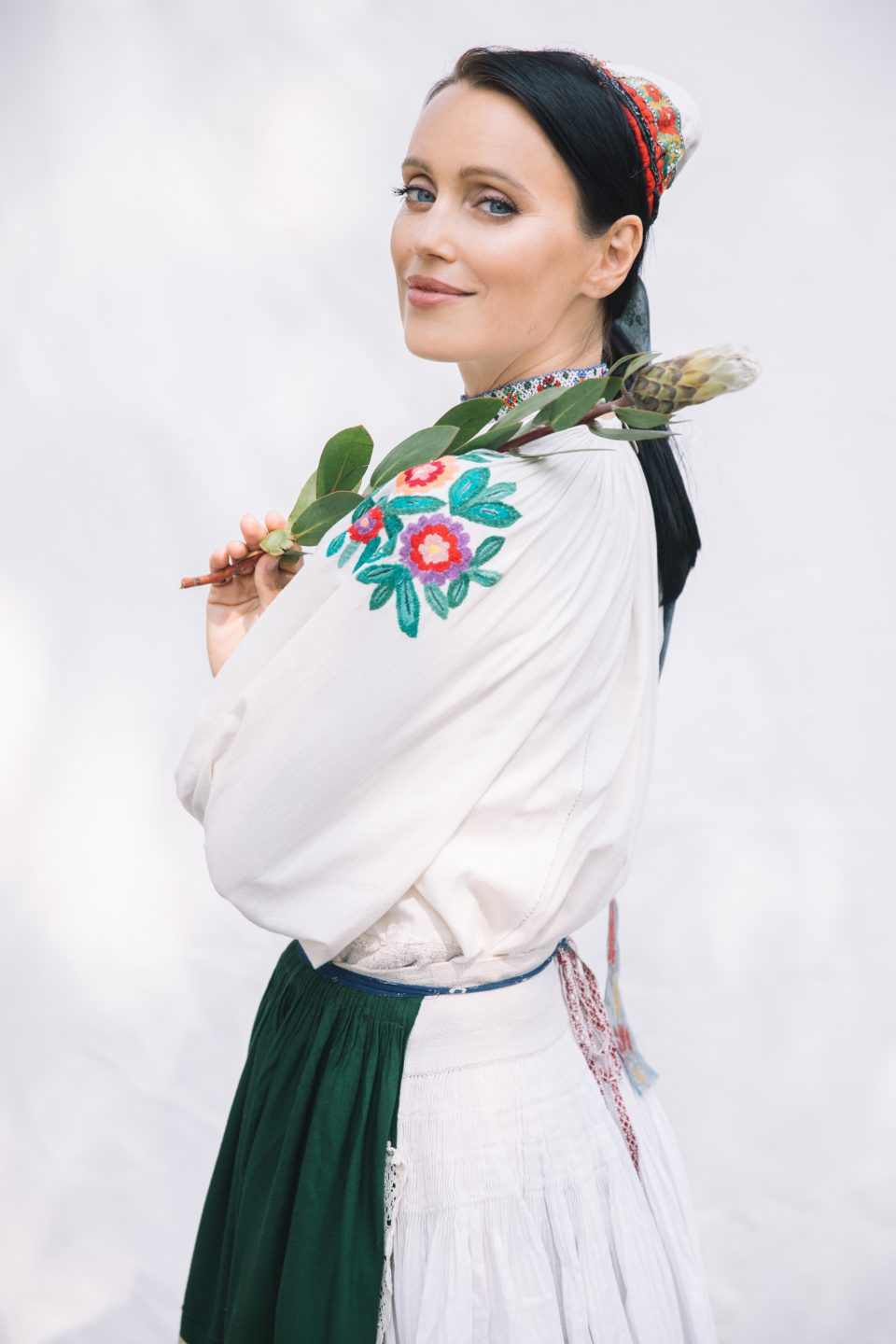
Larysa Lypkany
a journalist and a TV host
My roots are not in Transcarpathia. Both of my parents came from the region of Vynnytsia. All of my relatives, grandpas and grandmas. My dad was commissioned here from his job, first to Uzhhorod and then to Velykiy Bereznyi. There I was born, grew up and graduated from a secondary school.
My affection for Bereznyi and a certain self identity with it – well, I only felt it as we moved to Uzhhorod. I had a feeling: this is an area truly native for me.
The valley residents of Korolevo, district of Vynohradiv
The women’s shirts of Vynohradiv area used to have a square neckline. Embroidery was done for the narrow collar and the neckline, sleeves, cuffs and flounces (the “fydryshi”). The color palette is a combination of 2-3 colors, while the main ones were blue and red; brown, red and blue with minor spots of yellow, green, orange and blue hues. Realistic flower themes were dominating, often being that of a home guardian.
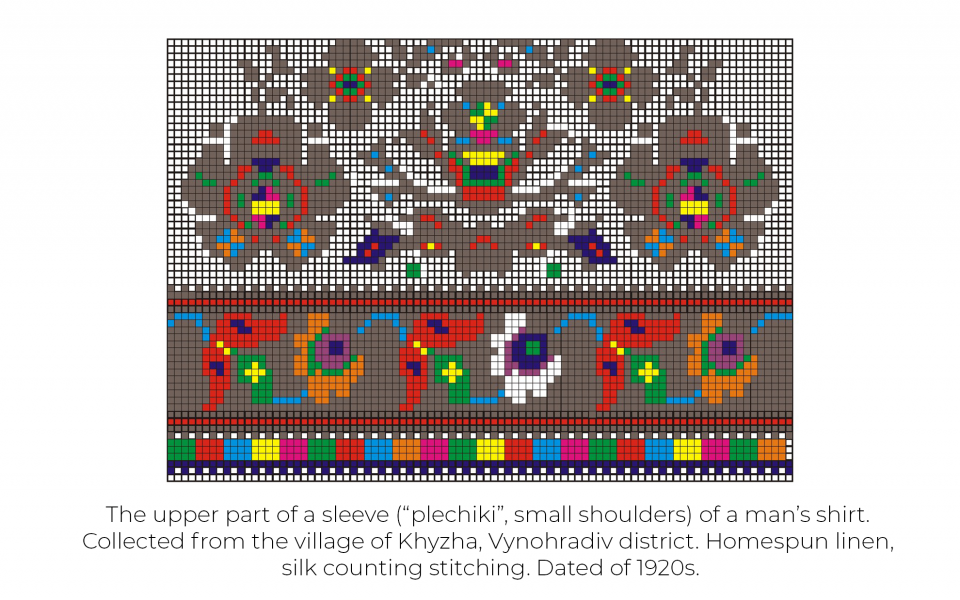
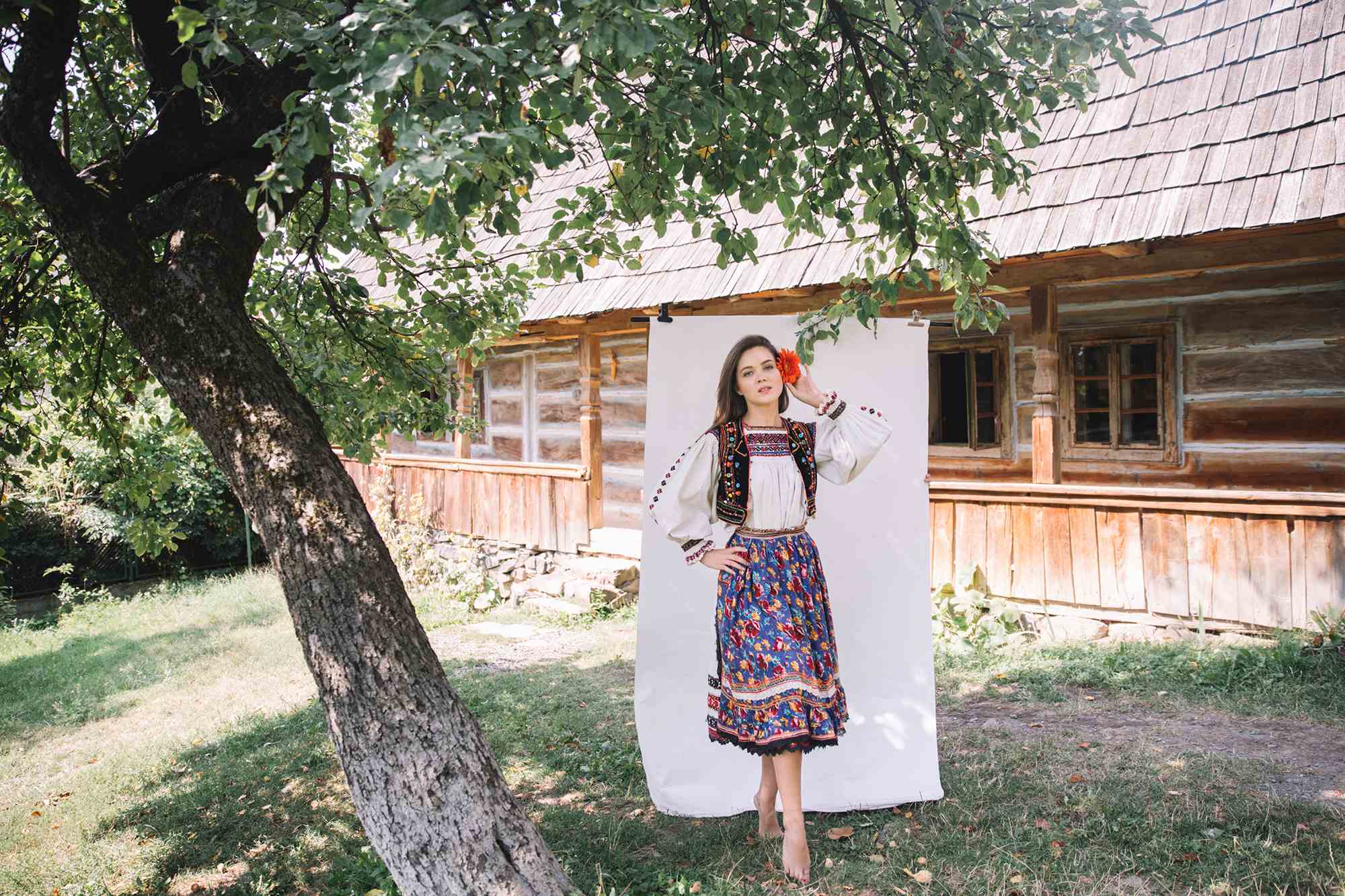
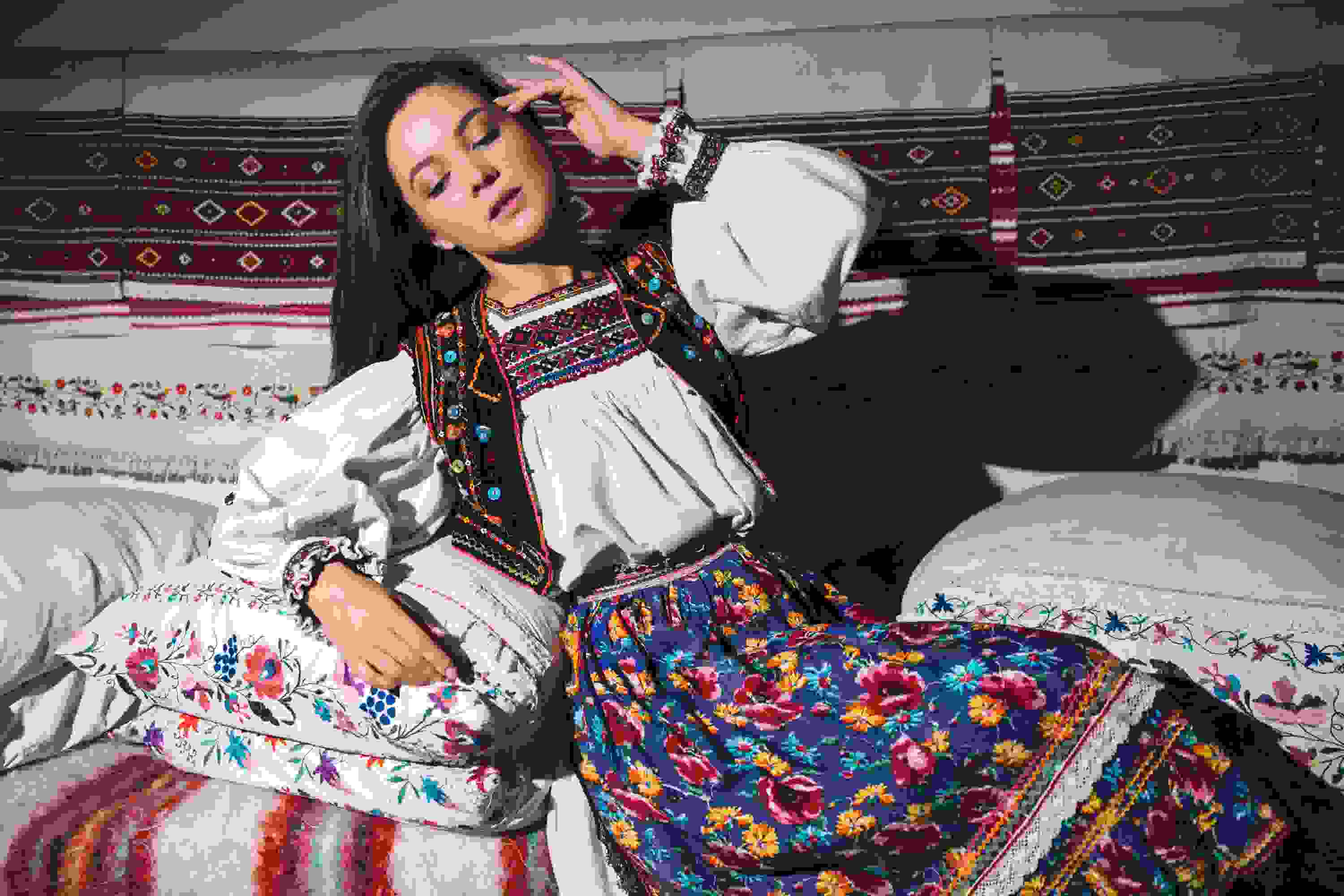
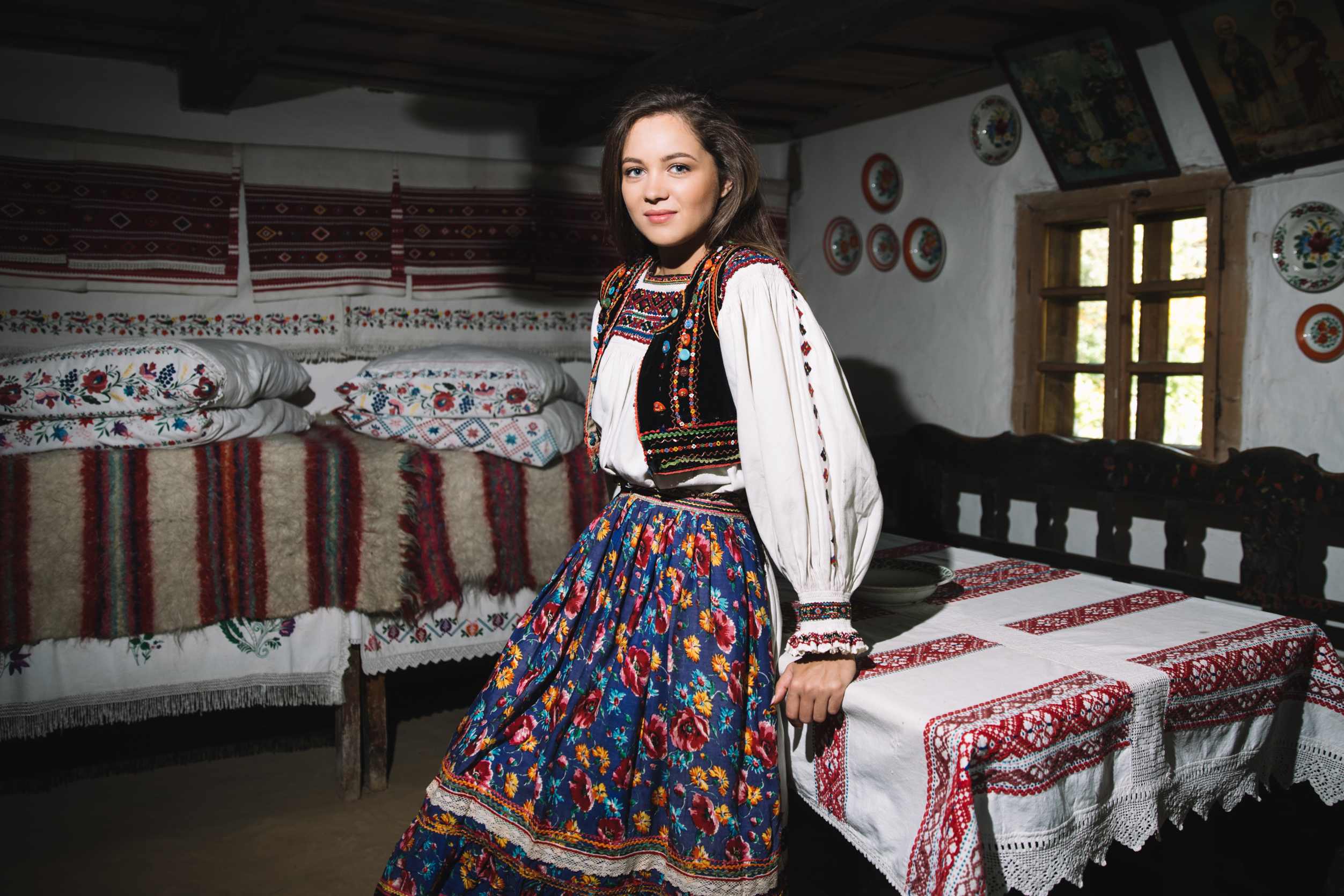
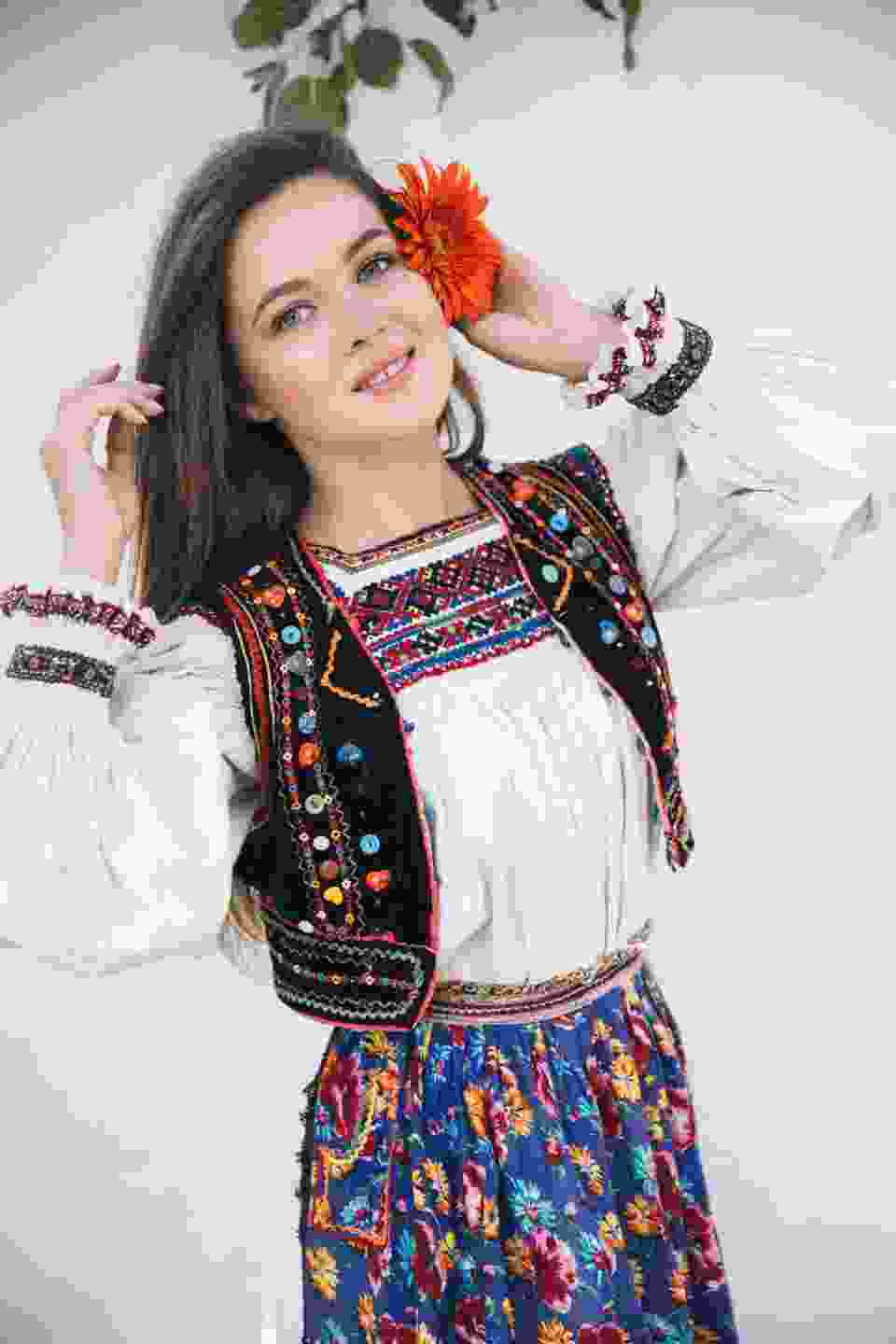
Valeria Turok
a journalist and a TV hostess
I was born in Uzhhorod but my dad is from Khust area and my mom is from Vynohradiv district. Maternally, I have Hungarians that lived in Vynohradiv area, while paternally all of my relatives coming from Myzhhiria district. My grandfather was born during trips for seasonal labor, right at the sea, as his parents were travelling to Argentina. So he had just longitude and latitude recorded in his Birth Certificate as the place of birth.
As they returned to Transcarpathia, my relatives settled down in Vynohradiv district, planting and growing vines.
The valley residents of Teresva, Tiachiv district
Back in 1920-1940’s, in the villages of the Teresva River valley, plant patterns were prevailing in the clothing embroidery, shaped like stylish branches of flowers, leaves, buds. Images of vase full of flowers, butterflies could serve as a supplement.
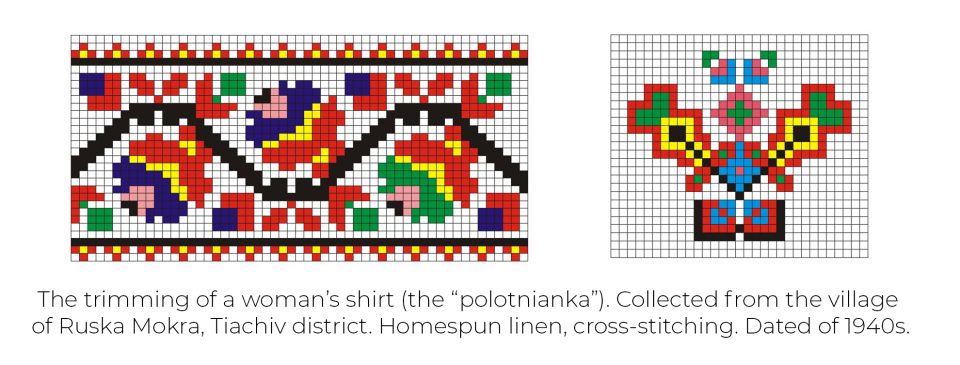
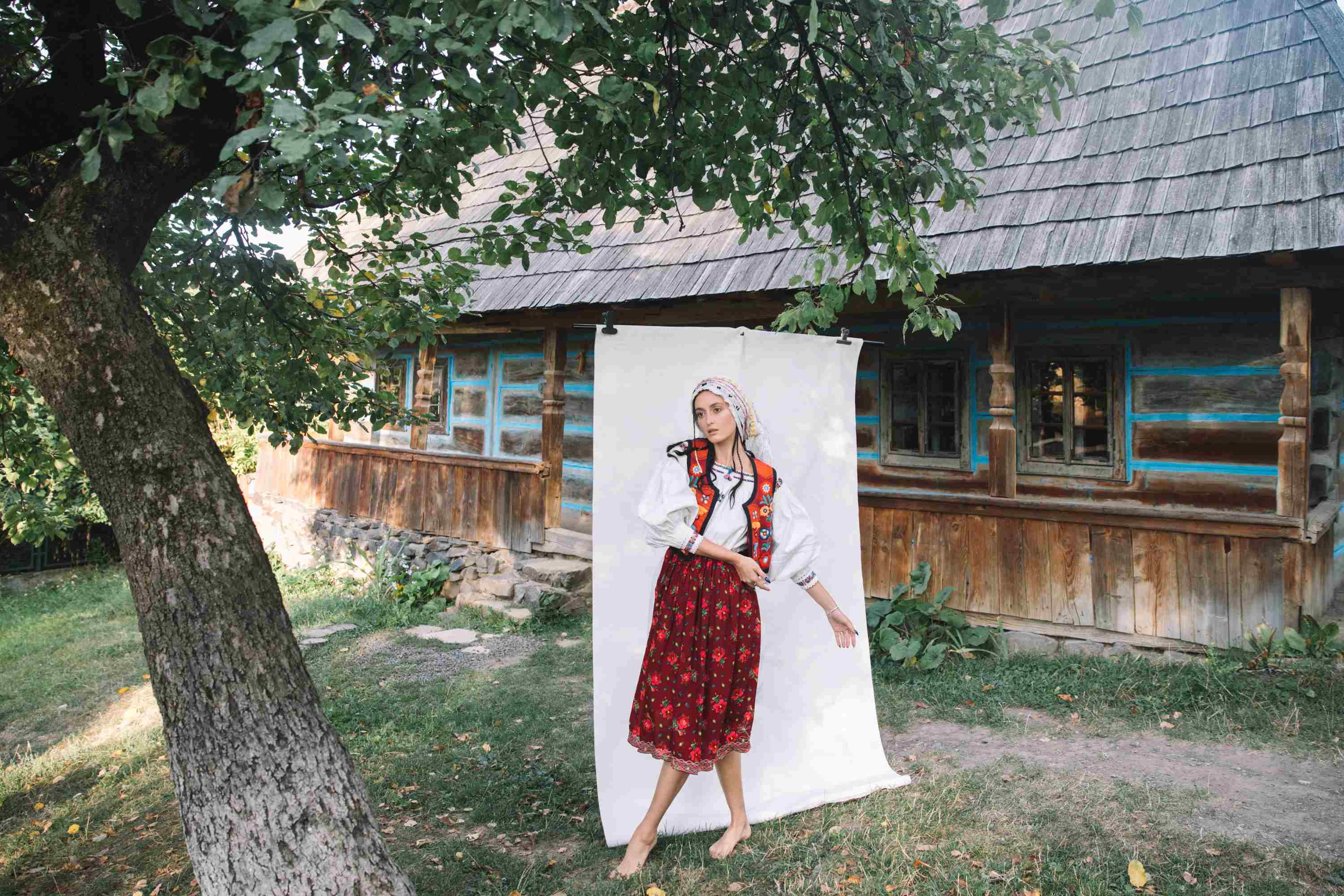
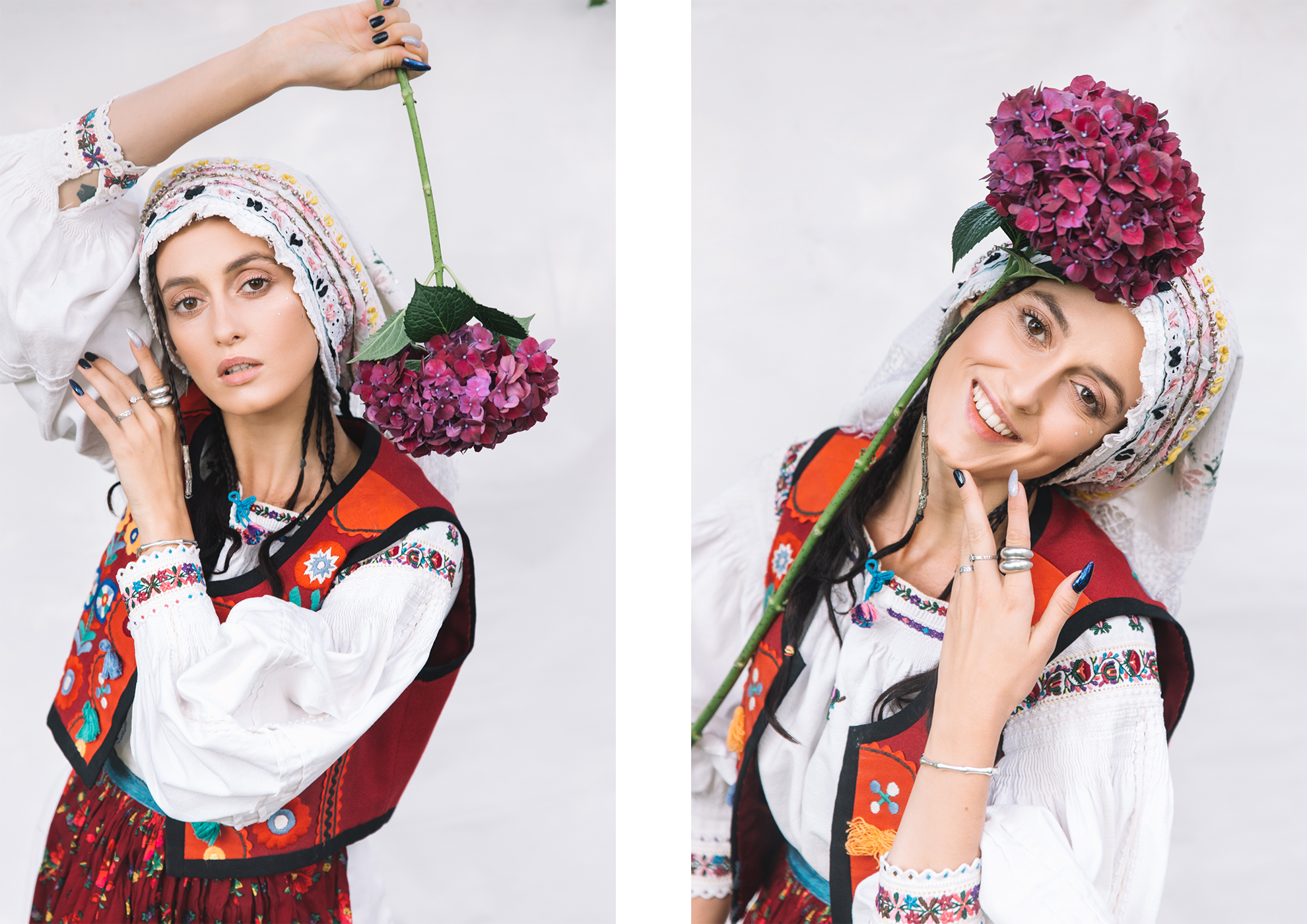
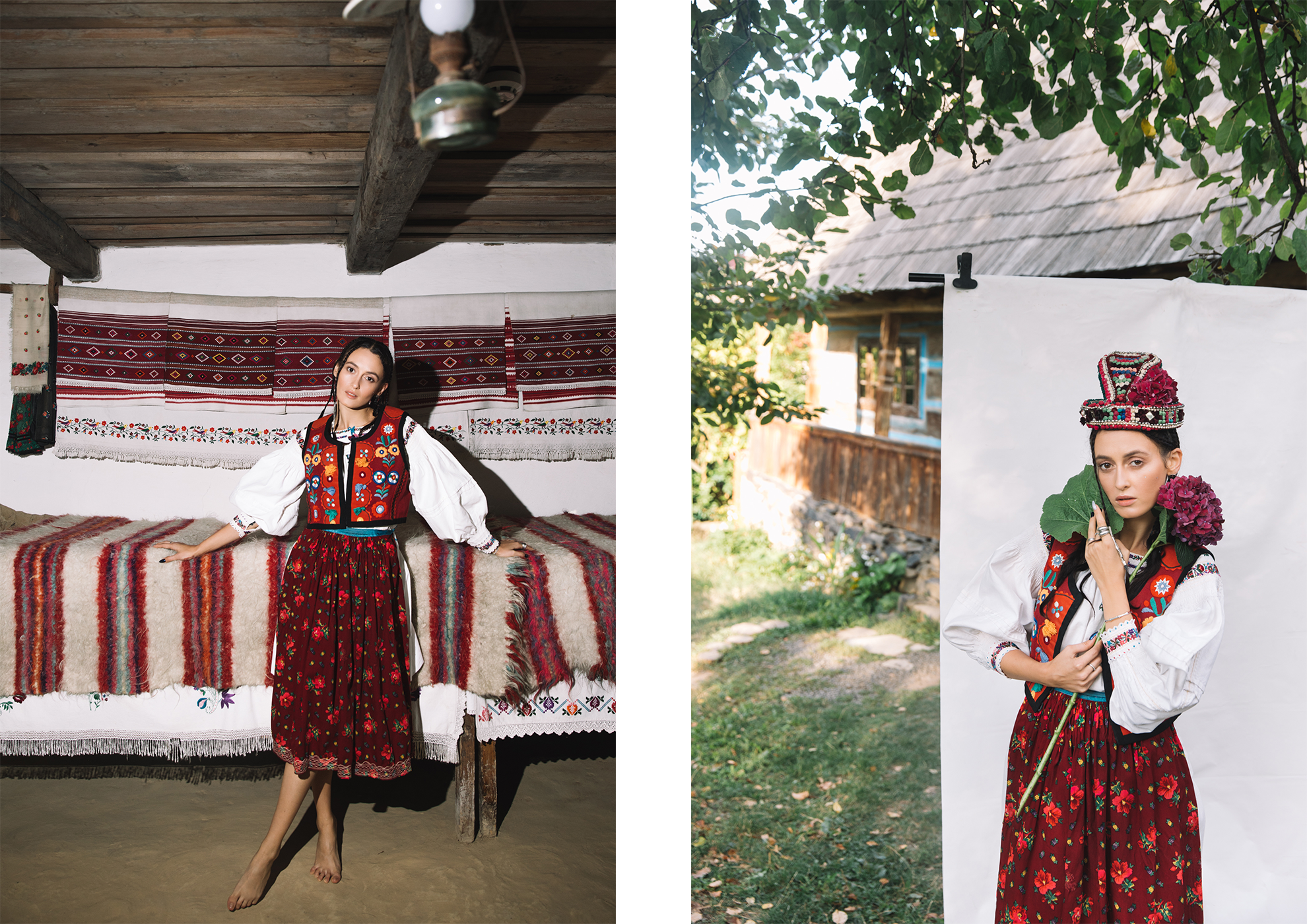
Alina Pash
a musician and a singer
I come from the township of Bushtyno of Tiachiv district. I am proud to tell the fact to everyone for my provincial nook is such a beauty. My relatives also come from there, but as we have many bloodlines in our veins, I am paternally Romanian. Whereas my mother’s grandpa came from Khmelnytskiy region of the major Ukraine. There’s a family legend of our own, saying that the Nesiymuky’s family are of a Cossack kin.
I still have my parents, a grandma, my mother’s sisters and my dad’s family living out there in Bushtyno. I am bound to come back to my lesser homeland on Christmas, on Easter, on November 1 and in general, whenever I have an opportunity to.
The people of the Tereblia and Rika rivers valley. Khust area
One of the patterns for trimming of sleeves in women’s shirts worn by the people of the Tereblia and Rika rivers valley was the square-cut continuous meshy embroidery. It was popularly called the “zaspulnytsia”. Its ornamental field was filled with various patterns. In the needlework of the early 20th century you will often see a modification of the rosette pattern. One of such had a diamond shape in its basis, garnished with four pairs of purls. That’s why a similar image of an eight-petal rosette was popularly called as “a star with purls.”
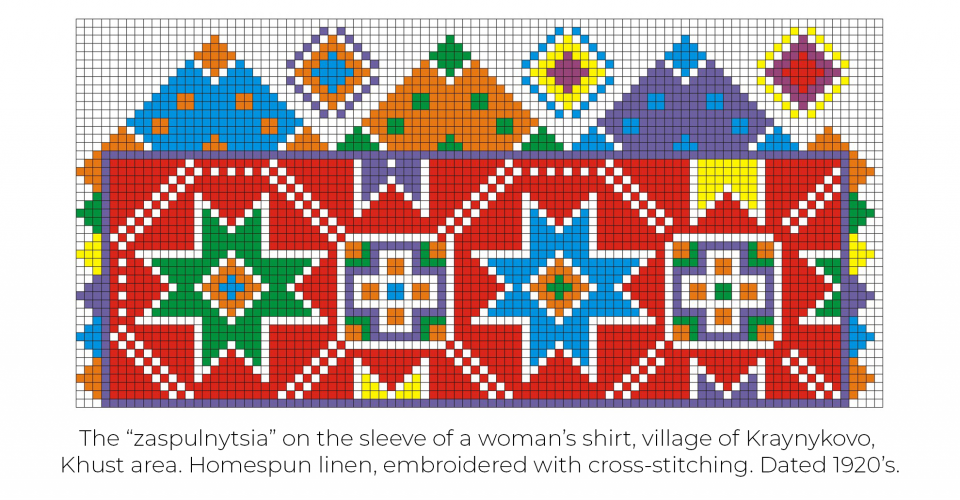
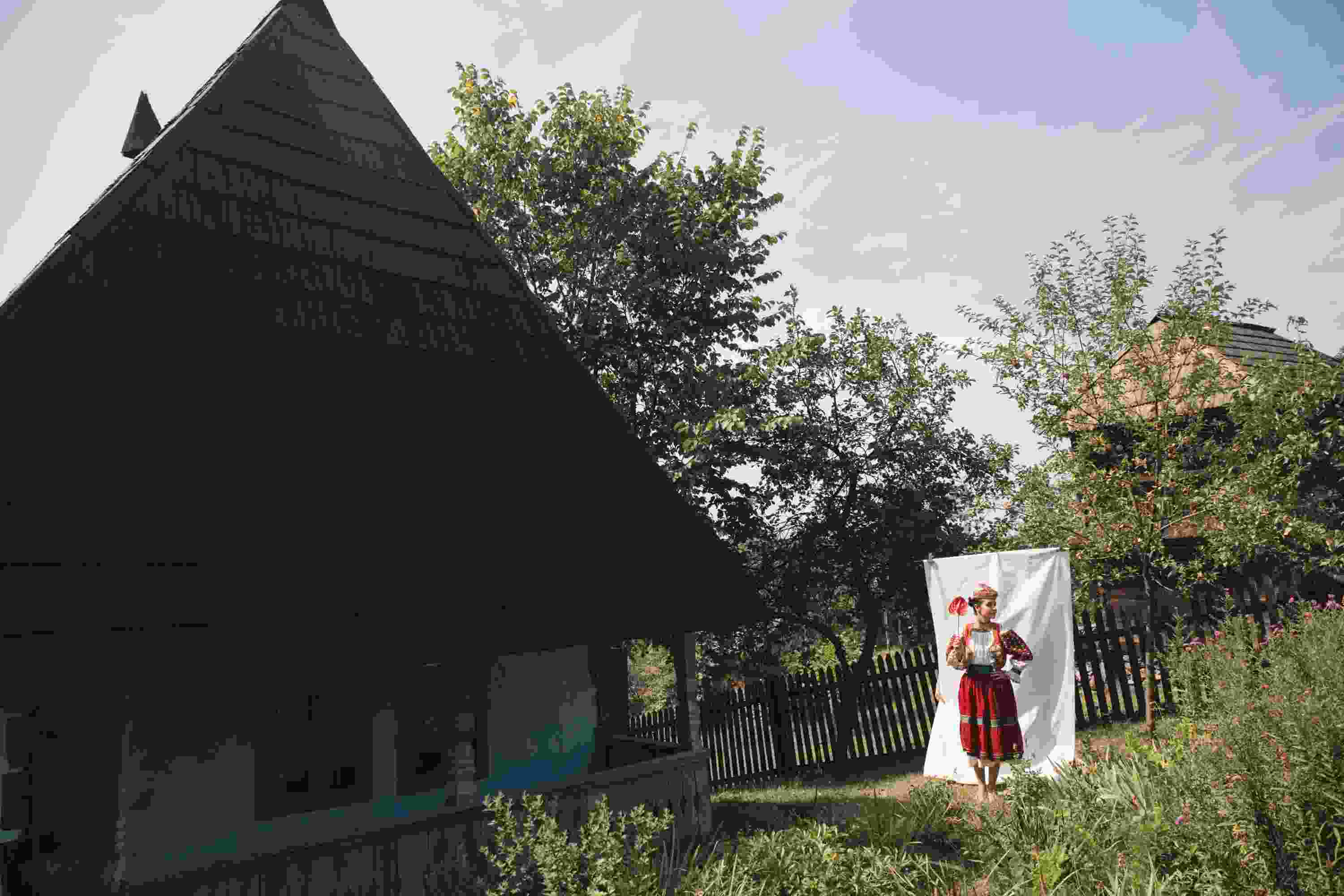
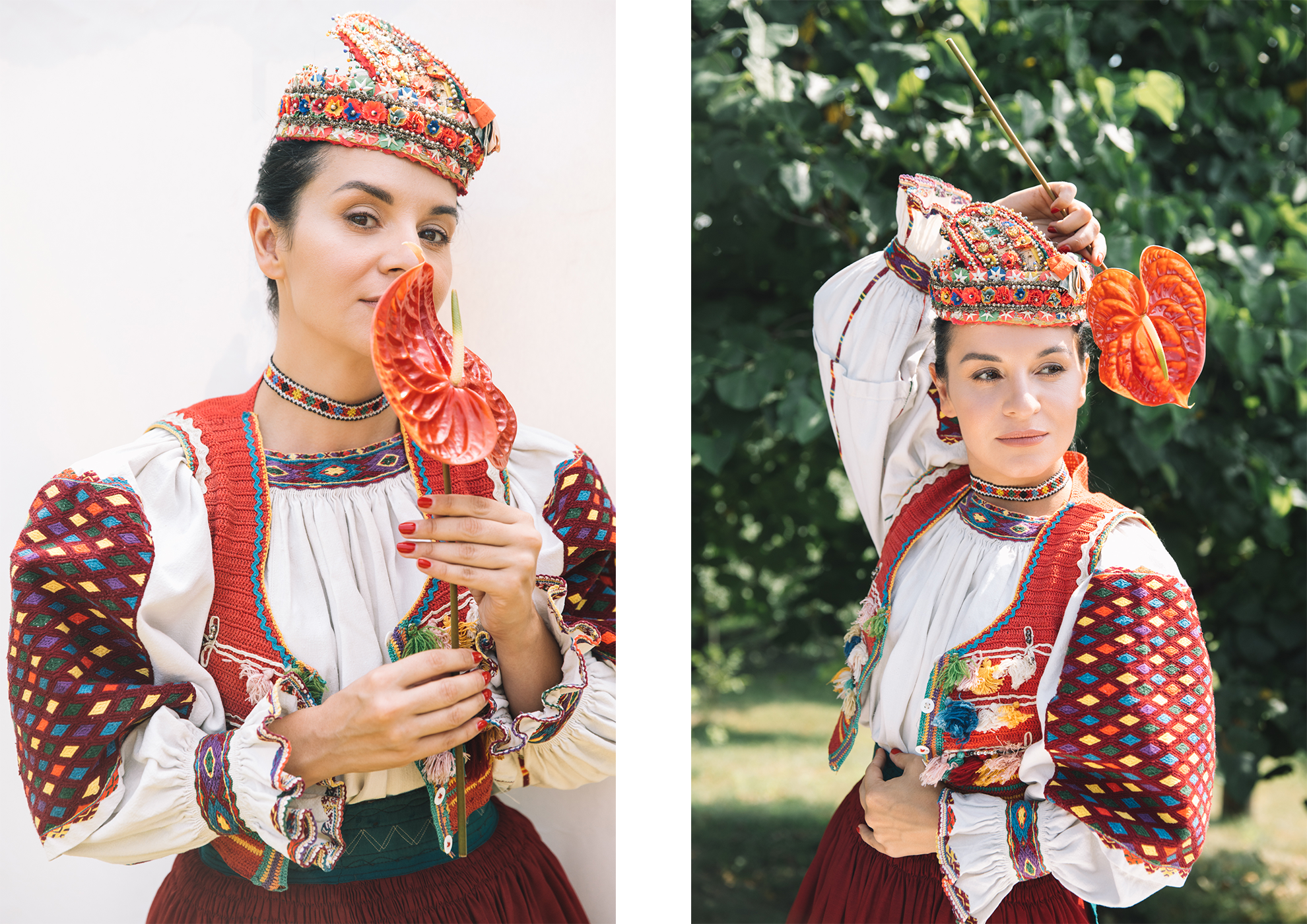
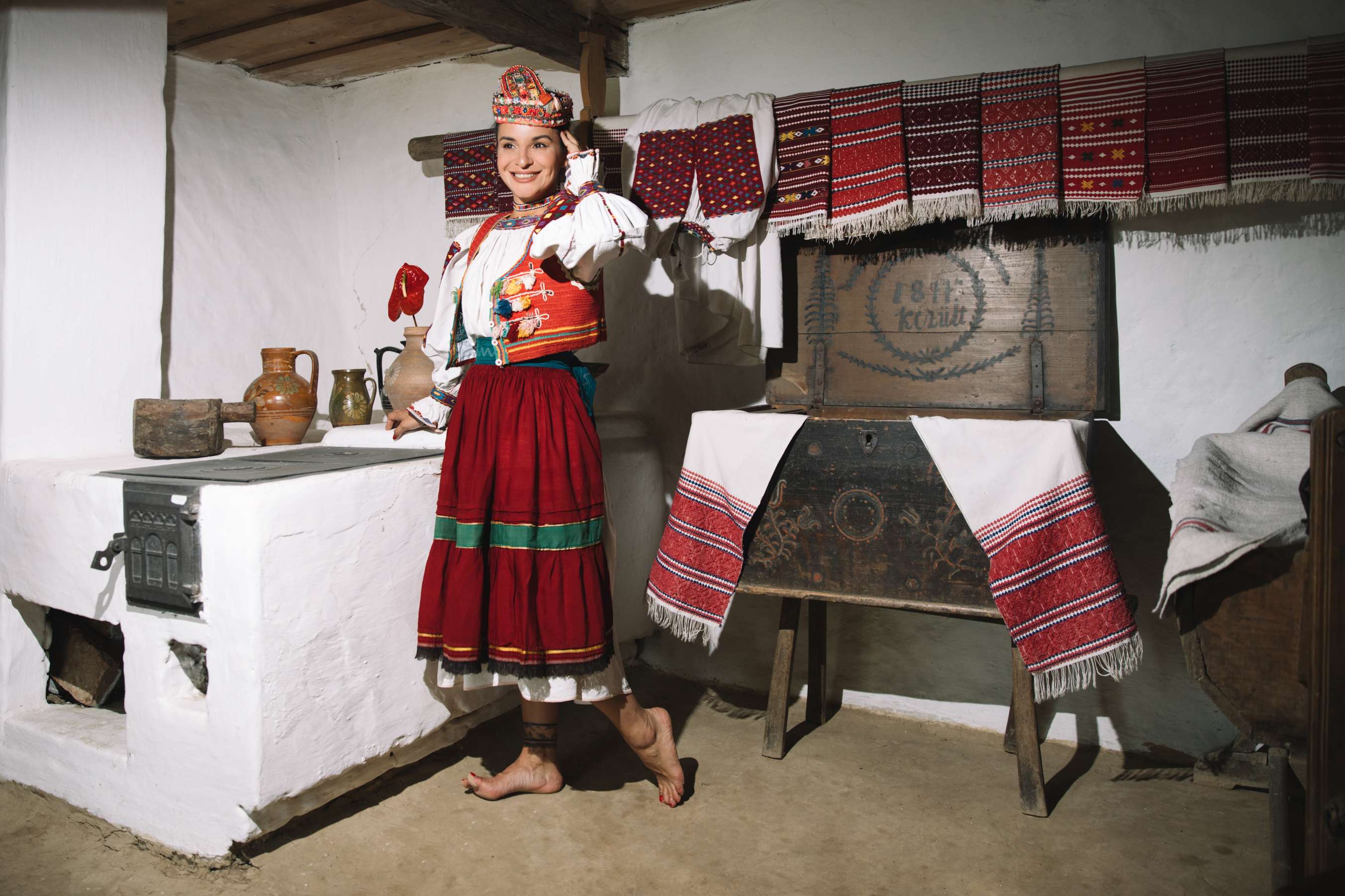
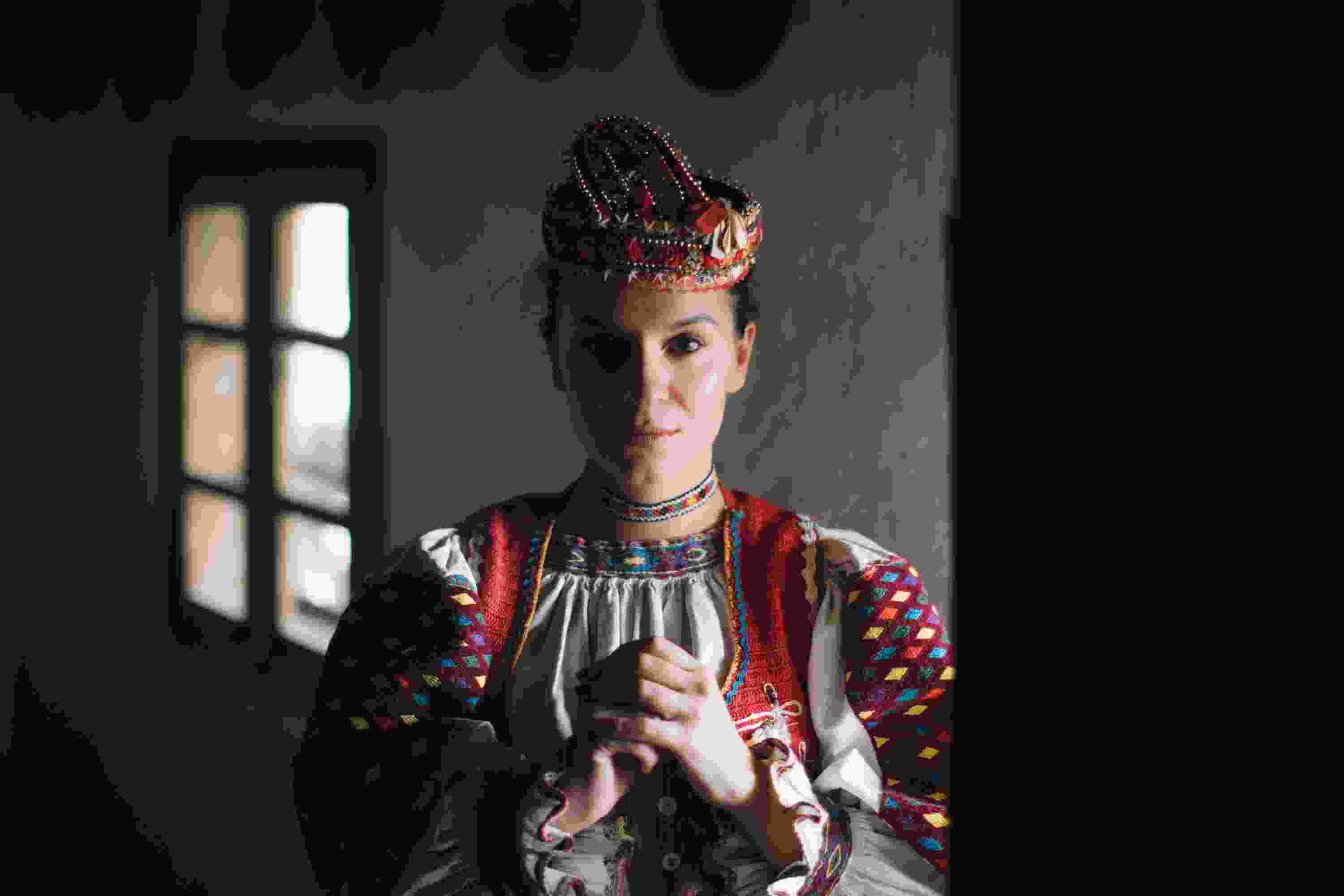
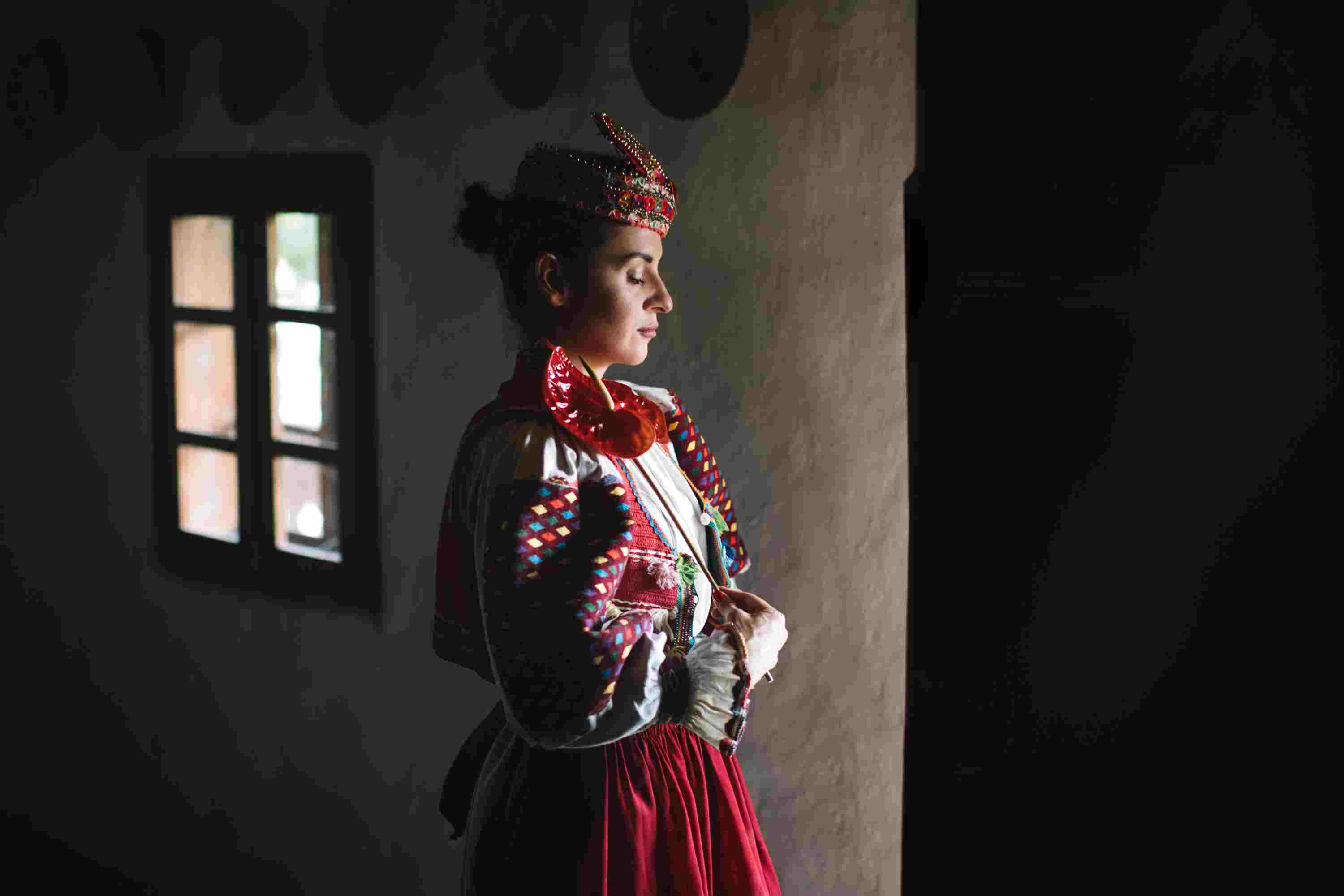
Natalia Yantso
founder in “Maysternya Svyat”
My mom is from Khust, and her parents and grandmas and grandpas, too. So my roots are indeed very deep out there. It has been a few years since Mom sold her house there so we only visit Khust because of the cemetery with the grandmothers’ and grandfathers’ graves.
My story of relationships with the folk clothing is quite special. I used to go dancing in the “Carpathian Springs” folk band up until I became 20. So really know it all and am quite skillful in wearing it. Unbelieveable – so many areas in Transcarpathia and the variety of dressing and dances is so great.
Hungarians. Berehovo district
With the Hungarians of Transcarpathia, it was characteristic to have embroidery having vegetation patterns, done with the technique of “two-sided hemstitching”. The main patterns were roses, asters, violets and daisies. Combined with stems and leaves of various shape, they used to make up seamless ornamental compositions.
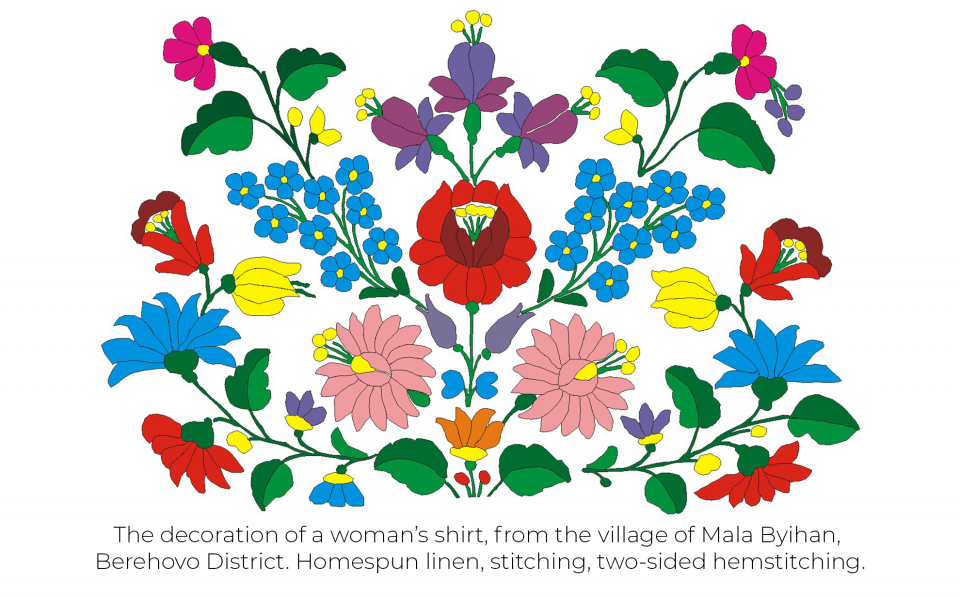
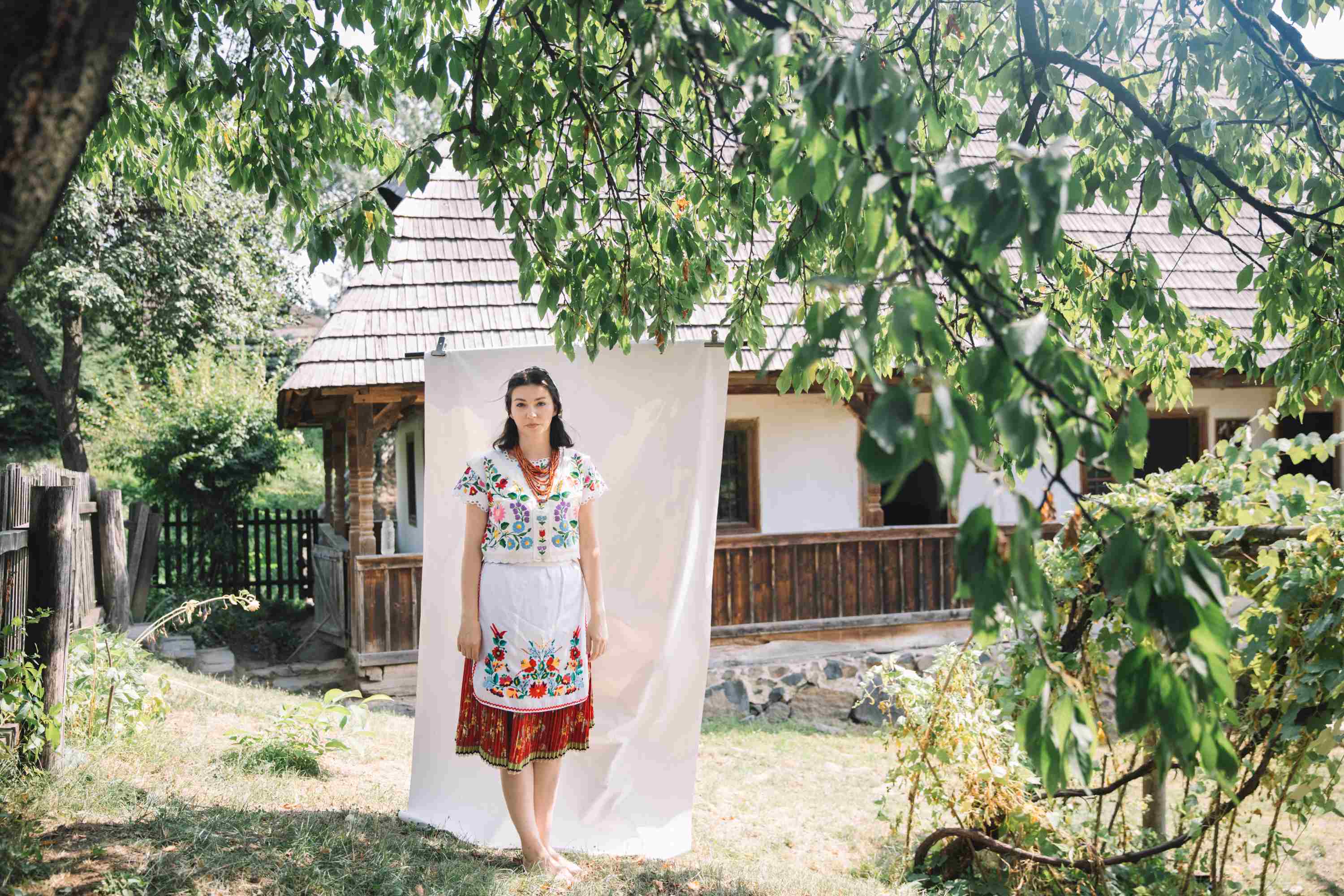
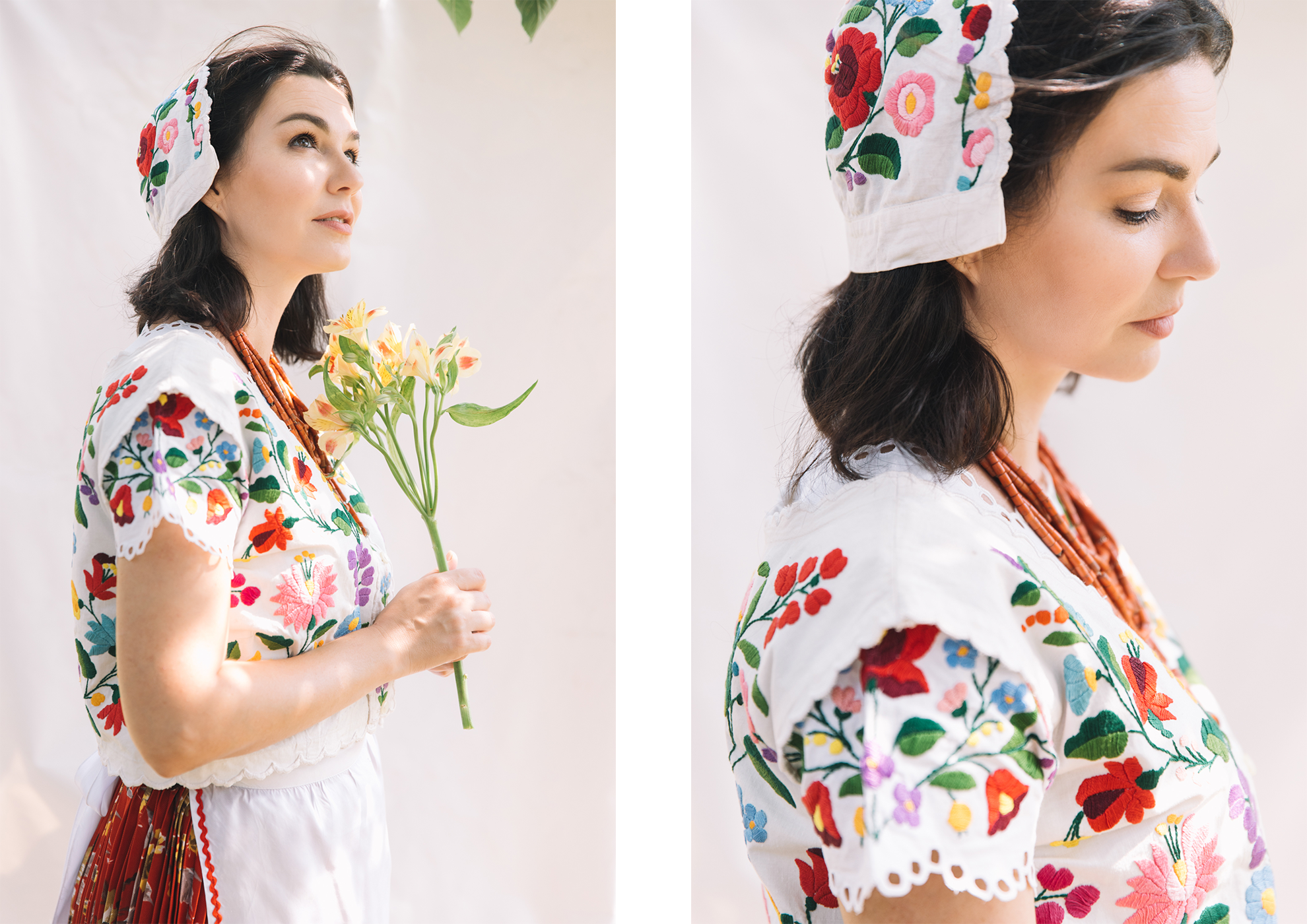
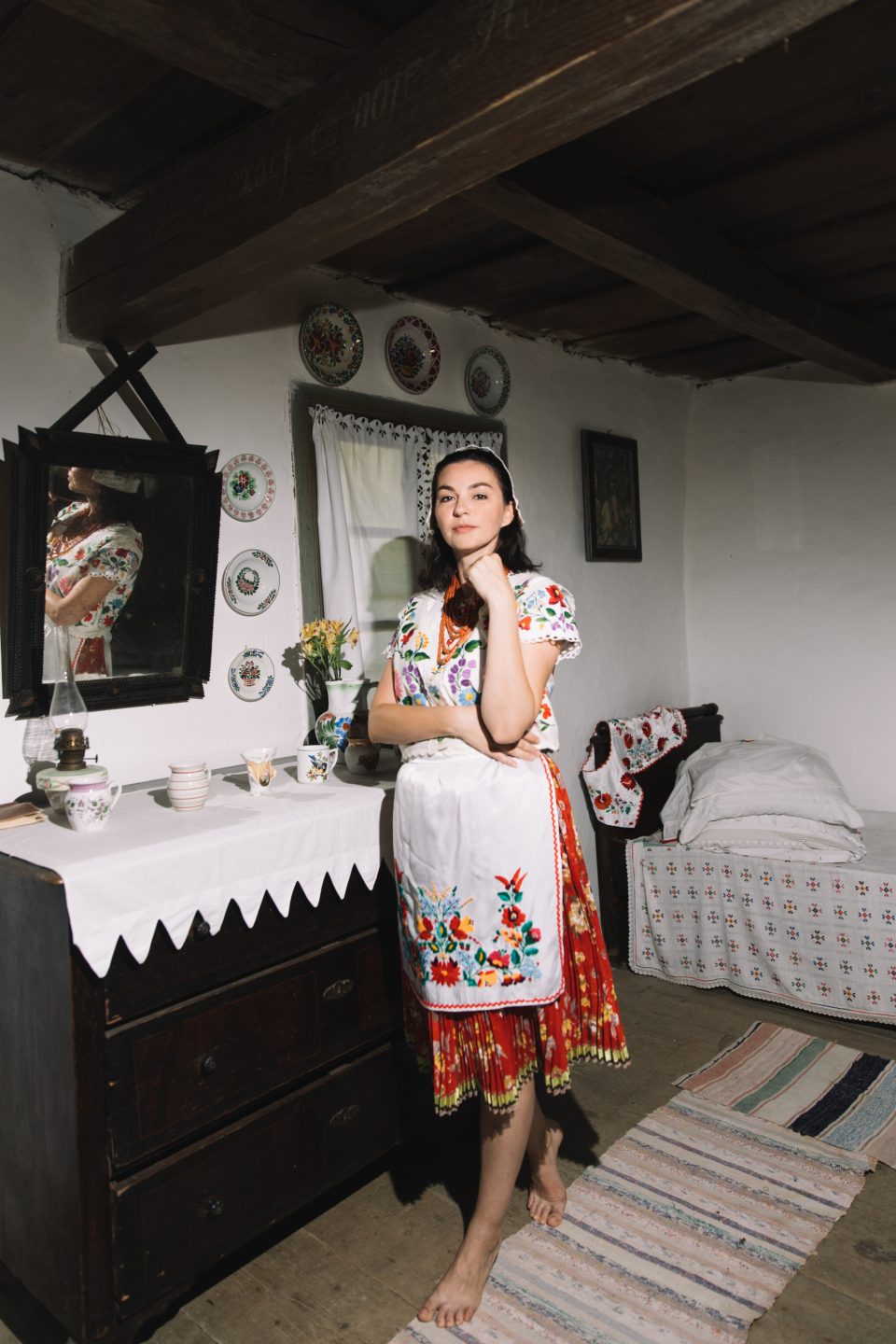
Tetiana Literati
project founder and leader in “Uzhhorod lost”
I am, as they say, a shoeless child: I write stories of others and still know rather little of my own one. I was not born in Uhhorod. My father is a Hungarian, coming from the Hungarian village of Tiszaásvány in Uzhhorod district. My mom comes from the village of Hudliovo. She has lived all her life in Chop, while I myself have been living in Uzhhorod for 19 years.
Svaliava district
Rosette is a most widely spread archaic patterns in Transcarpathian embroidery. It was stitched with four, six or eight pointed or rounded petals. It often happened that petals of a certain rosette are stitched with threads of two colors by turn: blue and violet, red and yellow, etc. Rosettes are interchanged with images of diamond shapes, squares, crosses, S-shaped diagrams.
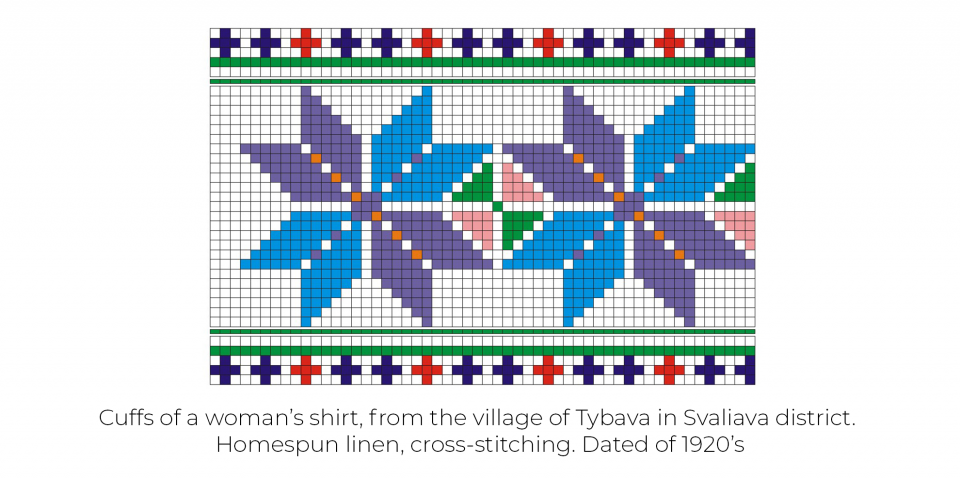
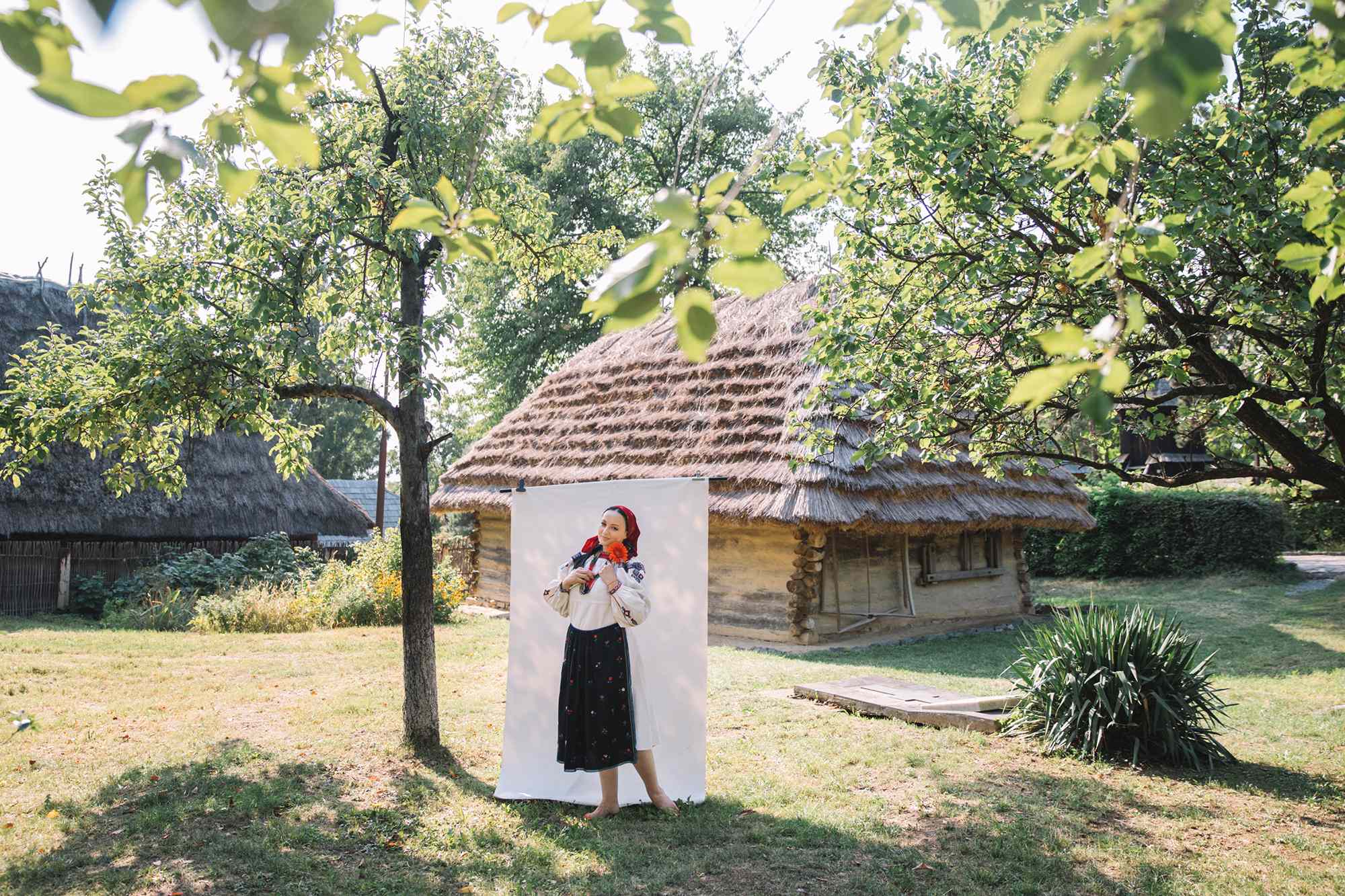
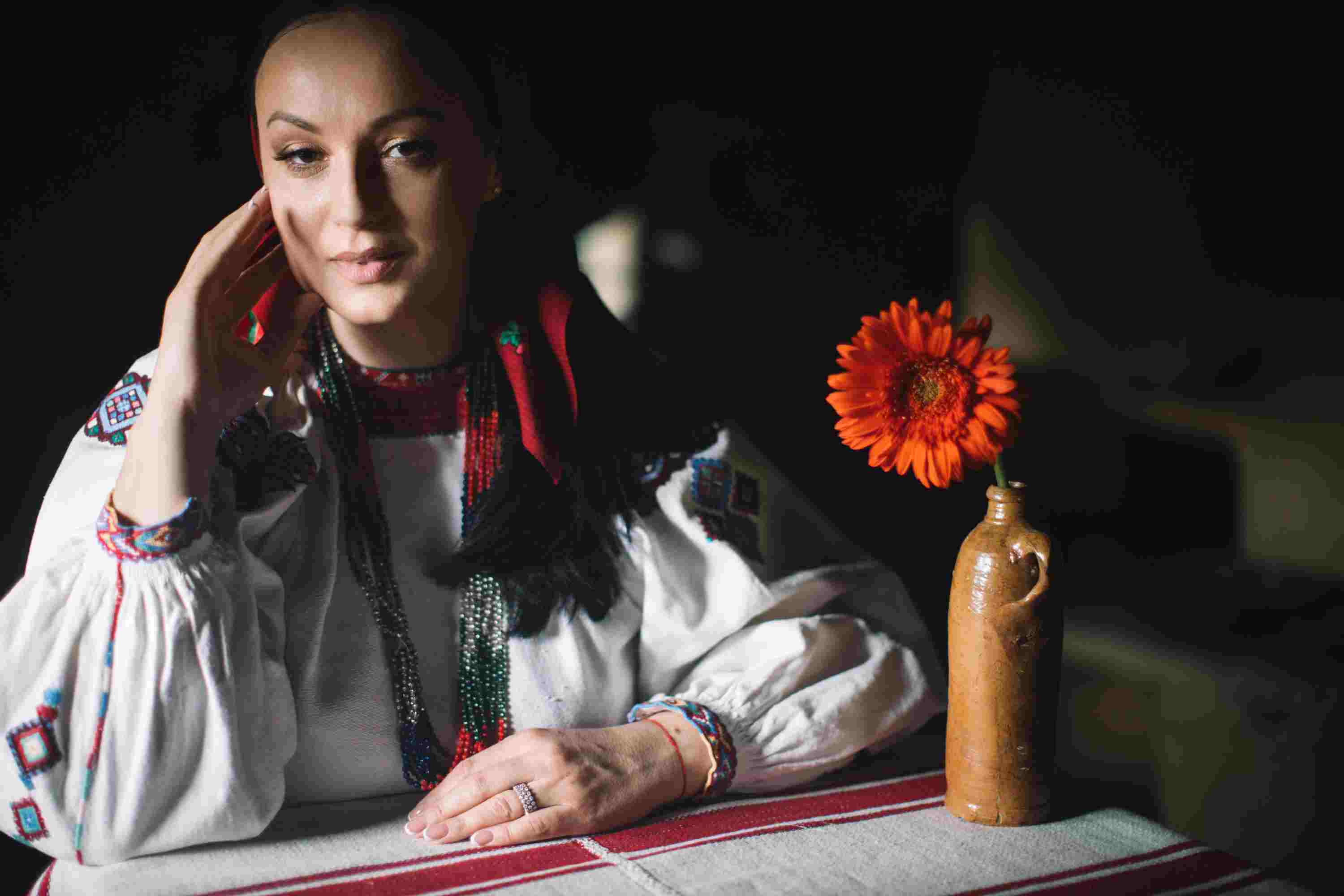
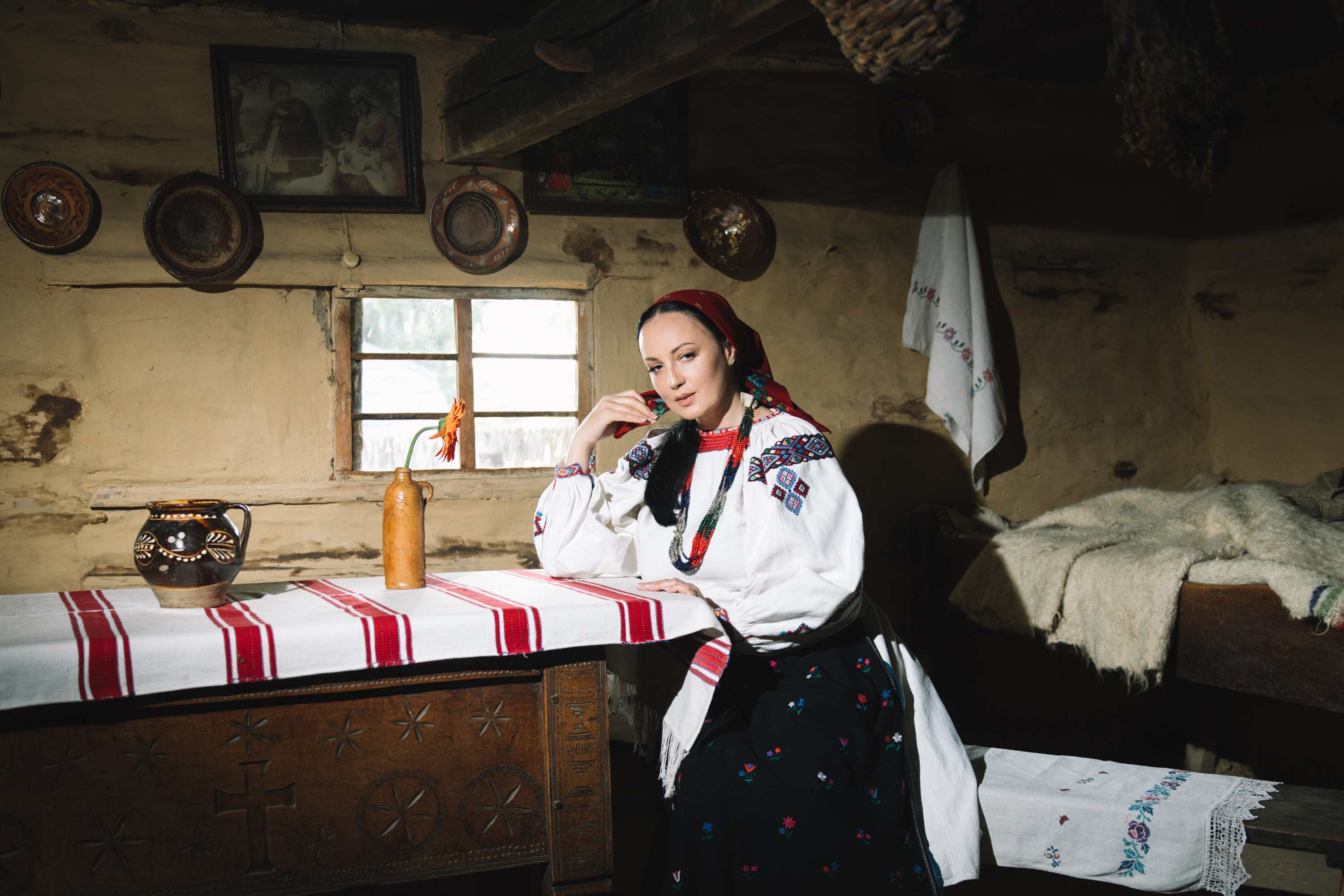
Natalia Vorona
a public activist, a finalist in Miss Ukraine -92
My dad was a military officer, and so it happened that I was born in the town of Striy in Lviv Region. In 1983 we moved to Uzhhorod, and I went to Class 3 at school here. As for Transcarpathia, it is mostly my mom’s origins that connect us to the area. She is from Svaliava, and on my grandparents’ side all of my relatives are from there.
My dad moved here from Kharkiv back in 1957, a young lieutenant, one of those busy with the installation of radar detection systems. This is how my parents met in Svaliava.
What is important to me to be proud of is that my grandfather was the first city mayor in Svaliava, and my grandma’s cousin was a well-known religious figure. Father Dionysius is buried in the Cathedral of Uzhhorod.
The Hutsuls of Rakhiv
The women’s skirts worn by the Hutsul females in Rakhiv area, the “ustavka” holds the main place. That is an embroidery integrated to a sleeve. It is made up of three parts: the central one, the proper “ustavka”, and the stripes framing it (“putok”, “snurok”) and ornamental jagged bands (the “poverkhnytsia’s”) that contain subordinate patterns or undersized ones depicted on the central part of the “ustavka”.
Colorful and archaic are the “ustavkas” in which the diamond shape is combined with other geometrical patterns: an eight-petal rosette, a direct cross and a sidelong cross. The diamond shape pattern, symbolizing the ground (the fertile origin of which was denoted with a sidelong cross with dots, i.e. grains inside each of the four areas of the “field”) was typical for creative products in all types of Ukrainian folk art in general.
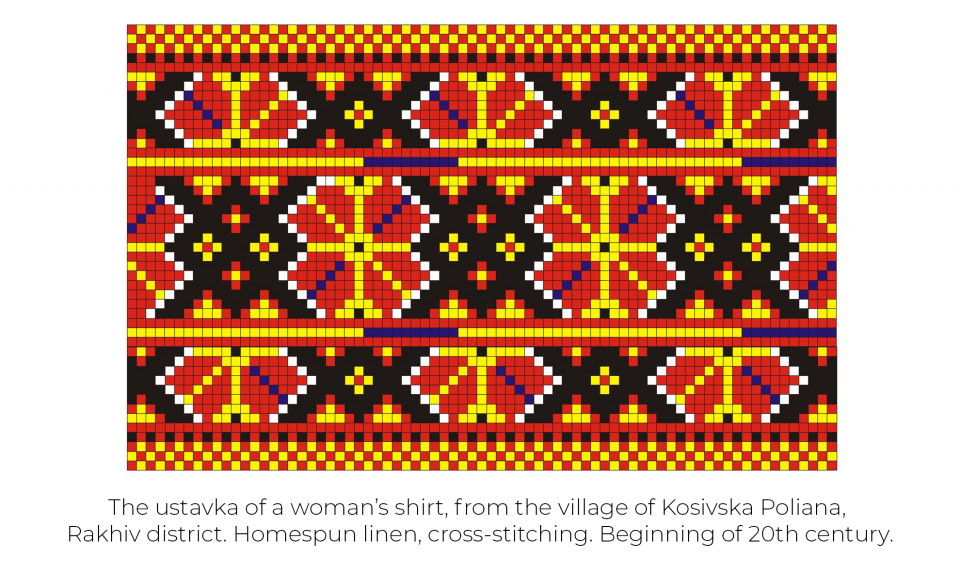
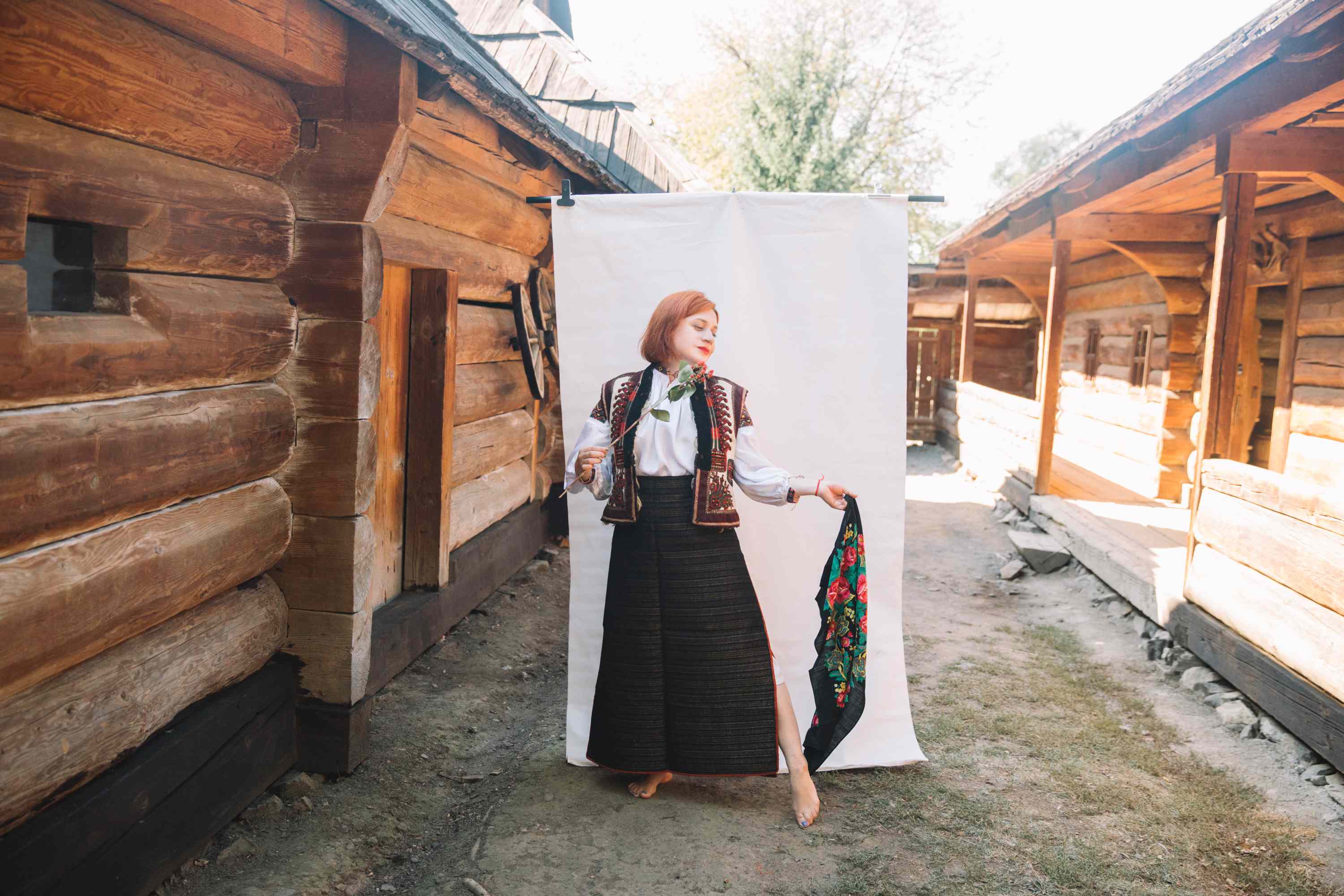
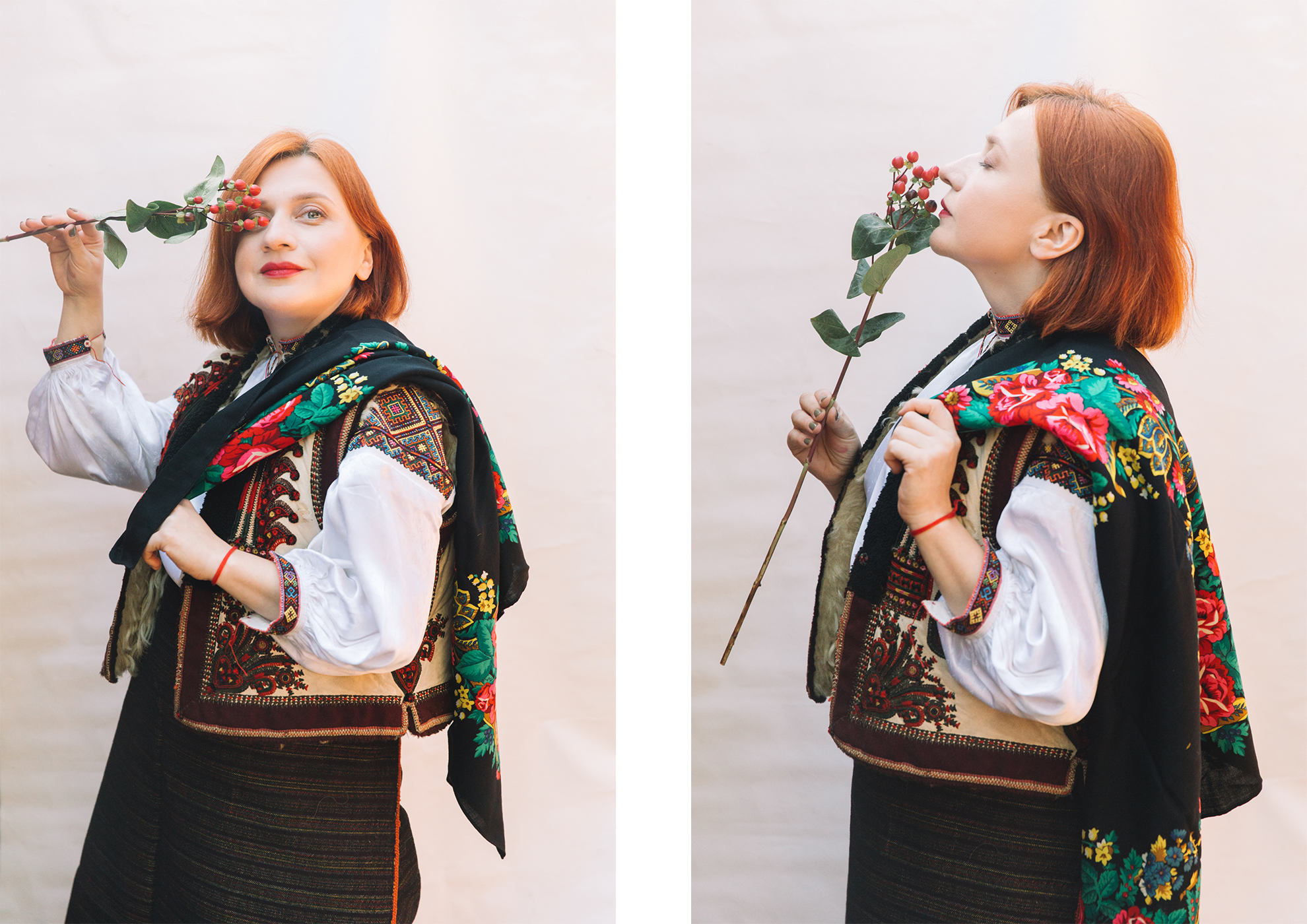
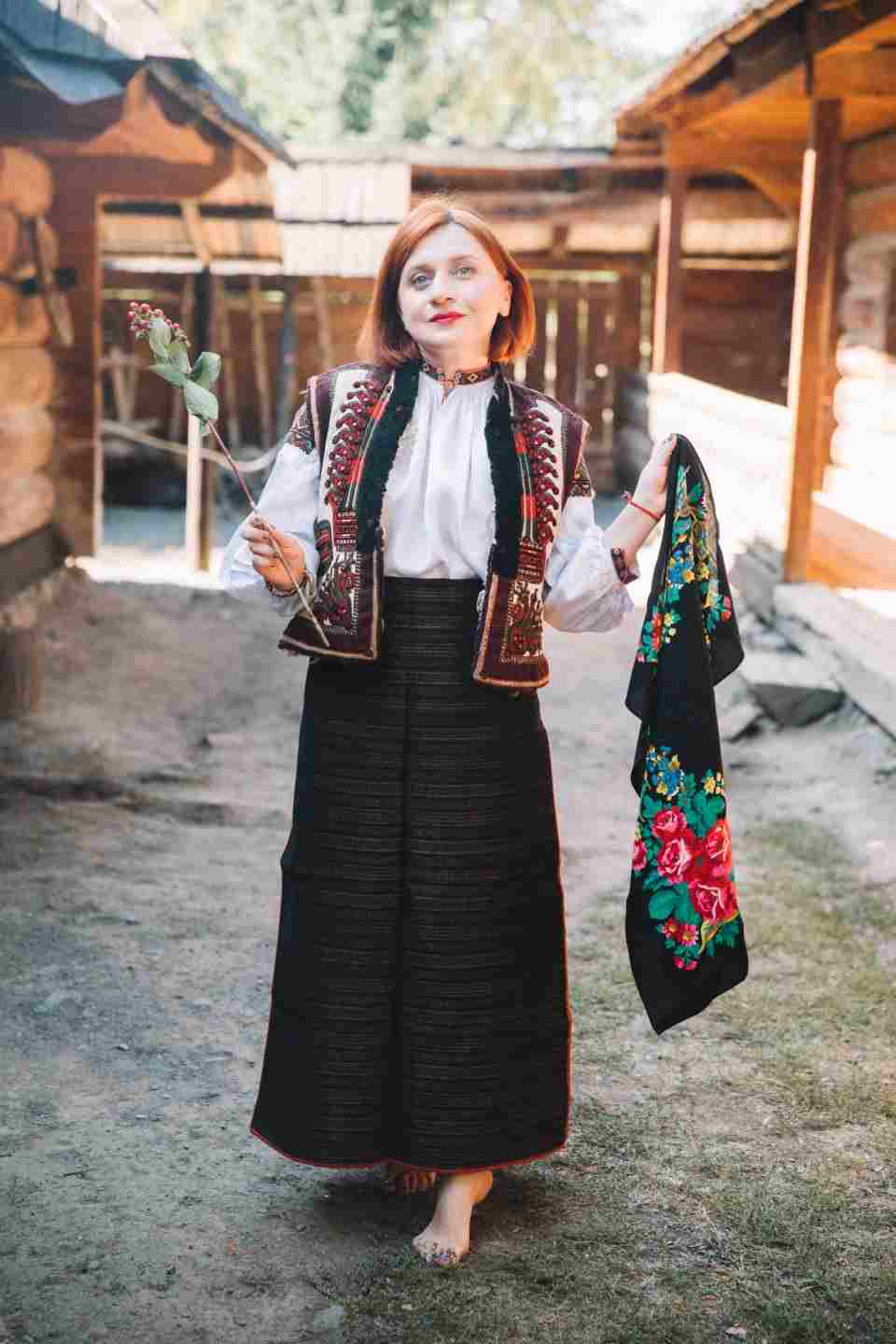
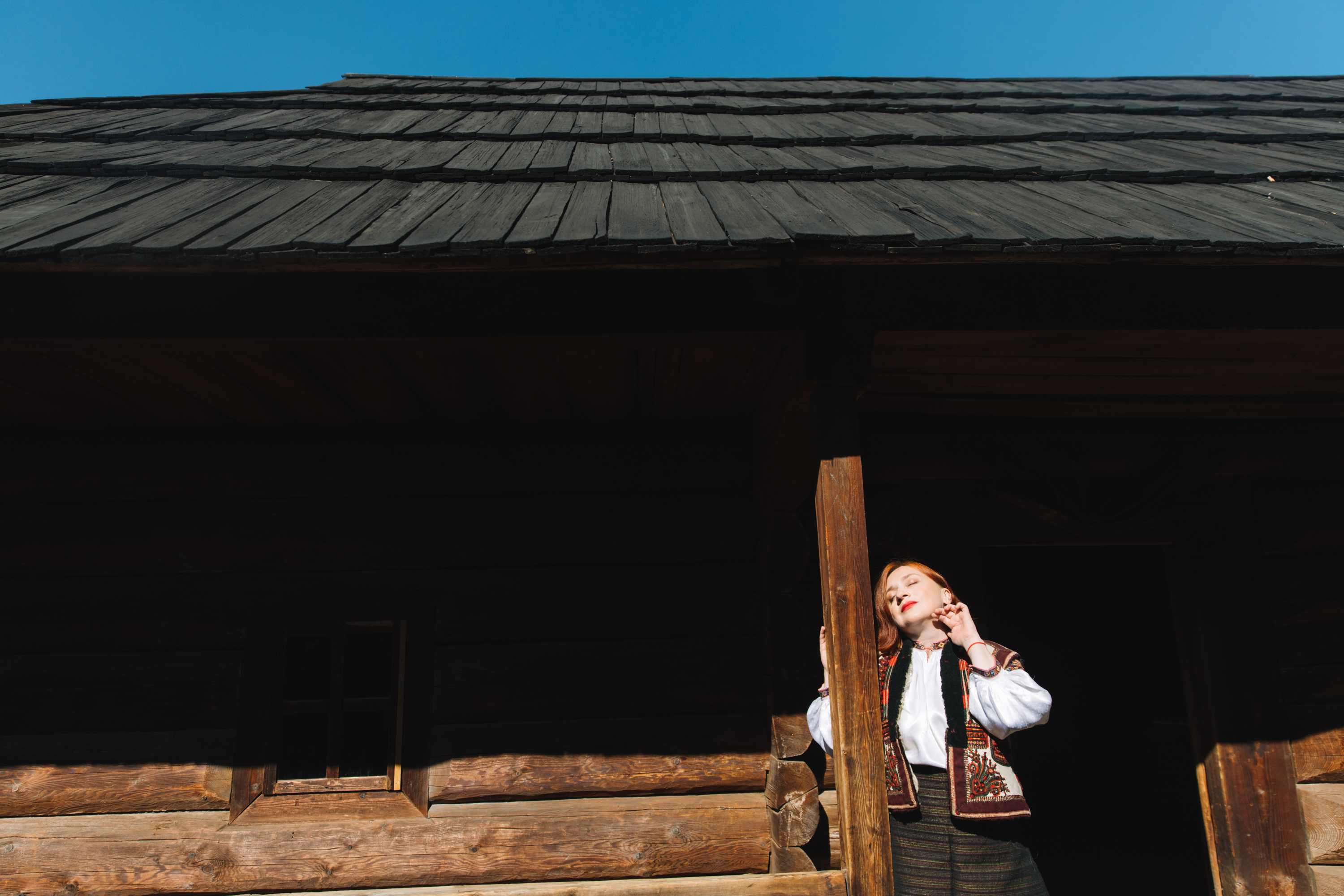
Olesia Drashkaba
an artist, Chief Editor in Uchoose title
I was born in Rakhiv. Like my grandma and my great-grandma. They come from the Rakhiv family of the Pryymakys and Melnychukys. I had grown 6 years old before we moved to Uzhhorod. My late grandpa is an honorary citizen in Rakhiv, all of his family comes from Teresva and Bedevlia. It is the glorious family of Vasyl Nebolia, a hero of the Carpathian Ukraine.
The traditional Hutsul attire is very important for our family. Granny used to tell me stories about her mom, who, by her words, “liked to dress up the girls”. So she even could sell a land plot without telling to her husband, just to be able to buy some new “kozhushki” (sheepskin coats) and “topanochky” (patent leathers).
We managed to keep something of it, so at this photo I am wearing my granny’s shirt made of American velvet and 100-year old “ustavkas” stitched with metal thread.
Residents of the Uzh River valley. Uzhhorod district
The diamond shape pattern got spread in all of Transcarpathian embroidery most widely. The rows of small diamonds are framed with endless broken lines – the “meandras”, a truly ancient ornament pattern. This meandra pattern is a symbol of infinity, continuity and eurhythmy, regularity in water, life and the whole world. It was believed popularly that the symbol is a guard against malign forces, who, as the superstition goes, once trapped into this endless line, will eternally wander about and will never be able to do any harm to the owner of the clothes piece.
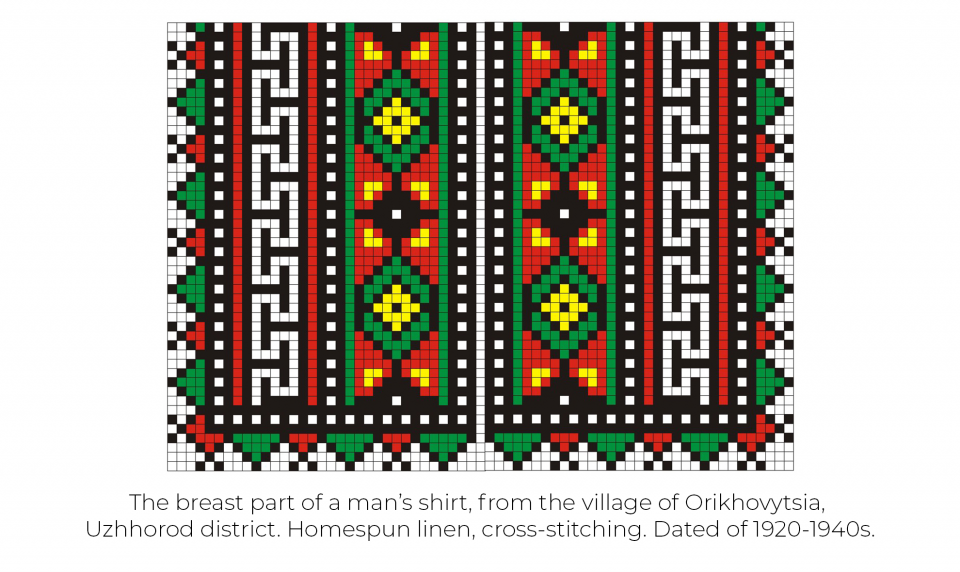
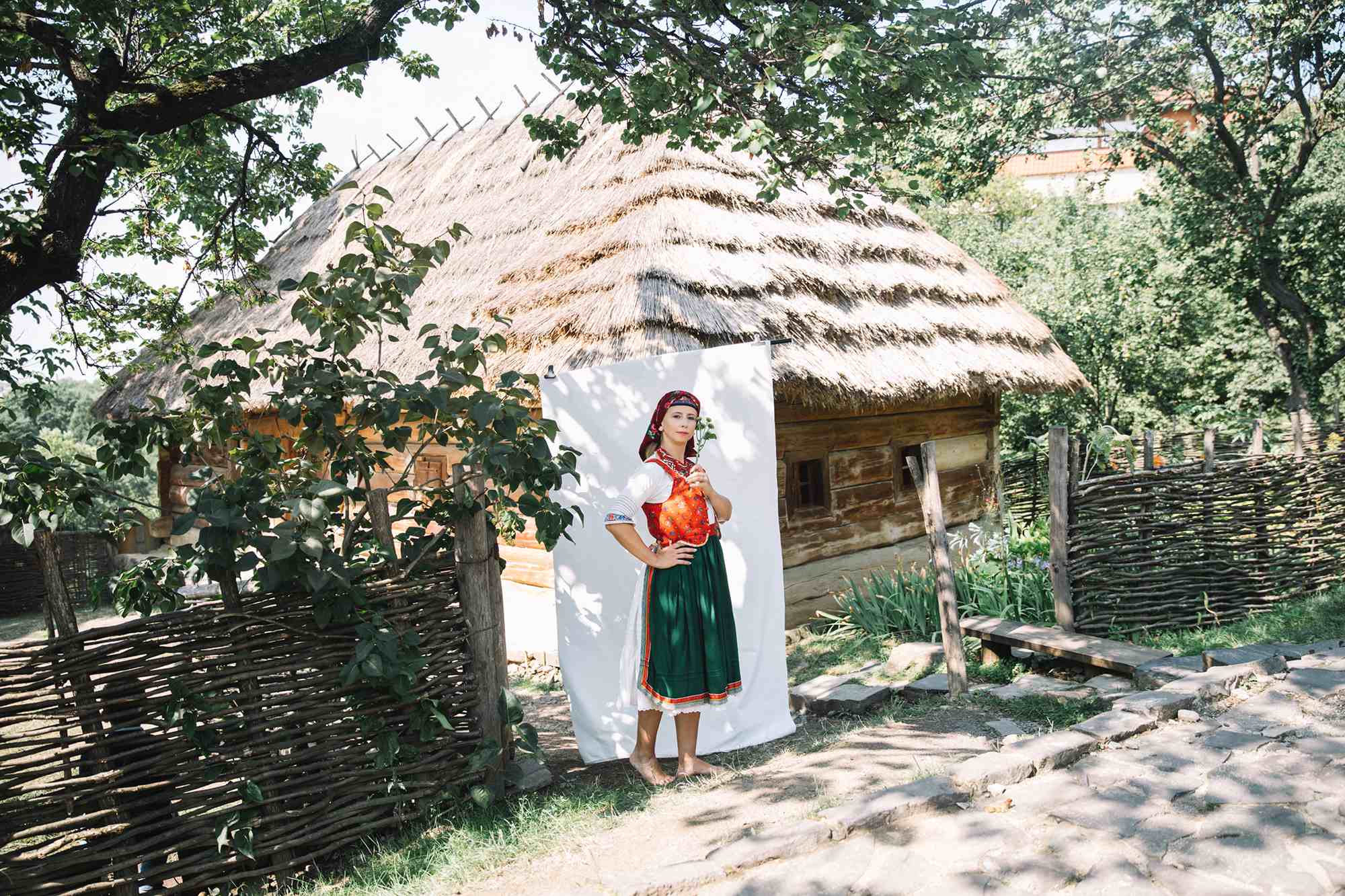
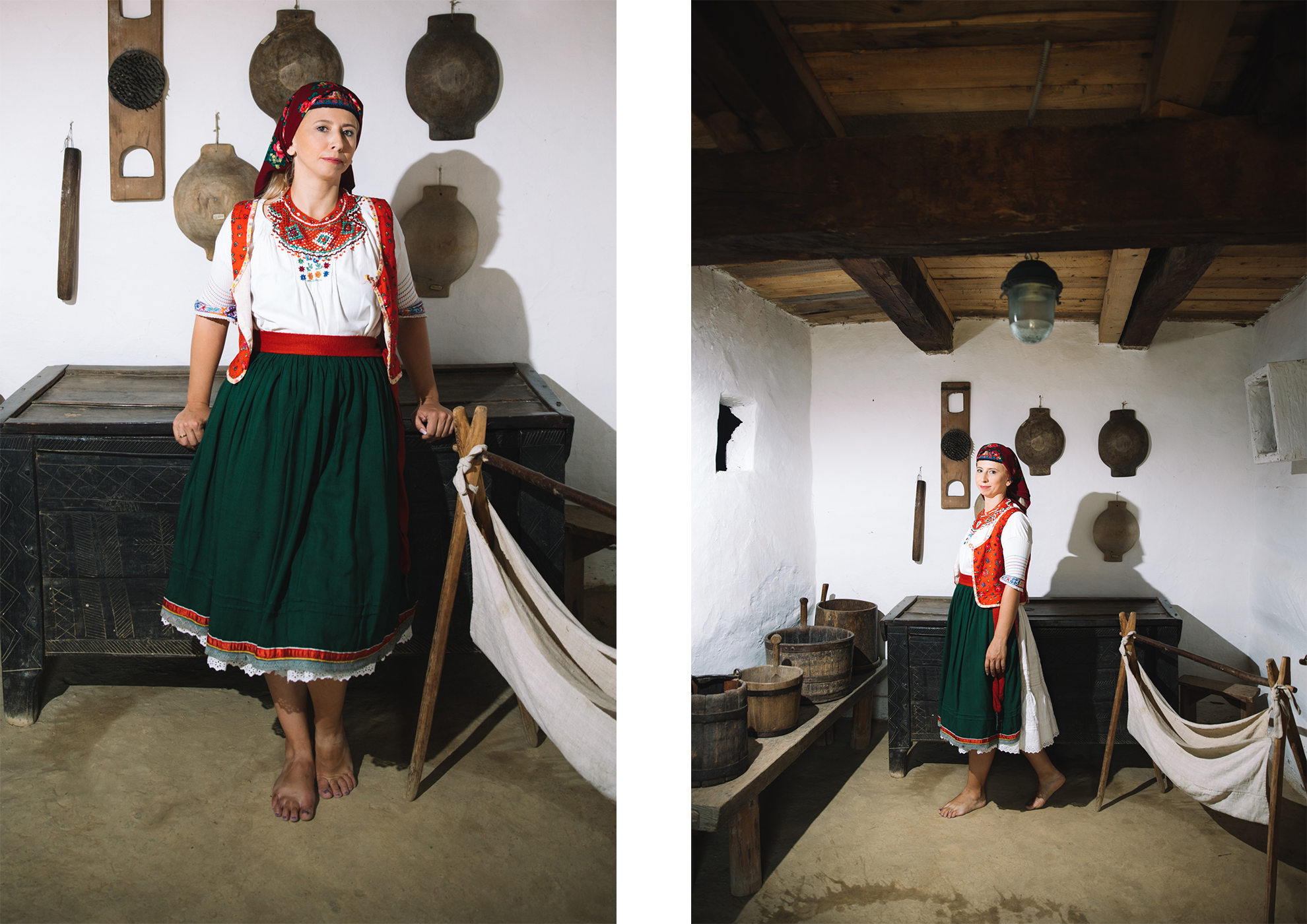
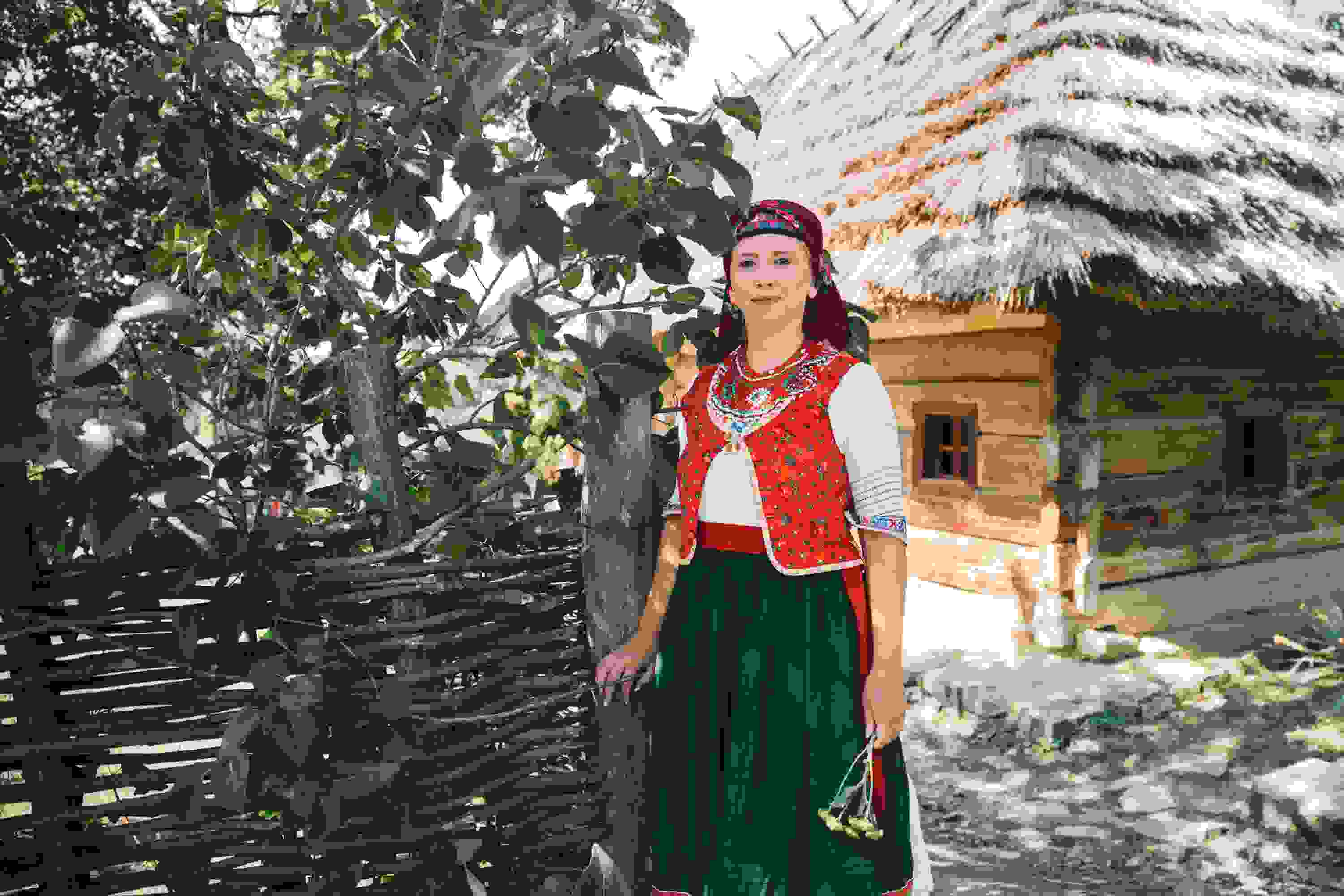
Alice Smyrna
founder and owner of a bike hostel in the village of Dubrynychi
I was born, grew up and still live in the village of Dubrynychi, Perechyn district. So the Uzh River valley is the most important place for me in the whole world. My granny comes from Khmelnytskiy region of Ukraine, Dad comes from Dnypropetrovsk area, and mom comes from Perechyn vicinity.
It was 20 years ago that I jumped into the rural tourism, so naturally I did some research on the way our ancestors lived and the activities they got involved into. That’s what I do in my own business, reproducing the traditions but on a touristic level.
Mukachevo district
The festal shirts of Mukachevo area dated by the first XX quarter century, they embroidered stylish flowers (roses, daisies). The peculiarity of such ornaments was their position: laid down in a row.
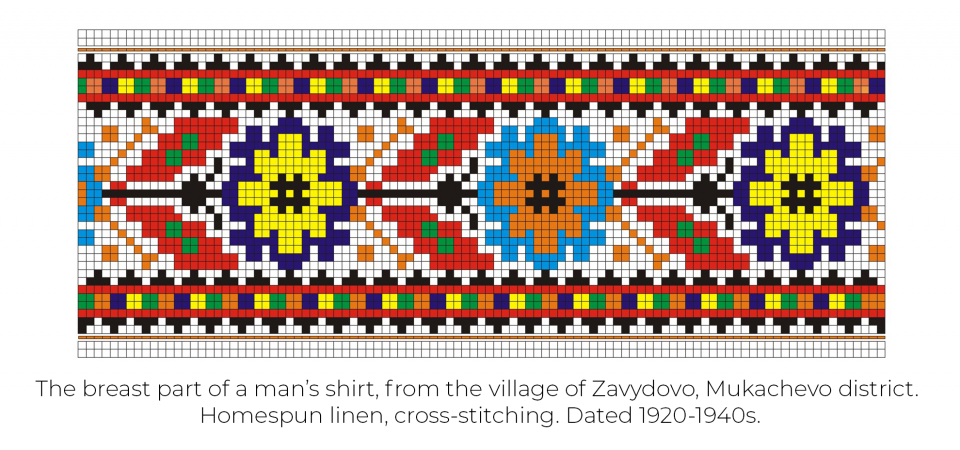
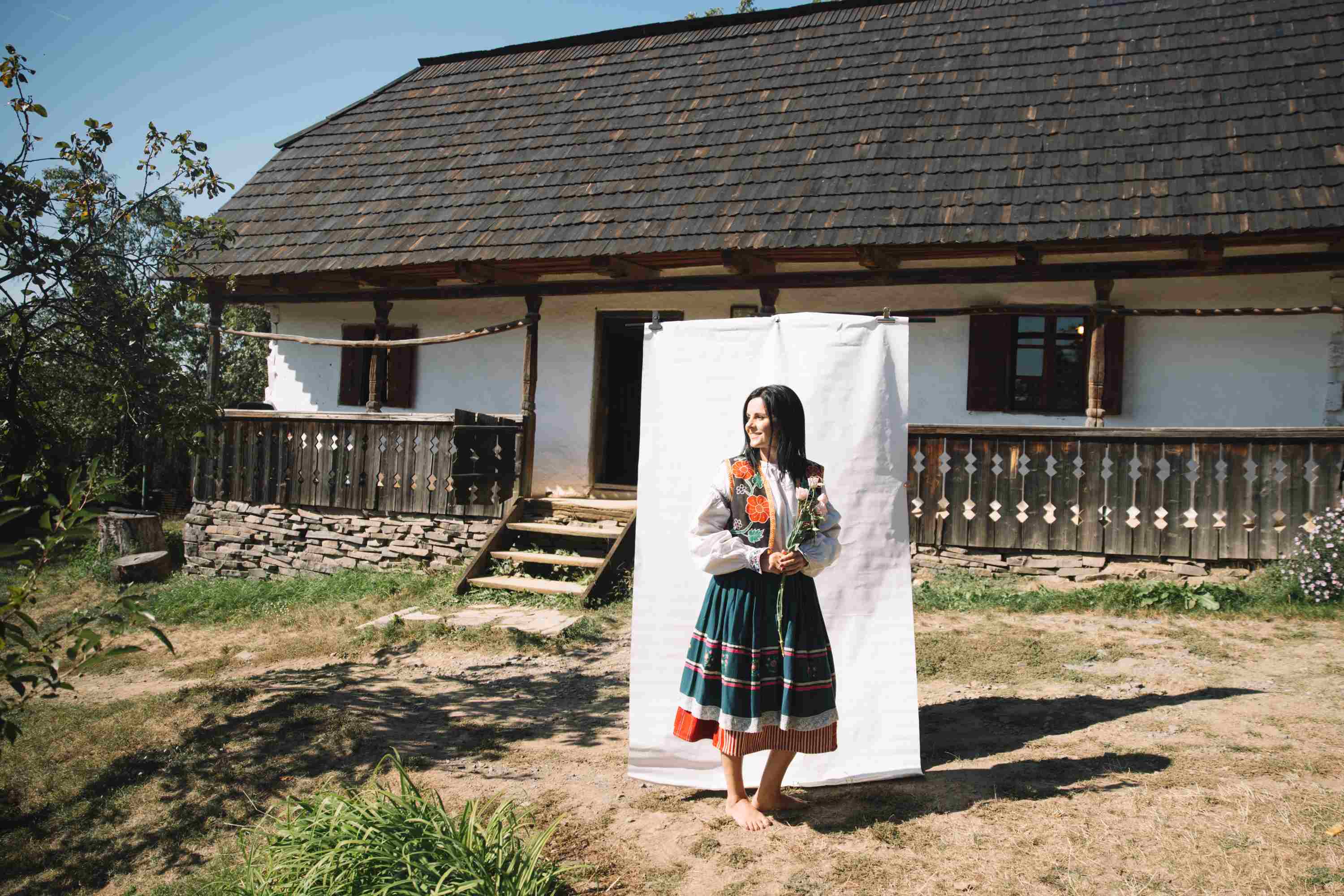
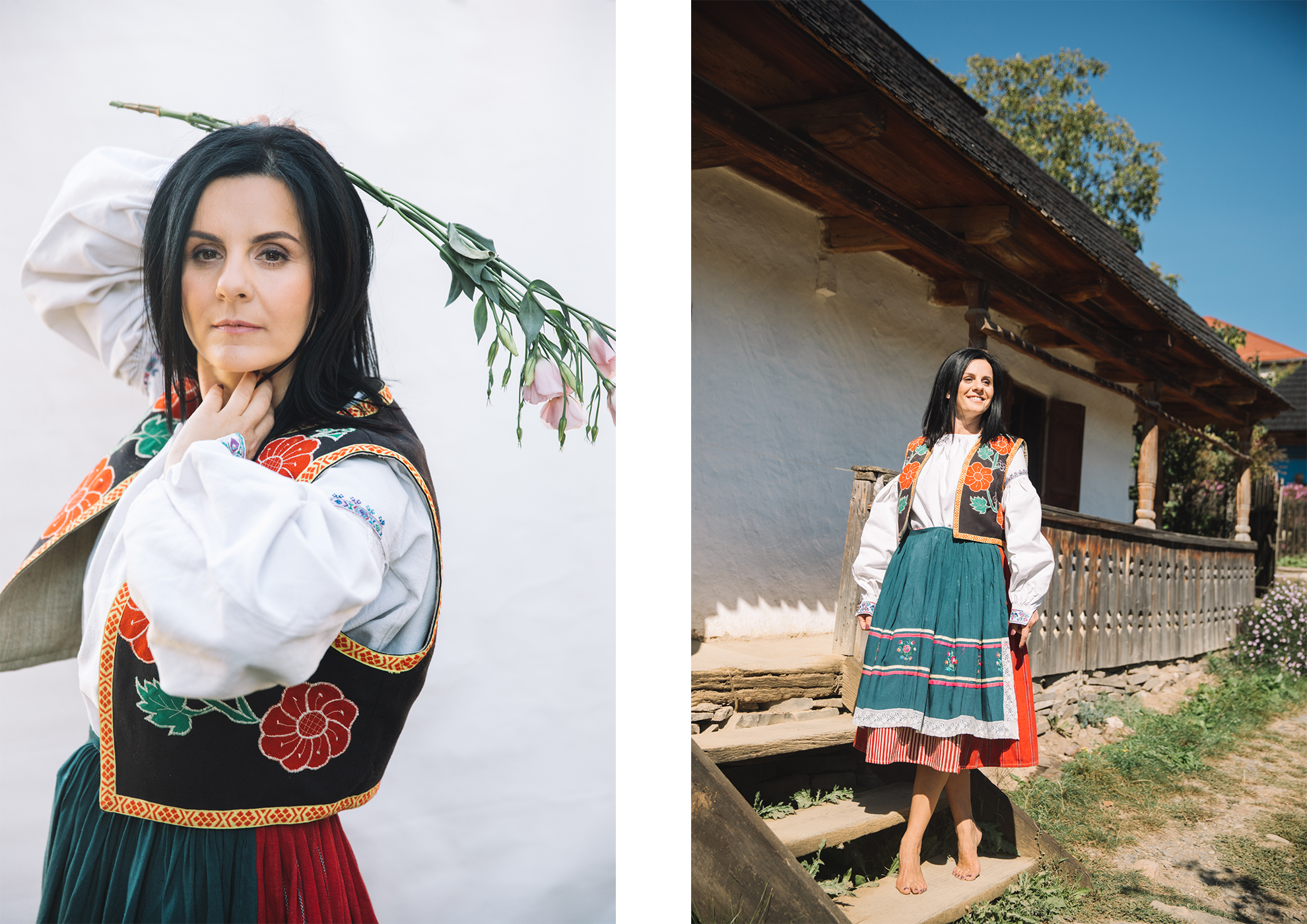
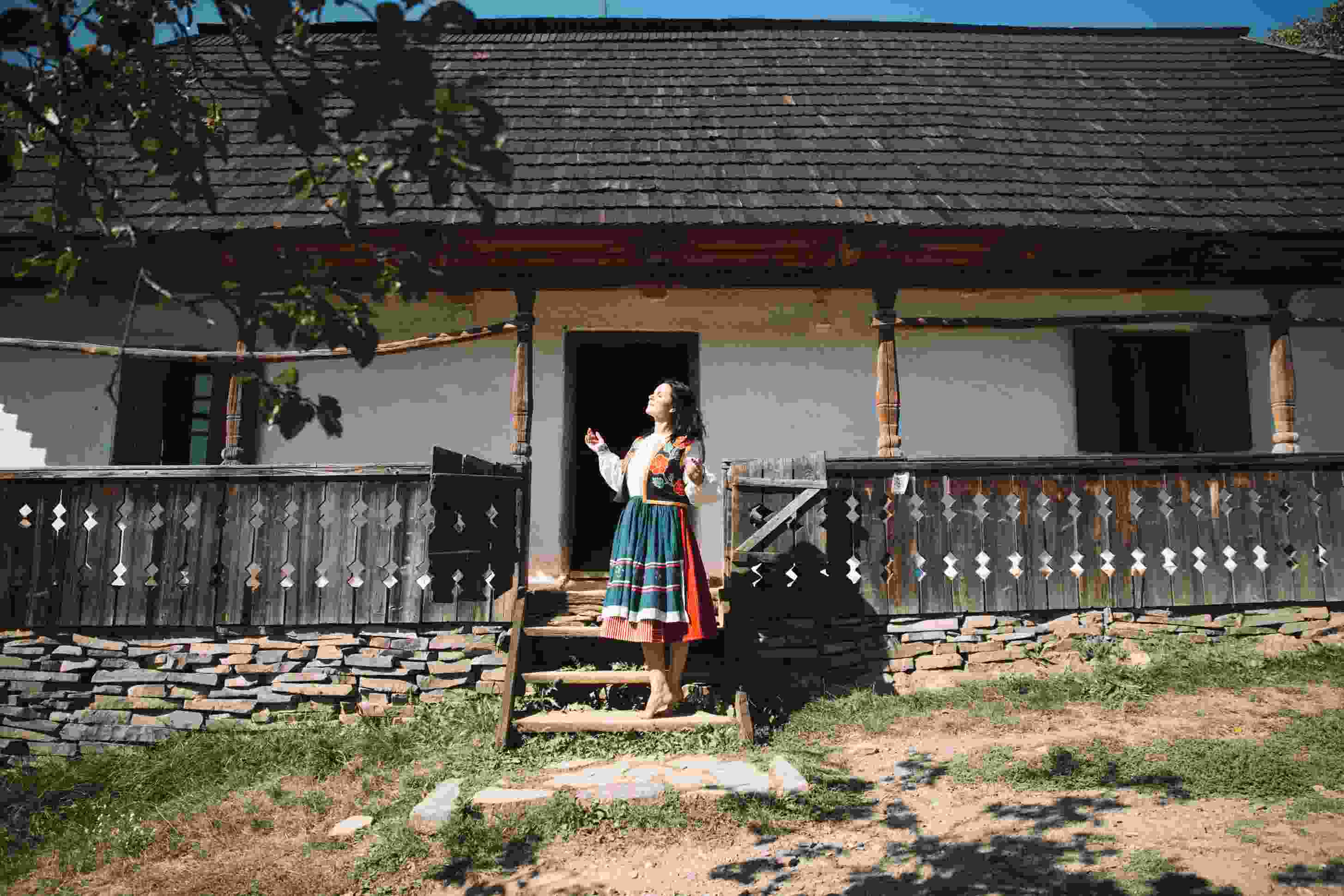
Olena Tsiva
director at Lika-Comfort company
I live in Mukachevo and I was born in Mukachevo district in the village of New Davydkovo. My ancestors once arrived as immigrants, invited by Count Schoenborn, being craftsmen from Germany. My mother’s granny and grandpa came from Tereblia and vicinity of Mukachevo.
I really love Mukachevo and I guess these roots are the most stable in my family. However, I have inherited a great passion to our Carpathian Mountains from my granny.
Residents of the Borzhava River valley. Irshava district
Women’s shirts worn in the Borzhava River valley are special for the embroidery on the sleeves, decorated with multicolored threads lengthwise and on the shoulders. The vertical lateral stripe, stitched along the outer sleeve seam was popularly called “doli rukavom” (i.e. “down the sleeve”). It was composed of diamonds stitched in a row. In this way, a lone diamond was followed by another one that had little diamonds near its upper and lower angles, stitched in pairs. Such a configuration of diamonds was popularly called “na zhabki” (i.e. on frogs).The diamond outlines in the multicolored embroidery works were framed with hemming bearing tiny diamonds and crosses and on both sides of the “frogs” they used to stitch two large or six smaller eight-petal flowers or rosettes.
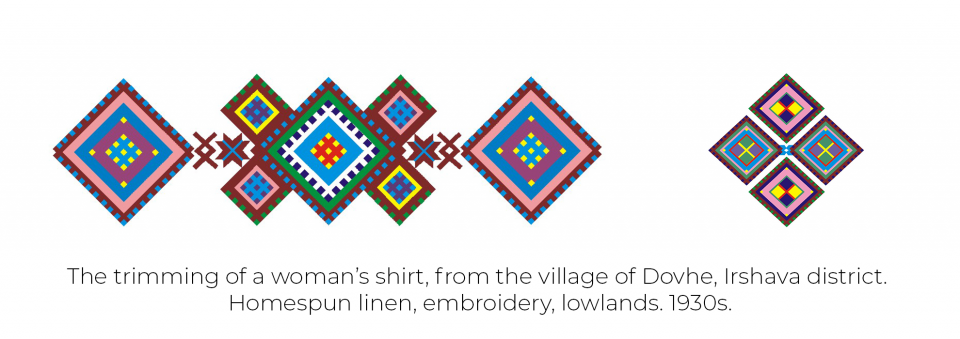
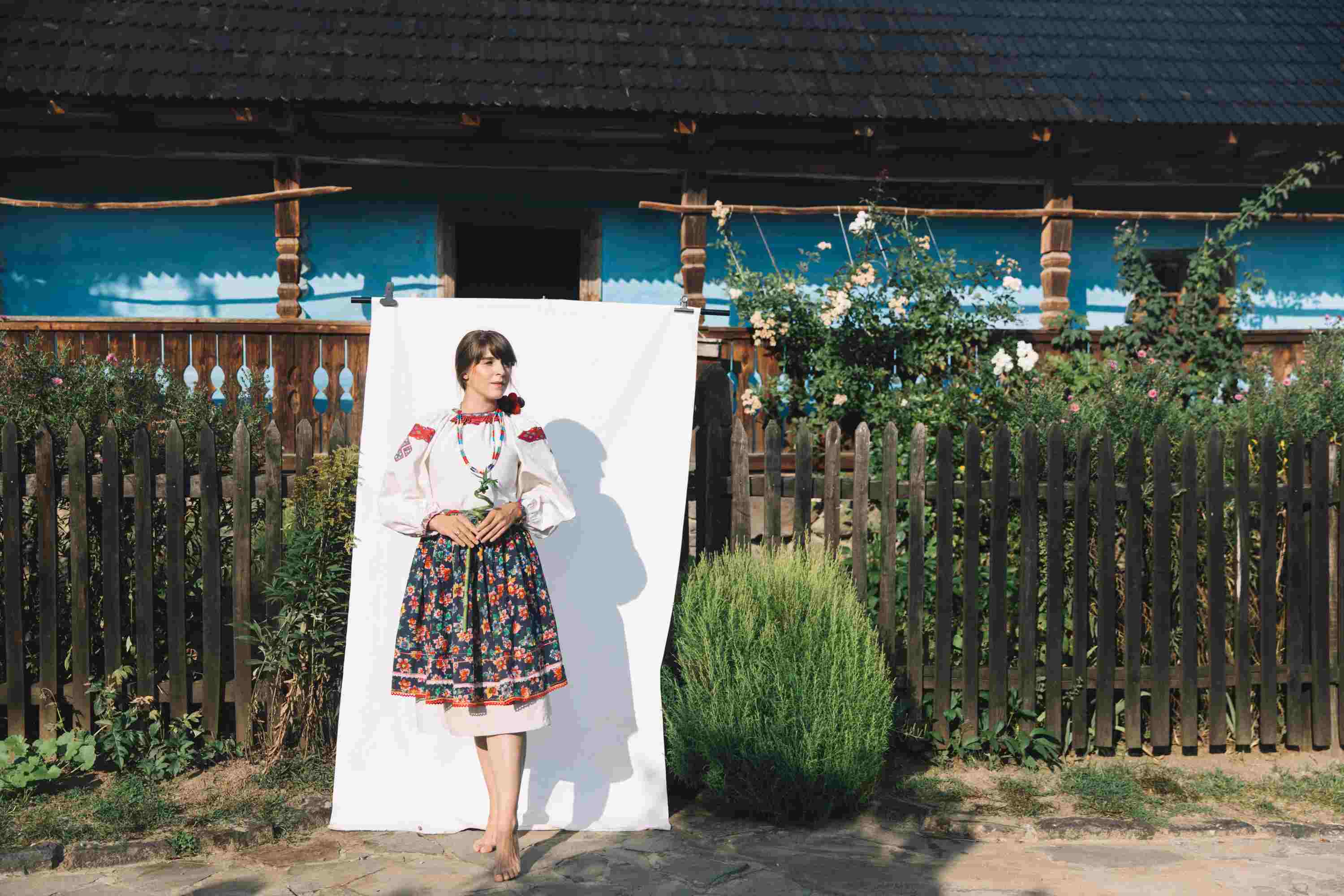
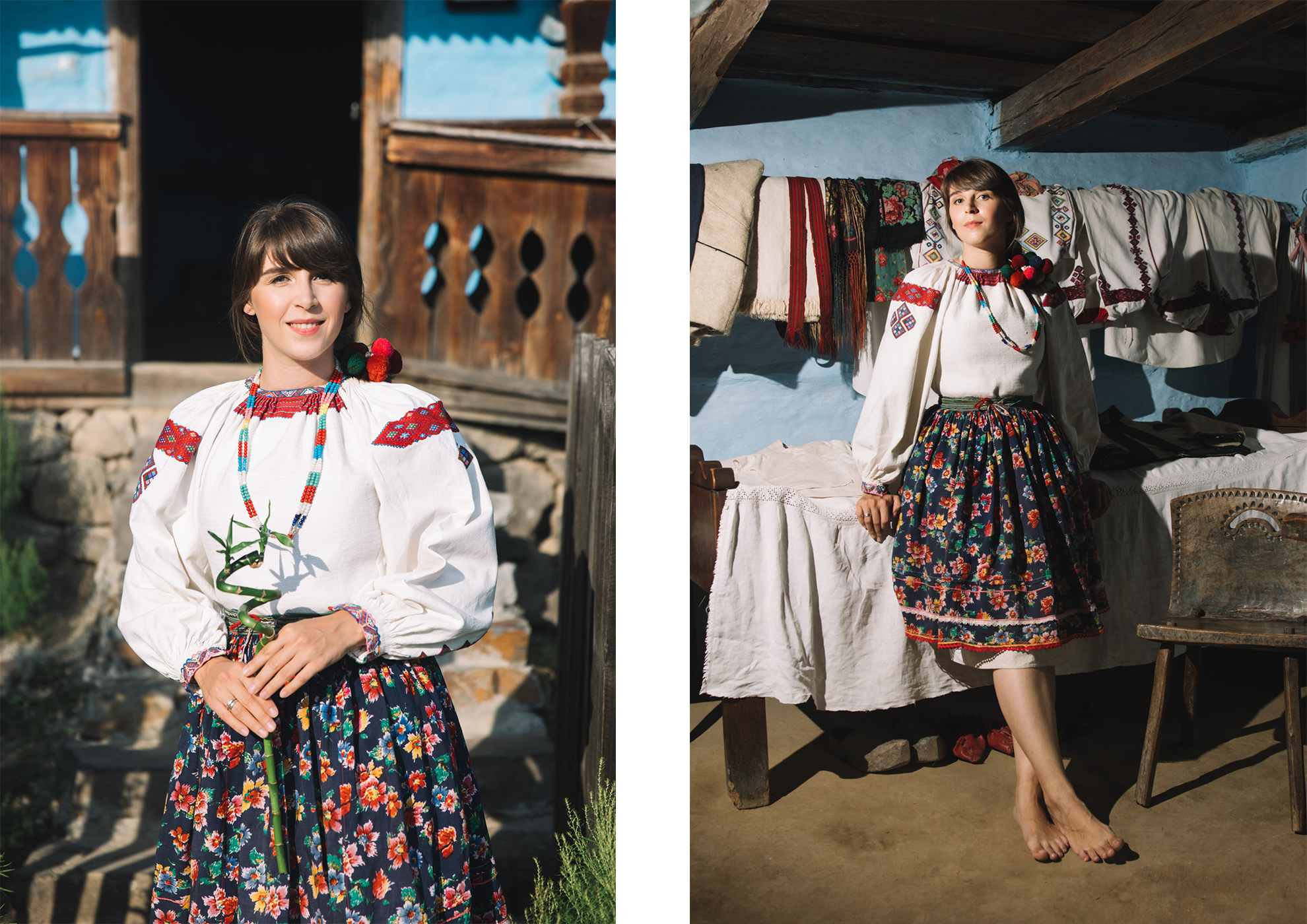
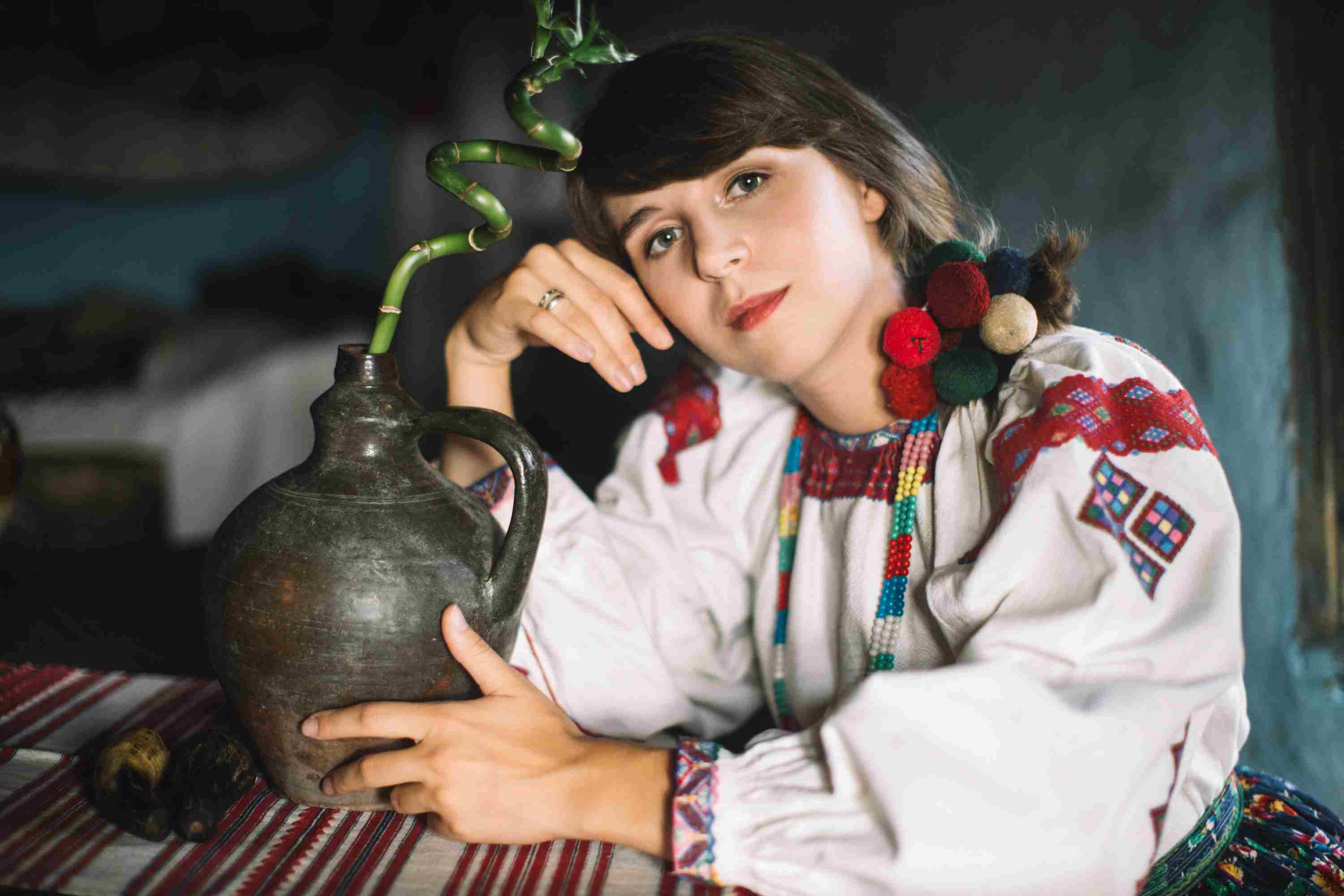
Rosana Tuzhanska
Chief Editor in the Varosh title
I was born in Mukachevo. My dad is from Irshava area. My mom is a Hungarian, her relatives and herself come from Vynohradiv and Berehovo areas. Now my family and I live in Uzhhorod. So I am a total Transcarpathian with roots in many of the region districts.
My warmest remembrances are related to Irshava area – about my granny and grandpa, unfortunately passed away. About the slow and settled way of life, people’s kindness and sincerity, the dirty-faced kids exploring the world around them from morning till night, trekking for the “yafinas” (blueberries) and grannies most delicious dishes. But I will not stretch the truth: I am a city dweller so Uzhhorod and Mukachevo are my native towns. I feel comfortable living here, working and leisuring.
The residents of the Turia Valley. Perechyn District
One of the most typical ornamental arrangements for Perechyn area was the stylish branch with largish flowers (ruzhas, i.e. roses), stems and leaves, framed by a stripe of ripples stitched with black threads. A tuneful completion in the shoulder strap were stripes made up of twin-leaved plants and leave branching, popularly called the “perok”.
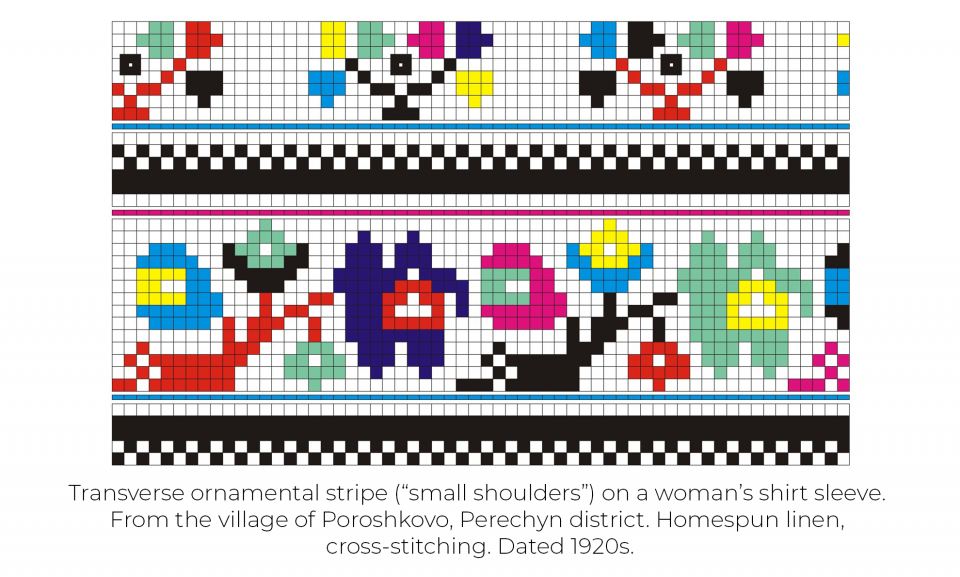
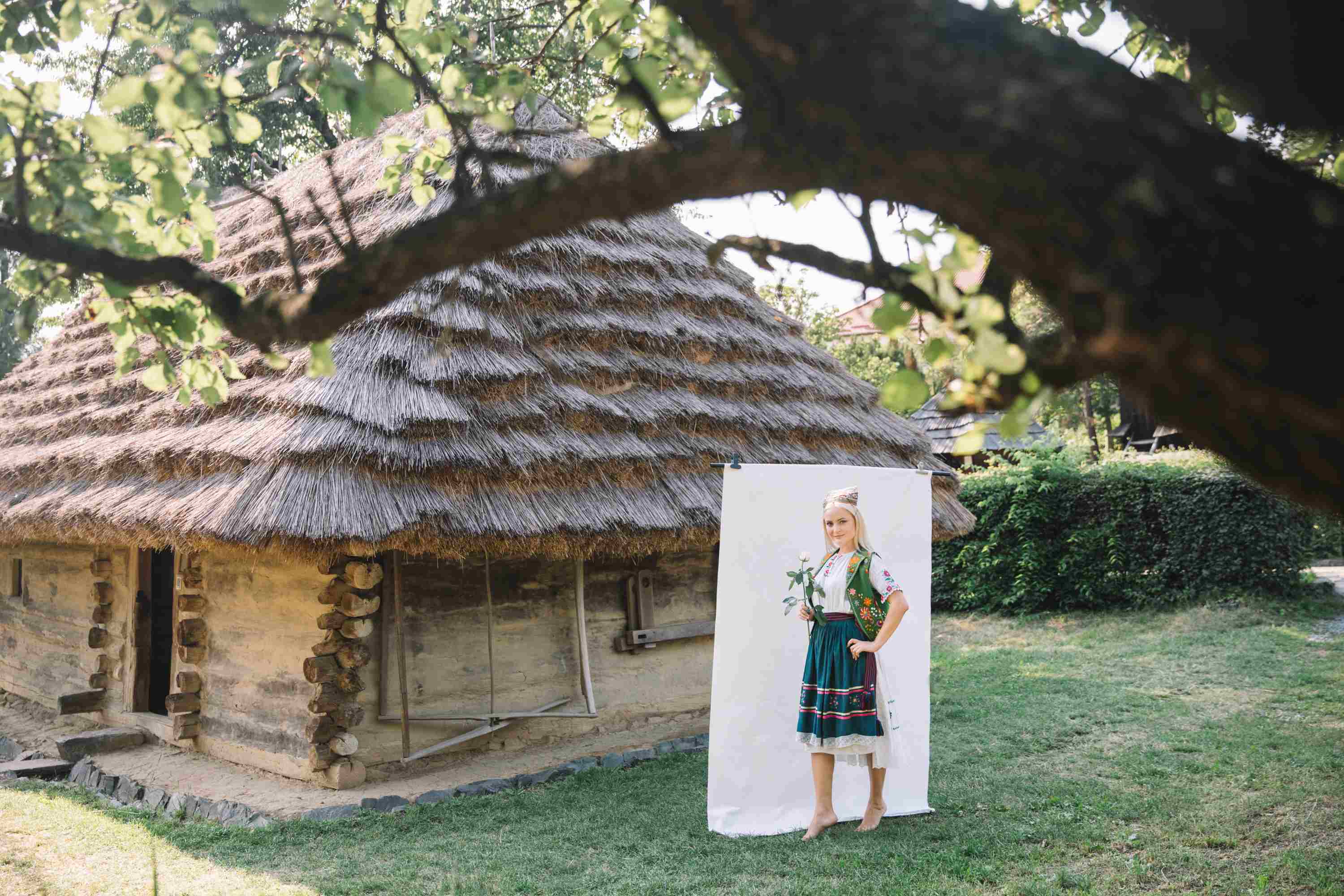
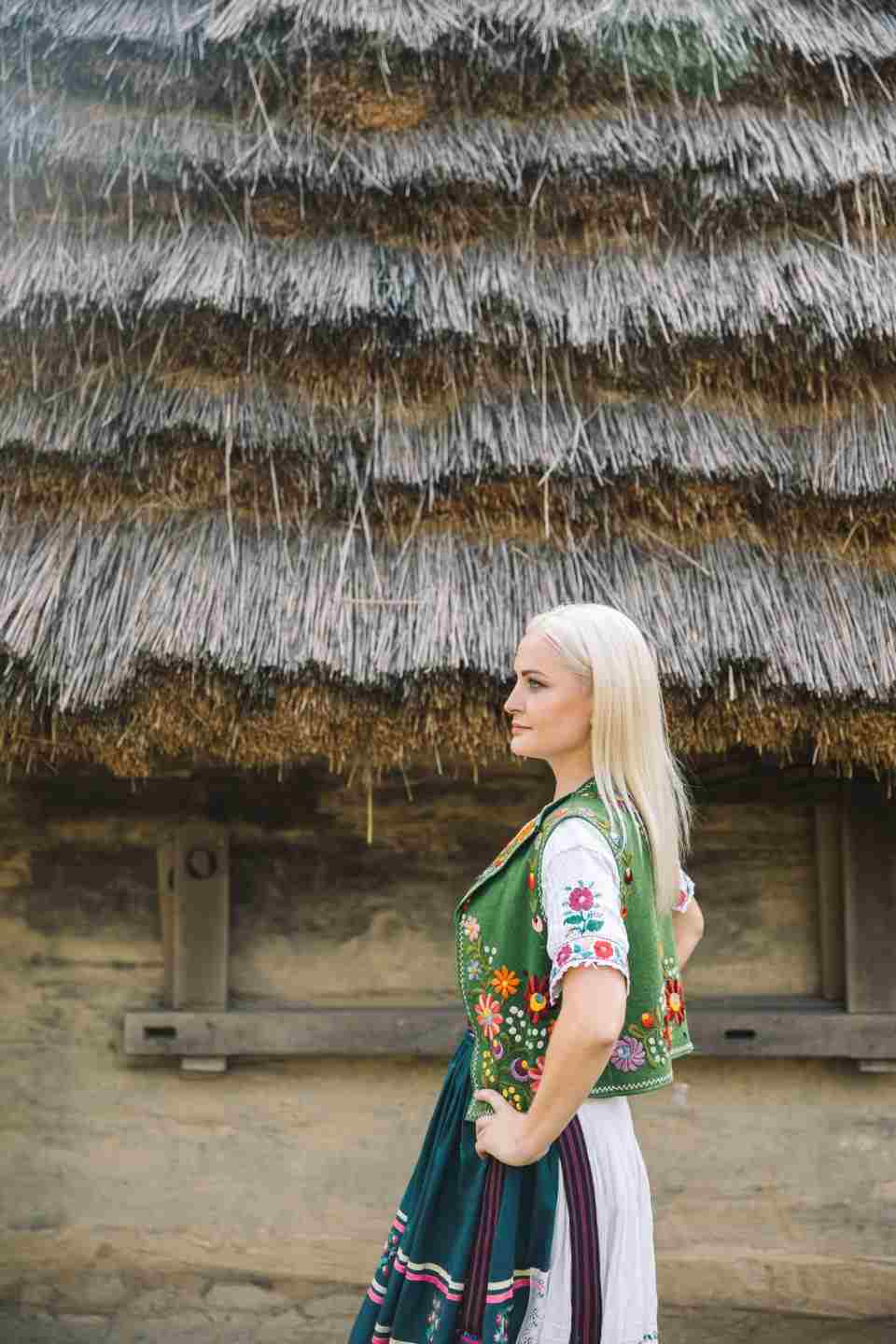
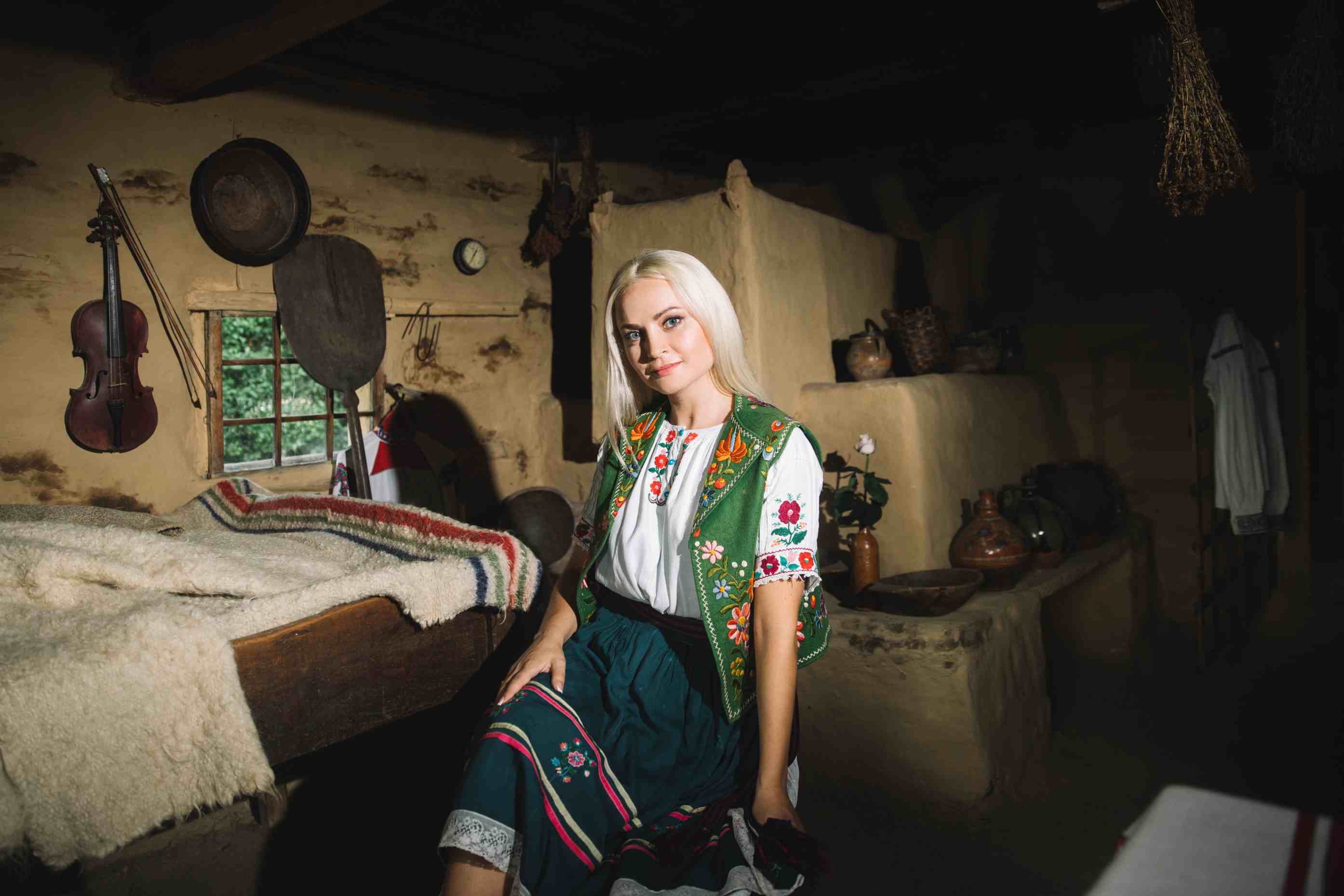
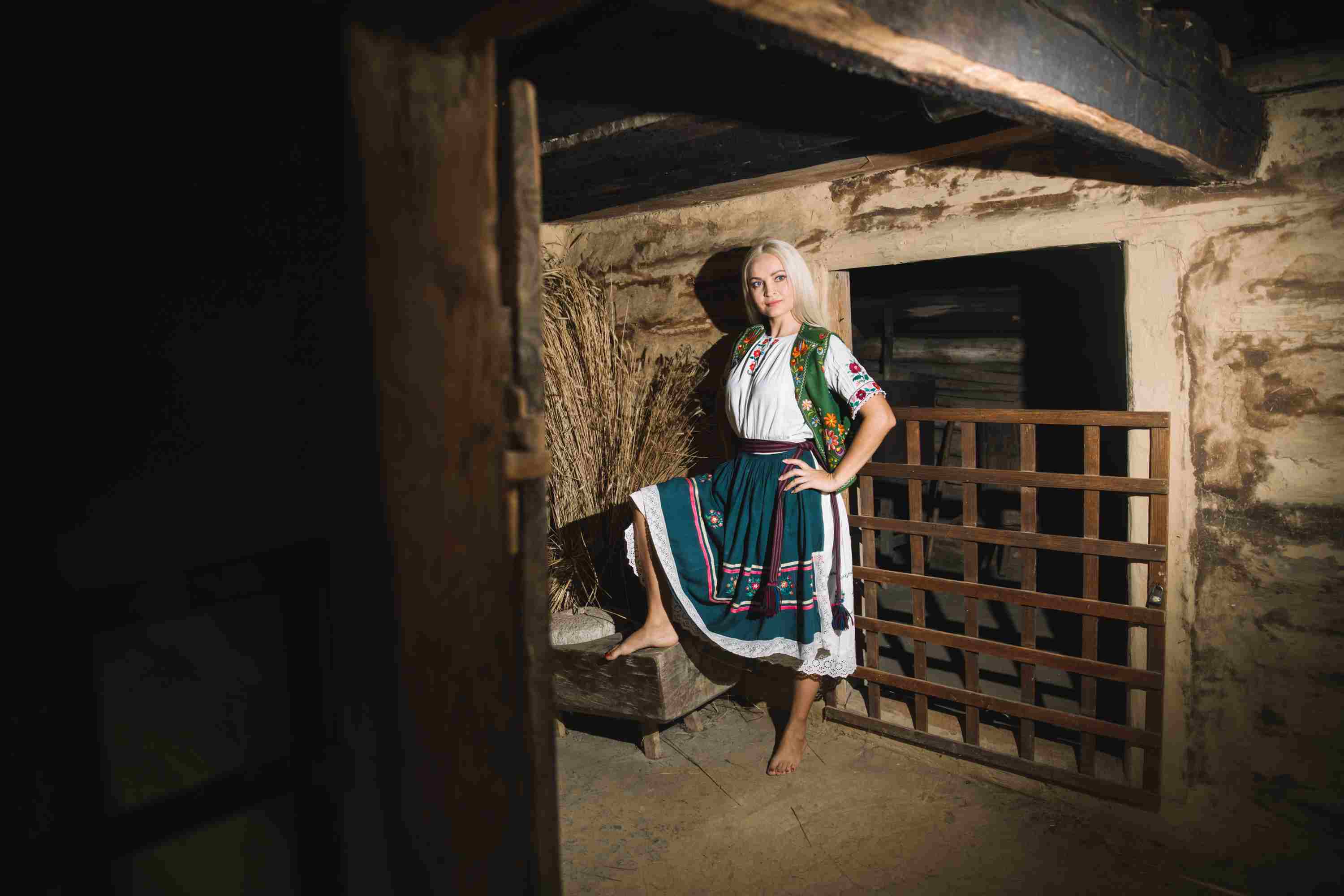
Inna Balog
an officer in the Ukraine Army, participant of the ATO events
I was born in Sambor but in fact I have been living in Perechyn all my life. All of my ancestors – mom, grannies, grandpa’s – are from the village of Poroshkovo. I don’t visit the area as often nowadays because of the lack of time but once, as a child, I used to be sent there for my summer vacations.
Romanians. Tiachiv district
The upper shoulder part of the sleeves in the female shirts worn by the Transcarpathian Romanians used to be decorated with transversal bands of embroidery. It has got some peculiar flair due to the ornamental stripe with black background and polychrome designs on it. It nicks in with the embroidery done in white on the white background. The accomplishment in the sleeve decoration is done with three separate flower patterns, the flowerpots.
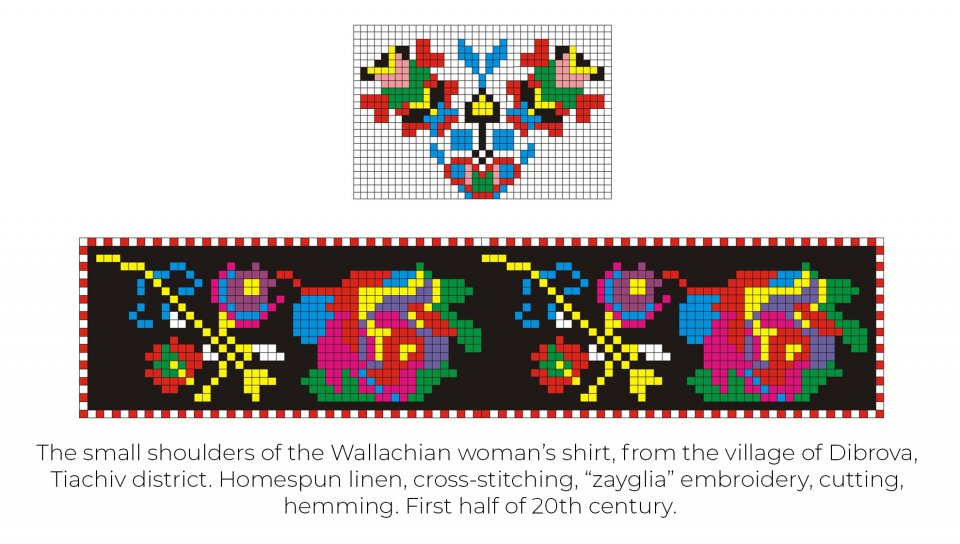
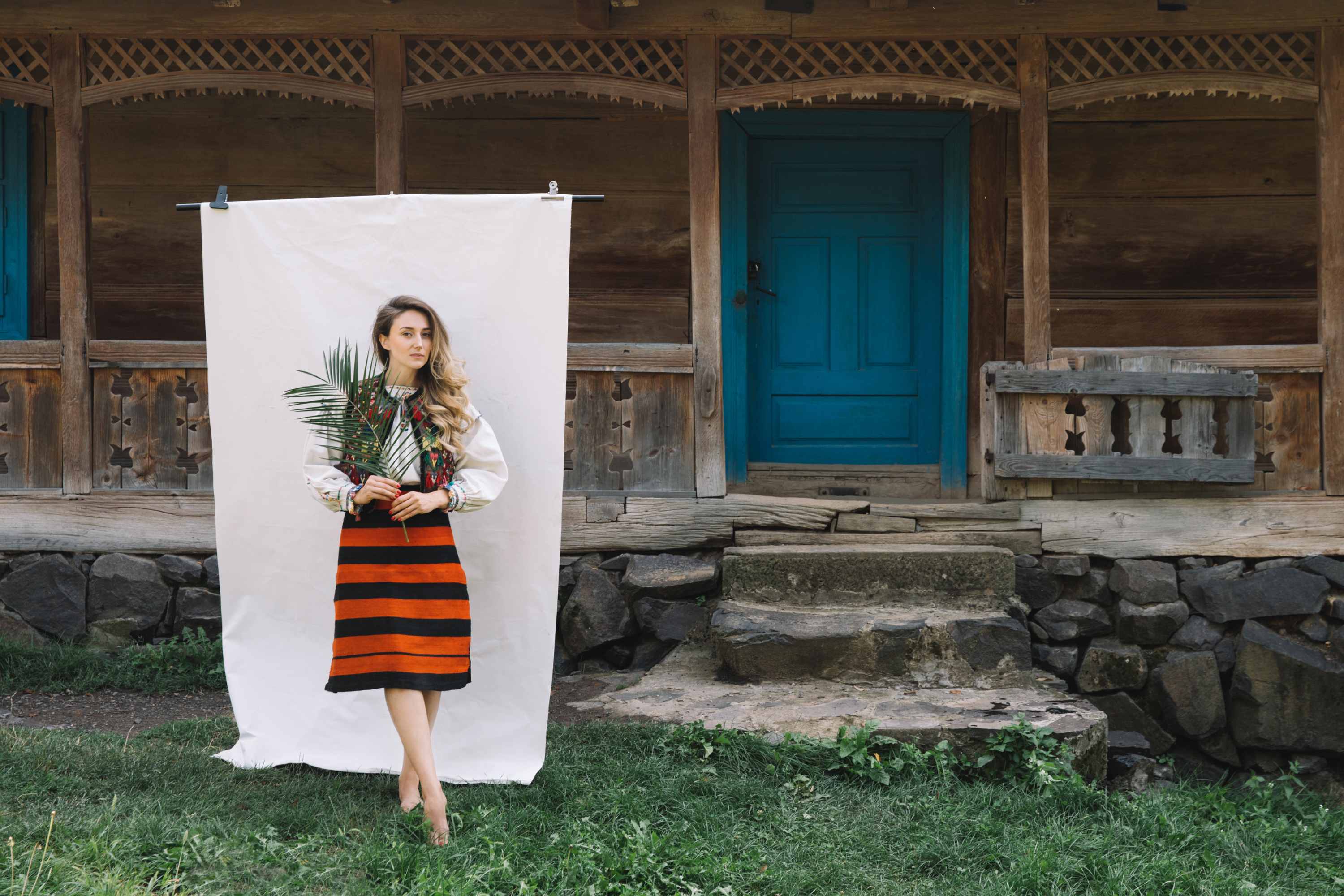
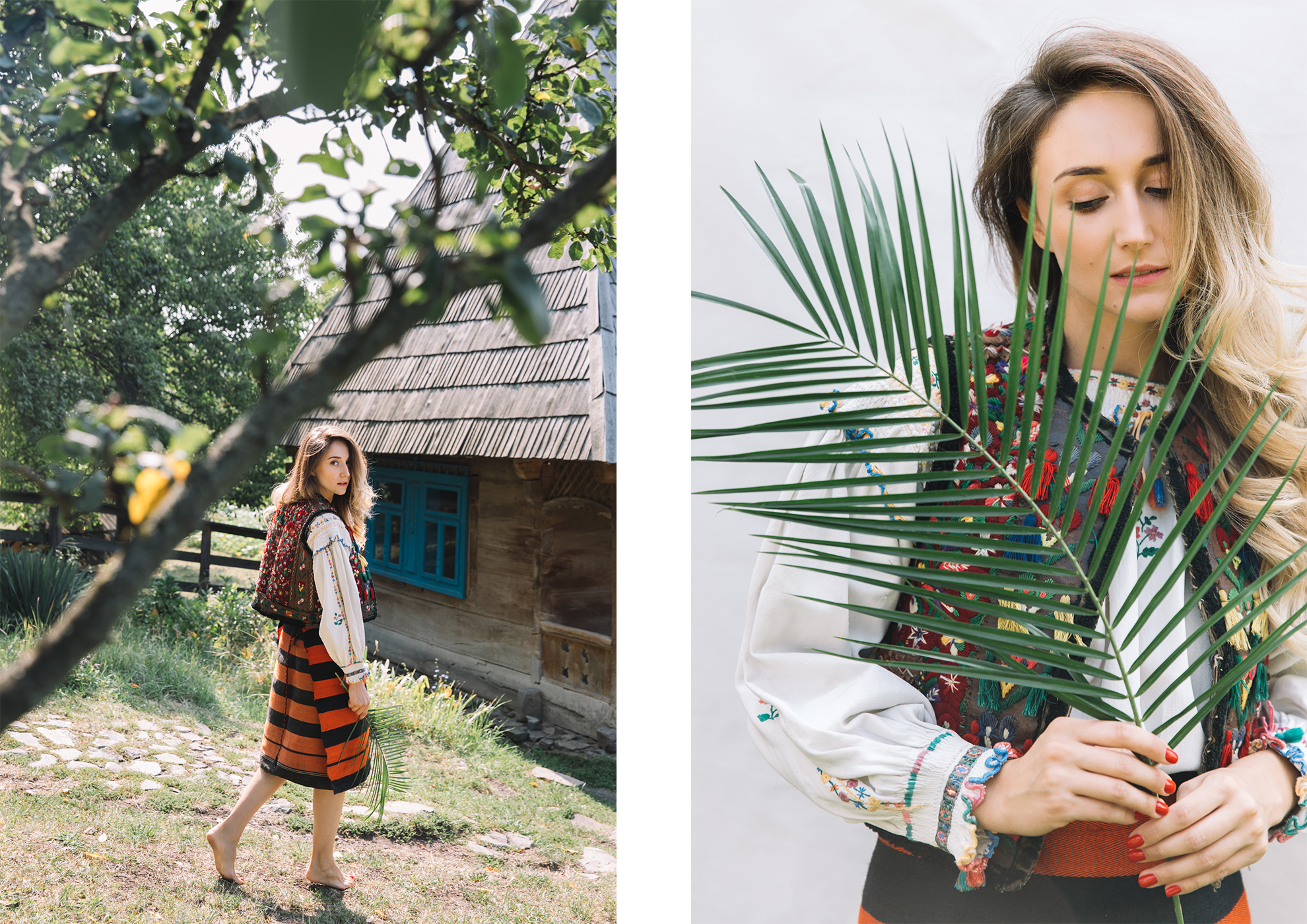
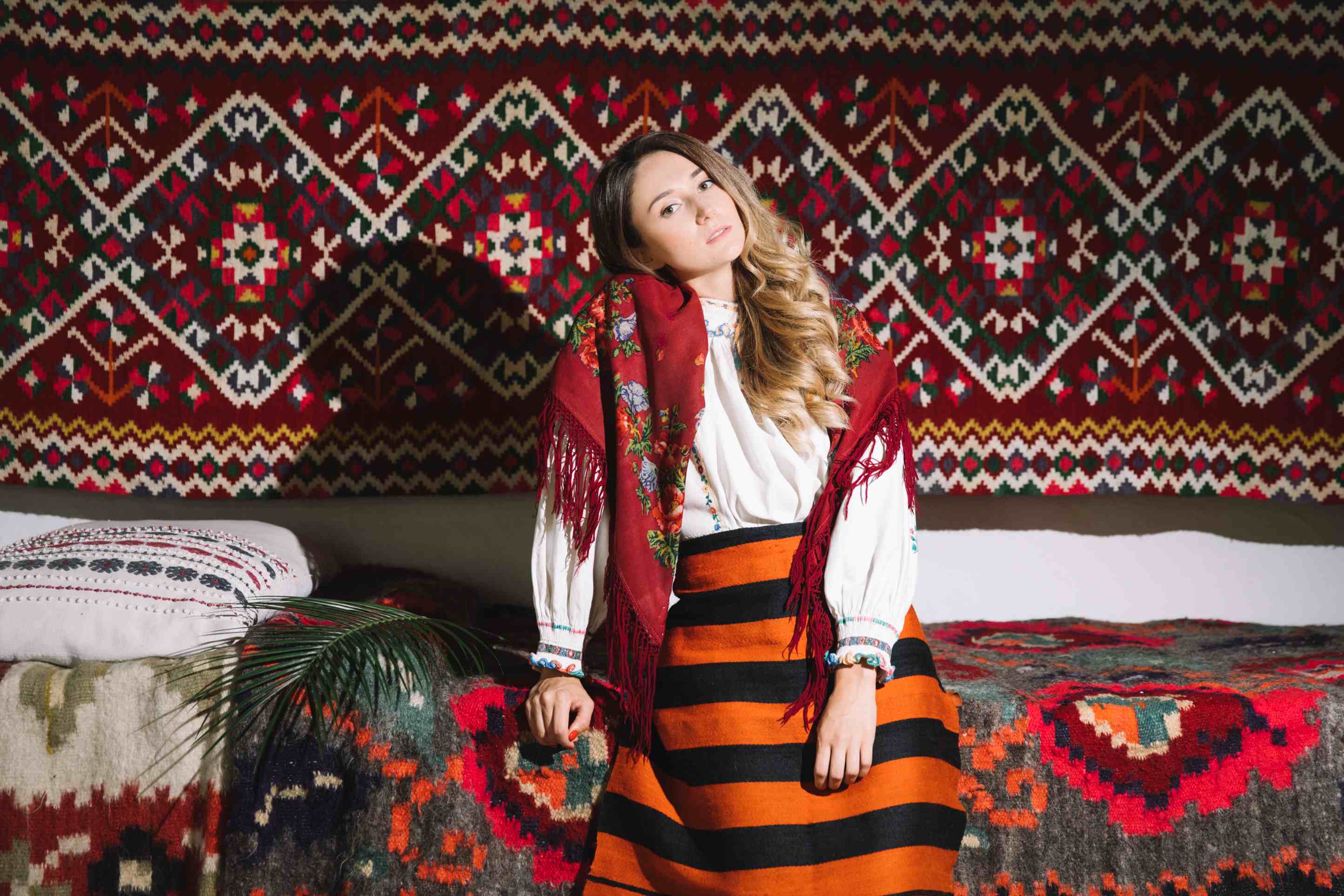
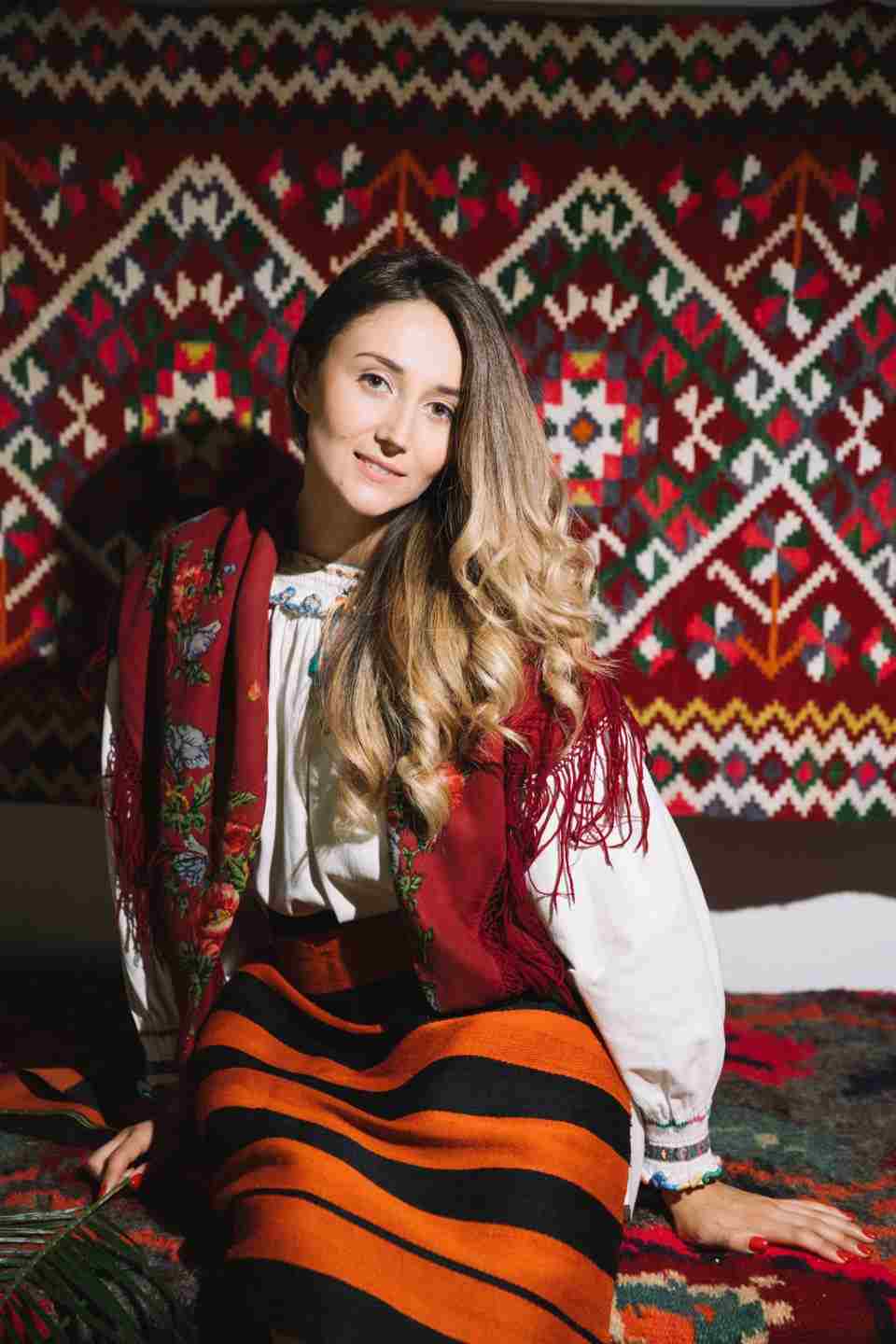
Maryna Bokoch
a project manager
My parents are from Tiachiv area. Dad was born and grew up in the village of Krichevo, and mom is from the village of Chumalevo. I was born in Tiachiv and lived till the age of 2 in Krichevo. Then we moved to Khust.
I moved to Uzhhorod as graduated from the secondary school, to become a student. And I stayed here. In March 2019, I moved to Ivano-Frankivsk and this fall – to Kyiv.
The Boyki nationality. Mizhhirya district
It is typical for the Boyki nationality of Transcarpathia to wear short shirts, featuring long sleeves onto cuffs, lateral lengthwise vent-hole in the bosom and a breast part with fine ruffling. The embroidery dated of late 19 – early 20th centuries it was typical to have 2-colored red and blue palette. Since early 1920s, the embroidery became polychromic. The geometric pattern prevailed – diamonds, crosses, rosettes.
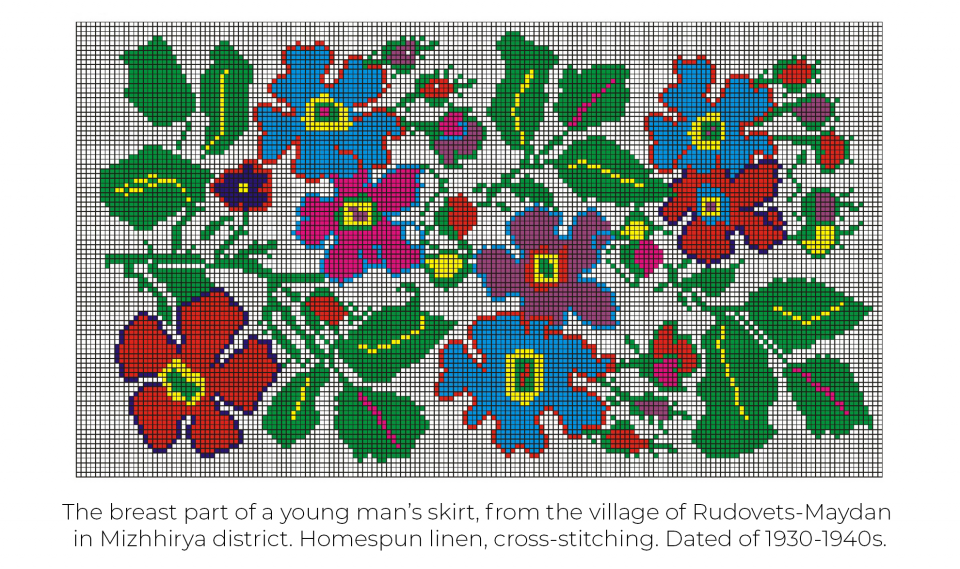
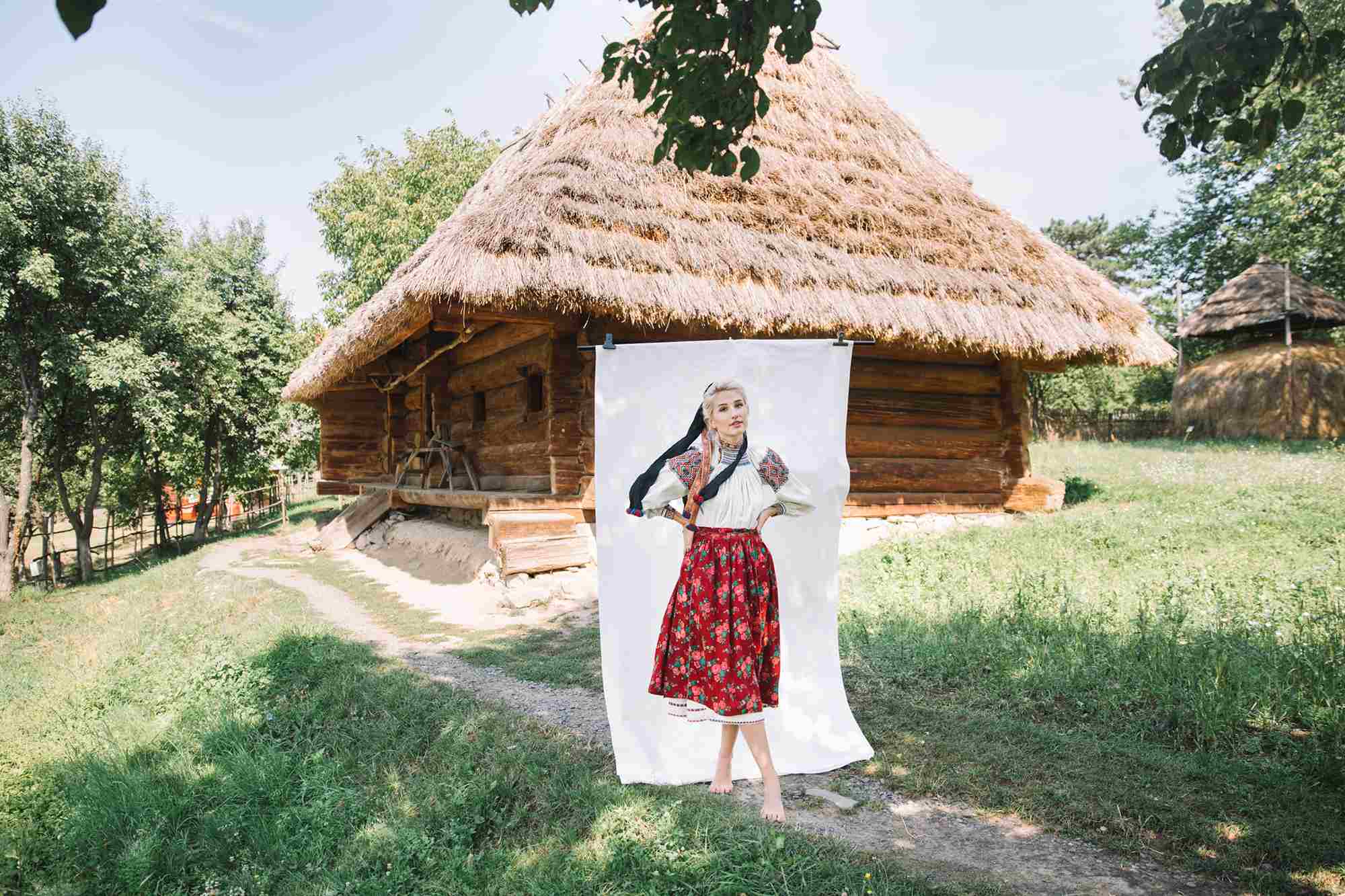
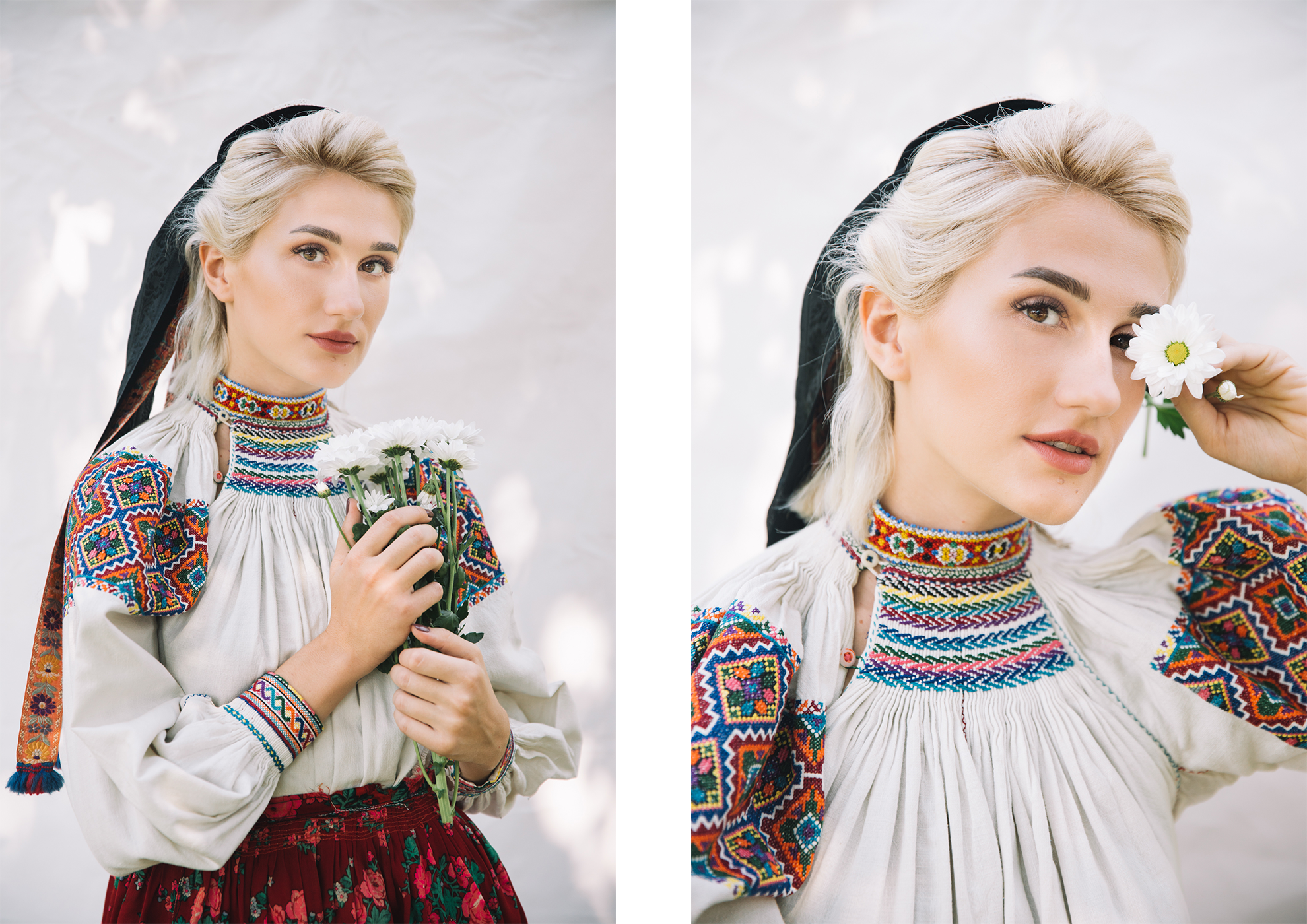
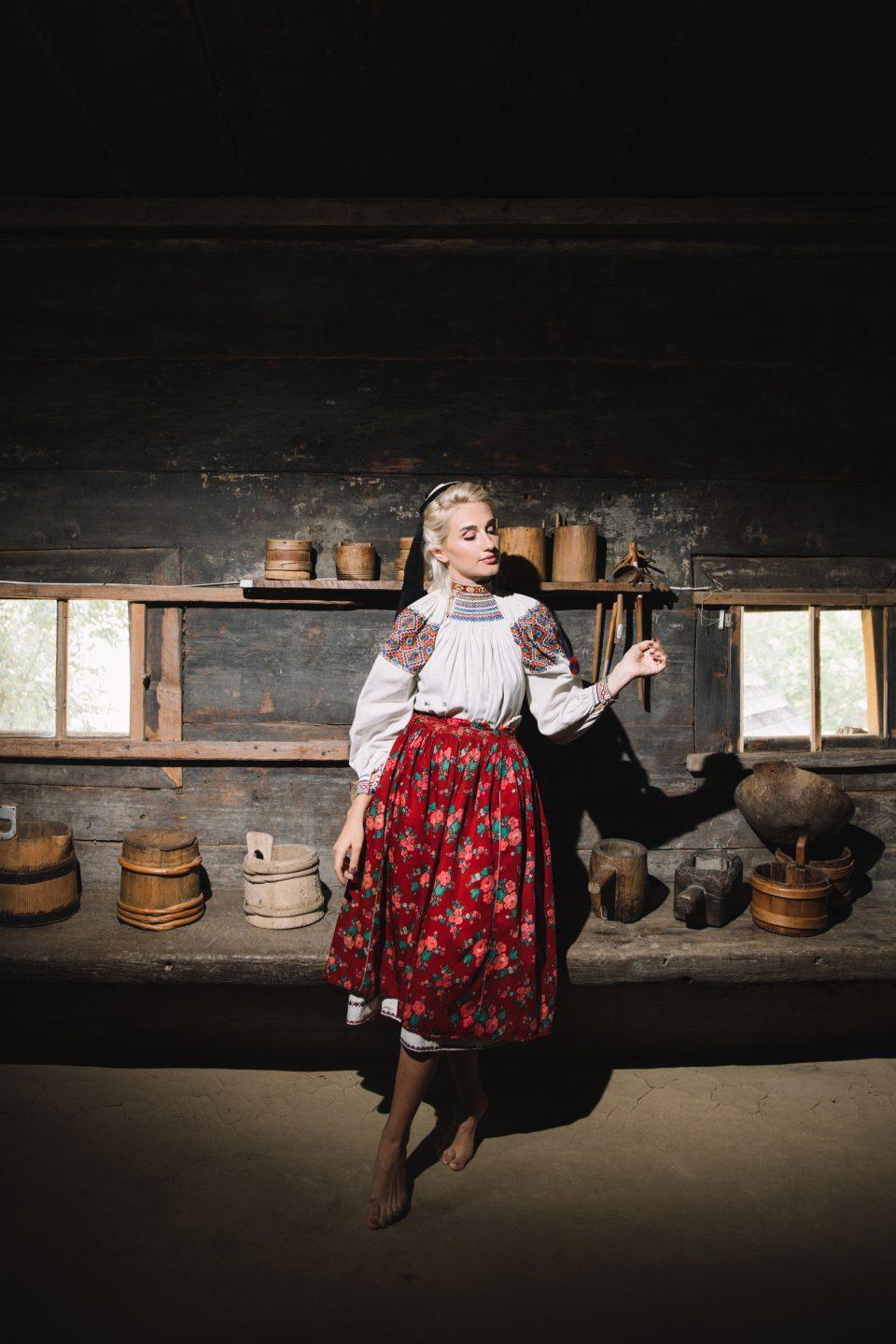
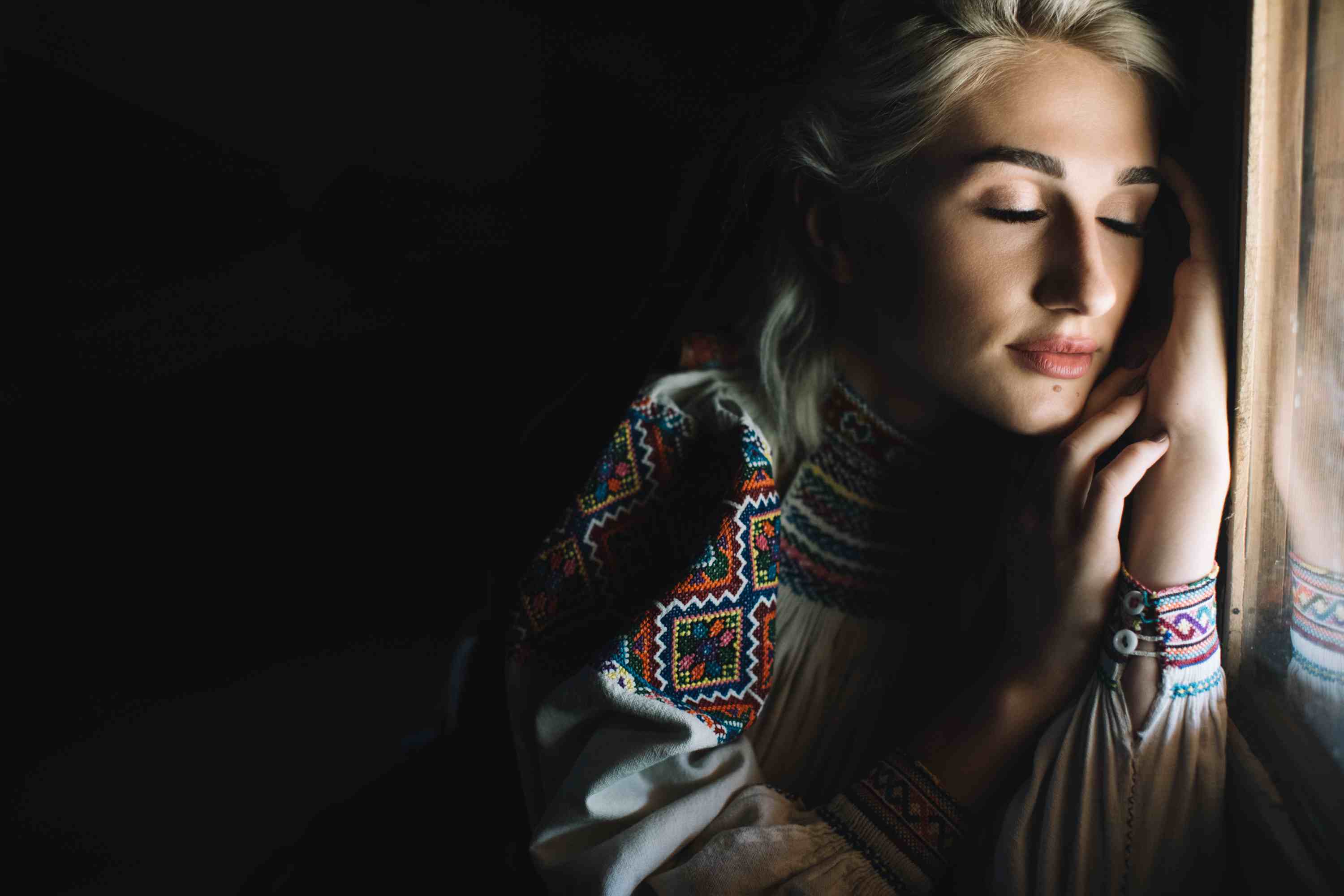
Romena Zavadiak
style designer, model, blogger
I was born in Uzhhorod but my ancestors come from Mizhhirya area: grandpa from Novoselytsia and granny from Studeniy. Unfortunately, my remembrances of that land are few, for we only used to go there in my early years.
My grandpa is currently writing a novel in notes, planning to publish it on his 80th birthday. The plot will include Mizhhirya area, his childhood, language and traditions.
∗∗∗
Finally, we are offering you to watch our short documentary on the project.
Disclaimer: the present material is presented by the civic community of “Institute of Central European Strategy” with the support by US Agency for International Development (USAID). Creating the material became possible with sincere support from the American people as provided via US Agency for International Development (USAID). The contents or the material is a sole responsibility of the civic community of “Institute of Central European Strategy” and does not necessarily reflect opinion of USAID or USA government. Reproduction and use of any part of this material in any format, including graphical, electronic, copying or using in any other way whatsoever is prohibited without a link to the original source.

Project author: Rosana Tuzhanska
Photo: Serhij Mazur
Video: Anton Ryzhykh
Makeup: Octavia Vashchuk, Tatiana Samus, Marina Polovko
Help in creating the material Vasily Kotsan, director of the Transcarpathian Skansen
Description of costumes: Tetyana Sologub-Kotsan, Head of the Museum’s Scientific and Educational Department
Digitization of the ornaments: Olexandra Garkusha





